Home / Destinations / The Philippines / Guide to Intramuros, Manila: 13 Spots You Need to See

Guide to Intramuros, Manila: 13 Spots You Need to See
Find the ride you need in.
Uncover the past and present of Manila’s Intramuros neighborhood. Read more to discover 13 spots you have to see when visiting.
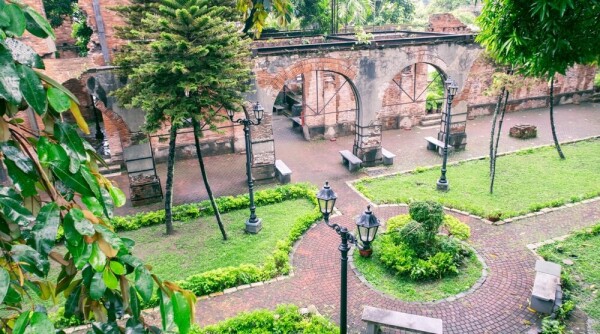
Even though Manila — the vibrant capital of the Philippines — is modernizing at a rapid pace, its premier attraction is still one of its oldest: a section that is aptly called Intramuros. A literal translation from Spanish means “within the walls.” Considering it was the Spanish who built the place, it’s a fitting description for this walled neighborhood that was once the center of Spanish activity.
These days, Intramuros is the site of some of the most interesting historical and architectural tourist attractions in Manila. Below are 13 of the most visit-worthy spots in Intramuros, along with a description of why you should see them for yourself.
- A brief history of Intramuros

To fully appreciate Intramuros’ importance both to Manila and the Philippines, a brief history lesson is in order. Knowing its role and context in history will transform the quaint stone walls into a living history book.
Built by the Spanish in the late 16th century to protect the city from invasion, Intramuros was originally the seat of government of the Captaincy General of the Philippines . Within its protective walls, they built numerous universities, churches, and other notable buildings. Its port served as a hub for the import and export of goods.
After the Spanish-American War in 1898, the Philippines came under American rule, serving as a fortified outpost until December of 1941, when it fell to invading Japanese forces.
The battle resulted in the retreat and eventual surrender of American and Filipino troops, who were subjected to the ill-fated Bataan Death March.
In 1945, American and Filipino forces returned, liberating the city at the cost of over 100,000 Filipino, Japanese and American casualties in the one-month-long Battle of Manila.
The heavy bombardment also resulted in the near complete razing of the city, with the San Agustin Church the sole surviving building.
Having an idea of the past glory and struggles of this compact neighborhood surrounded by the modern metropolis of Manila, will no doubt enhance your visit to the sites listed below.
- Fort Santiago
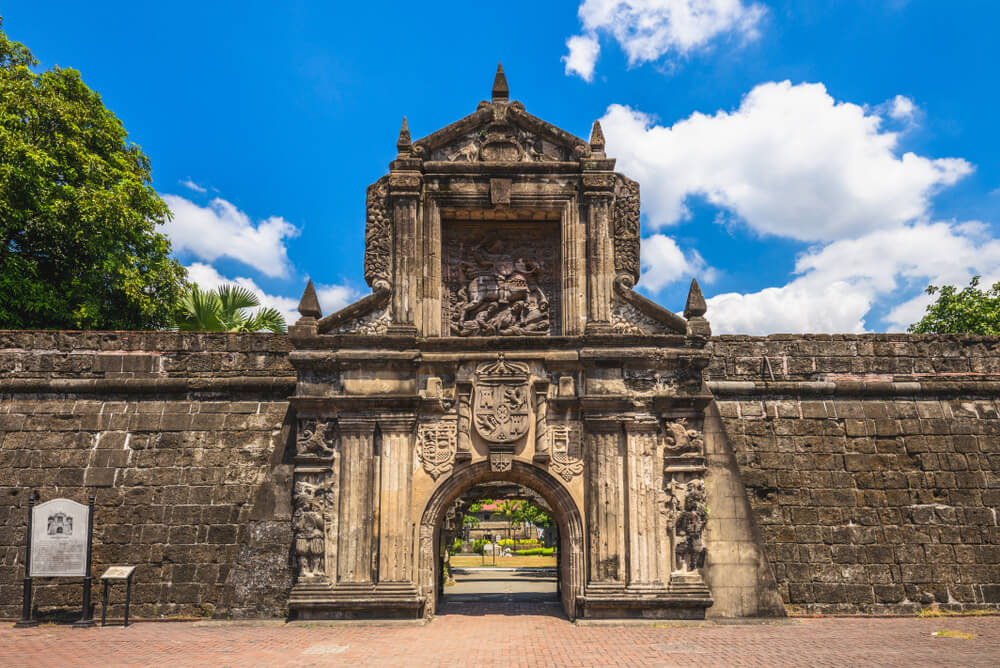
The quintessential stop on a tour of Intramuros is the mighty garrison of Fort Santiago. To this day, it still provides a commanding view of the mouth of the Pasig River.
It was once the premier fortification, home to batteries of heavy cannons, as well as a storehouse for spices and other valuable goods. Many prisoners were held in its dungeons, including national hero Jose Rival, who fought against colonial rule and was imprisoned here before being executed.
Today, Fort Santiago sees far more tourists than cannonballs.
The park is a historical landmark that features a visitor’s center and the Rizal Shrine. However, most visitors are content to take a leisurely stroll around the park and ponder over the contrast between the ancient stone bastions and the modern city that lies just across the river.
The fort’s various dungeons, palisades, and ornate reconstructed gates make for some great photo opportunities and serve as a distinct tribute to the extensive history that took place on this site.
- San Agustin Church

Technically known as the Archdiocesan Shrine of Nuestra Consolación y Correa, this massive house of worship was the only one to survive the tragic razing of the city in 1945.
Built in 1607, this is the oldest stone church in the country. As such, it is one of only four churches that make up the collective UNESCO World Heritage Site: Baroque Churches of the Philippines.
If its resilience through the ravages of time and war doesn’t impress you, just step inside, and the incredibly ornate interior will. Designed by a pair of Italian architects, the cavernous space is filled with Parisian chandeliers, ivory insets, sunken panels that appear to be in 3D, and a massive pipe organ.
It’s easy to see why a recent online poll voted San Agustin Church the most beautiful building in the Philippines.
- The Manila Cathedral

If visiting religious buildings is your thing, you won’t want to miss the enormous Manila Cathedral.
Though the current structure only dates back to the late 1950s, it is the eighth iteration of a series of churches that were built — and subsequently destroyed — on this site.
It’s an active Catholic house of worship, and a famous one at that, where several former presidents have lied in-state before their funerals. It also has the distinction of having been visited by the Pope in 1981.
The striking architecture will appeal to believers and non-believers alike. The northwest facade is a replica of the previous cathedral, and artistically sculpted statues adorn the sanctuary and the grounds. It contains over 130 stained glass windows designed by a local Filipino artist, bringing light and beauty to the interior. And some great photos for your feed.
- Baluarte de San Diego
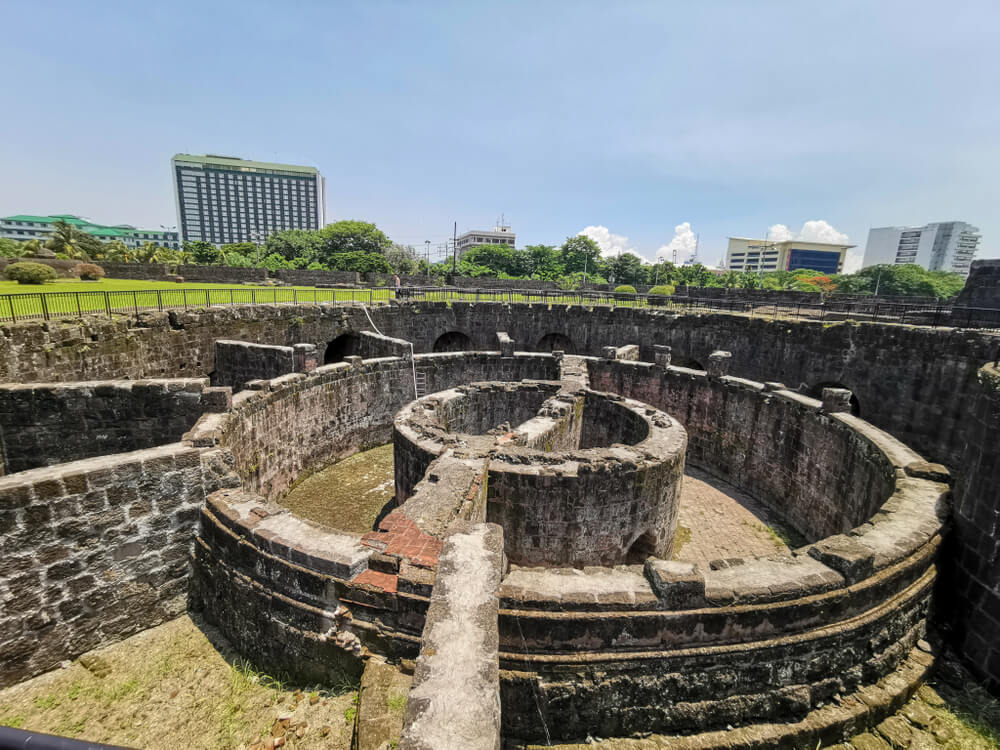
Of the many defensive structures in Intramuros, one of the most striking is the Bastion (Baluarte) of San Diego. Made up of the remnants of three concentric circles, it offers insight into the grand defensive prowess of its occupants.
Interestingly, for a time, the Bastion of San Diego was home to a miniature bronze replica of the Statue of Liberty — meant as a tribute to the American lives lost liberating Manila in WWII. The statue has since been moved, but even today, walking the ramparts summons echoes of the many lives lost throughout the centuries.
- Baluarte de San Andres
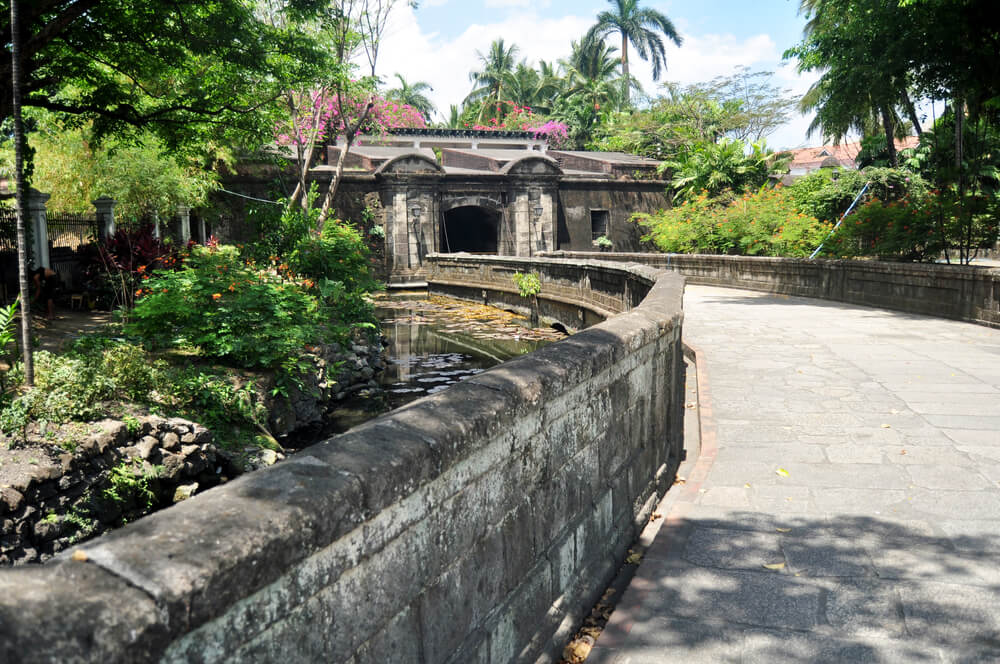
The Bastion of San Andres is located in the southeast corner of the city and was designed to defend the Puerta Real (Royal Gate) against invaders. While not as extensive as the Bastion of San Diego, its massive walls and conical watchtower make this a worthy stop on your Intramuros tour.
- Casa Manila

Boasting vine-smothered courtyards brimming with flowers, quaint arches, and alleyways, Casa Manila is arguably the most picturesque location in Intramuros.
Tucked away in the Barrio San Luis neighborhood and across from the San Agustin church, Casa Manila is a renovated stone and wood building turned museum.
Besides the charming fountains and balconies of the exterior, inside, you can browse an impressive collection of antique furniture from Europe and the Orient. Modeled after a grand mansion from the 19th century, Casa Manila depicts the opulence affluent Filipinos experienced under colonial rule.
If you have any interest in history, architecture, ceramics, art or design, Casa Manila should be high up on your list of sights when visiting Intramuros.
- Barbara’s Heritage Restaurant
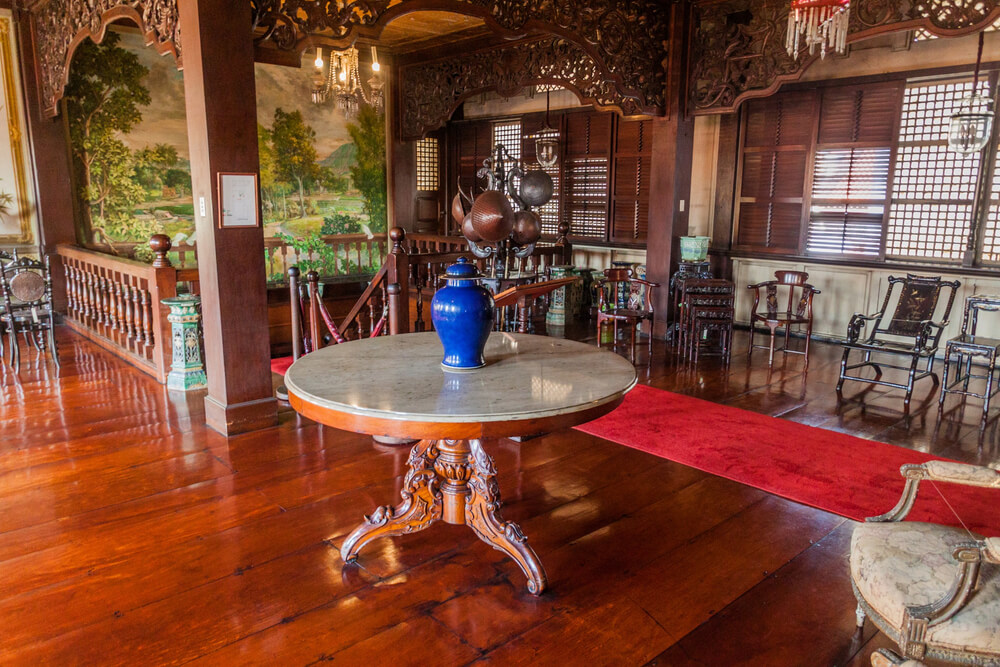
It’s not common for a restaurant to be a destination unto itself, but Barbara’s Heritage Restaurant is an Intramuros institution.
On the grounds of Casa Manila, Barbara’s serves up a variety of traditional Filipino and Spanish dishes. But this is more than just a restaurant. The building houses an exclusive attic museum and art gallery just dripping with character. Every evening, they offer a combination buffet and cultural dance show featuring traditional Filipino music and choreography.
If you really can’t get enough of the upscale colonial vibe, Barbara’s also doubles as a bed and breakfast. This means that you can quite literally spend a night at the museum.
- Palacio del Gobernador (Governor’s Palace)
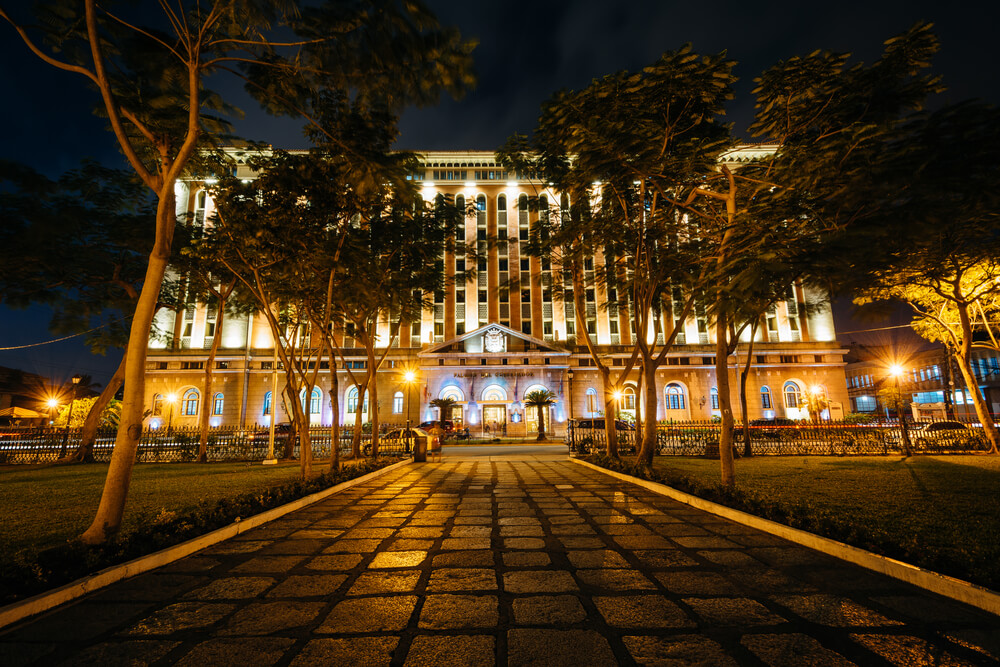
This was the home of the governor’s mansion until 1863, when a powerful earthquake sadly destroyed it. Fortunately, like the rest of Intramuros, it was rebuilt — in this case, in 1976.
It is currently home to various administrative offices and retains the same colonial flavor as the surrounding streets. At the very least, it’s worth a visit just to snap a few pics.
- Museo de Intramuros

Built atop the ruins of the San Ignacio Church, the Intramuros Museum houses three stories worth of religious artifacts, colonial-era paintings, and historical depictions of Intramuros’ history.
A relatively new attraction — though elegantly designed to fit in with the area’s colonial Spanish decor — it was both created and run by the Intramuros Administration, an organization dedicated to the preservation of the area and its legacy.
For dedicated history buffs and fans of religious art, this is one museum you won’t want to miss.
- Light and Sound Museum
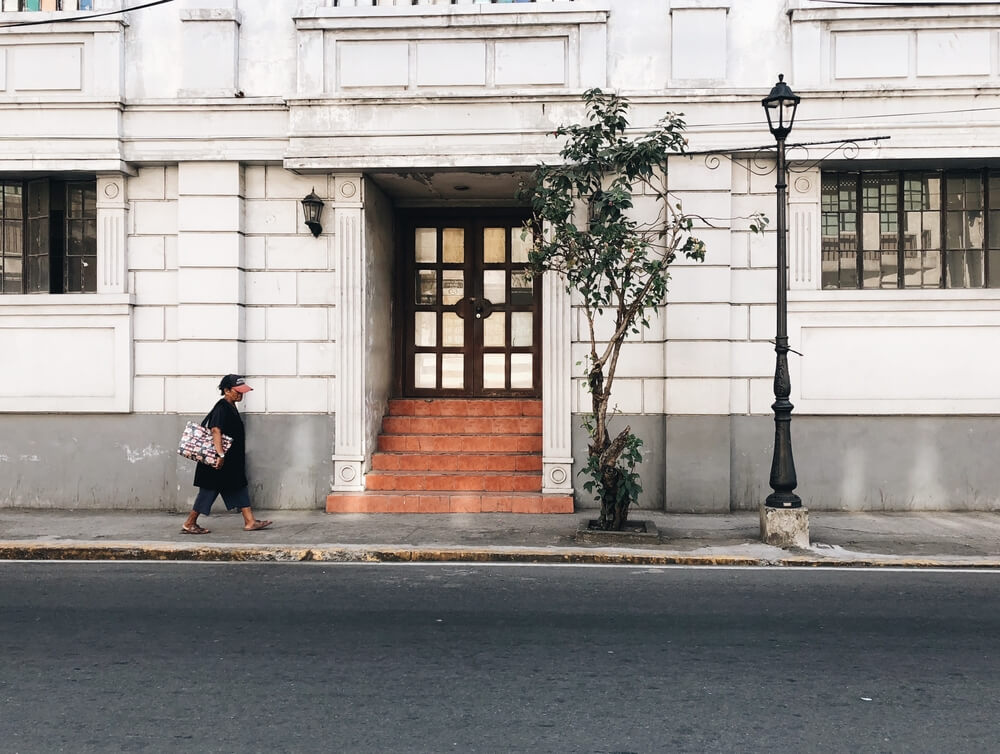
Featuring light, sound, and robotics, this museum showcases the life and events of Jose Rizal — a national hero and inspiration for Philippine independence. The exhibit is designed to create an interactive narrative of his backstory, incarceration and eventual martyrdom.
If you’re looking for some insight into modern Philippine history and politics, the Light and Sound Museum is an interesting and stimulating way to learn about one of their favorite sons.
- Bahay Tsinoy
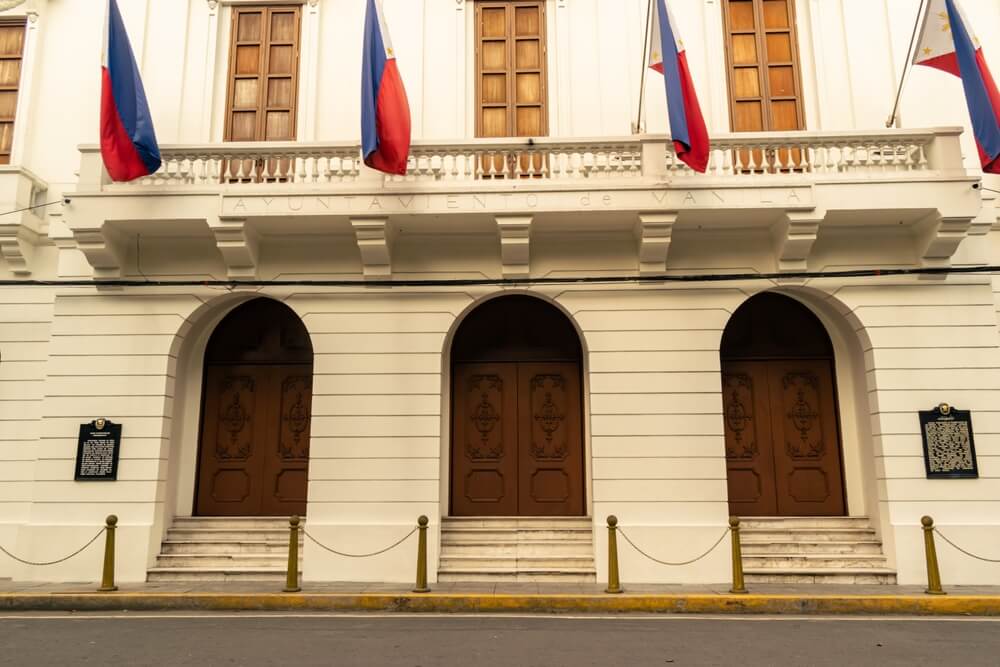
Spain wasn’t the only foreign nation to have a profound influence on Manila. Neighboring China has also had an effect on life in the Philippines, and this is commemorated at Bahay Tsinoy.
This is a museum that showcases Chinese contributions to the local culture, traditions and economy over the years. You can take in scenes depicting Chinese and Filipino interactions throughout their shared history.
- Silahis Center
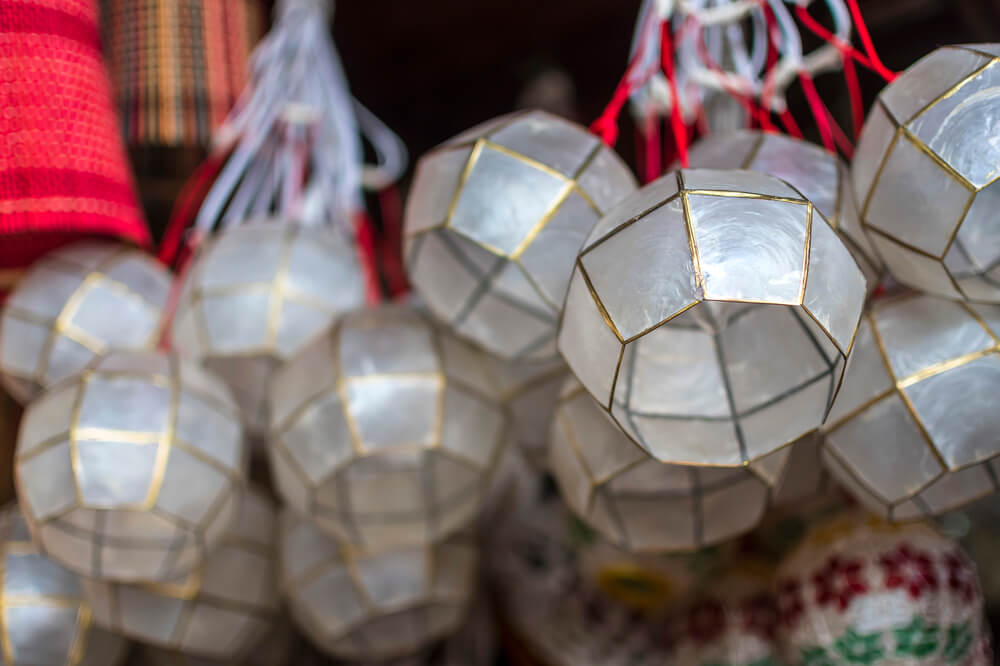
Located in a historic old stone and wood building, the Silahis Center is part museum, part antique store. There’s no entrance fee, and visitors are encouraged to admire their collection of Filipino art and artifacts — much of which is for sale.
This is a good place to see a variety of Filipino handicrafts with the option of taking home a souvenir or two. However, there’s no purchase required, and you can simply just browse their art gallery and window shop until your heart’s content.
- Plaza Mexico
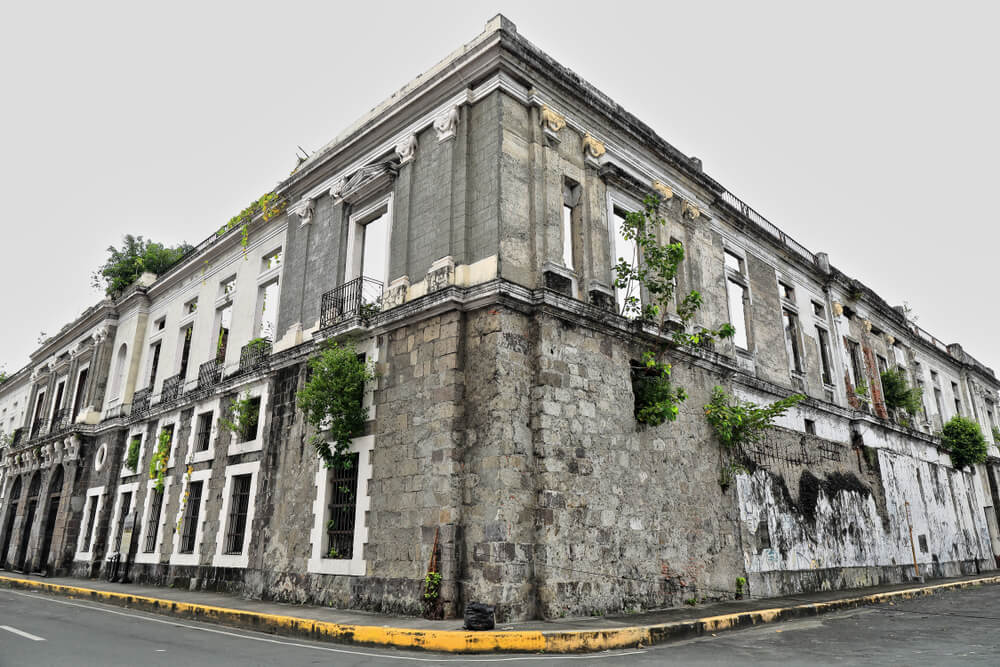
Located in the northeastern corner of Intramuros, Plaza Mexico is a leafy square commemorating the Manila-Acapulco galleon trade that spanned some 250 years.
This shade-covered park fronts the historic Aduana Building (Customs House) and is home to several monuments relating to the relatively uncelebrated ties between Mexico and the Philippines.
- Map of the Intramuros neighborhood
To give you a visual overview of the Intramuros neighborhood, here’s a useful map that will help you plan your route.
- How to get to Intramuros, Manila

Most international travelers arrive in Manila via Ninoy Aquino International Airport (IATA code: MNL). This is the primary airport for the capital, with lots of airlift on both domestic and international carriers.
To get to Intramuros from the airport , you could either take a long bus ride (up to an hour) or a short taxi or shuttle ride (approximately 15 minutes). There are also a few public transportation options in Manila to get you around the city easily.
Once inside the walls of Intramuros, you can easily get everywhere on foot. Or, if you prefer to take the kitschy tourist route, you can also hire a horse and buggy (with a driver) to ferry you around between sites.
- Intramuros weather
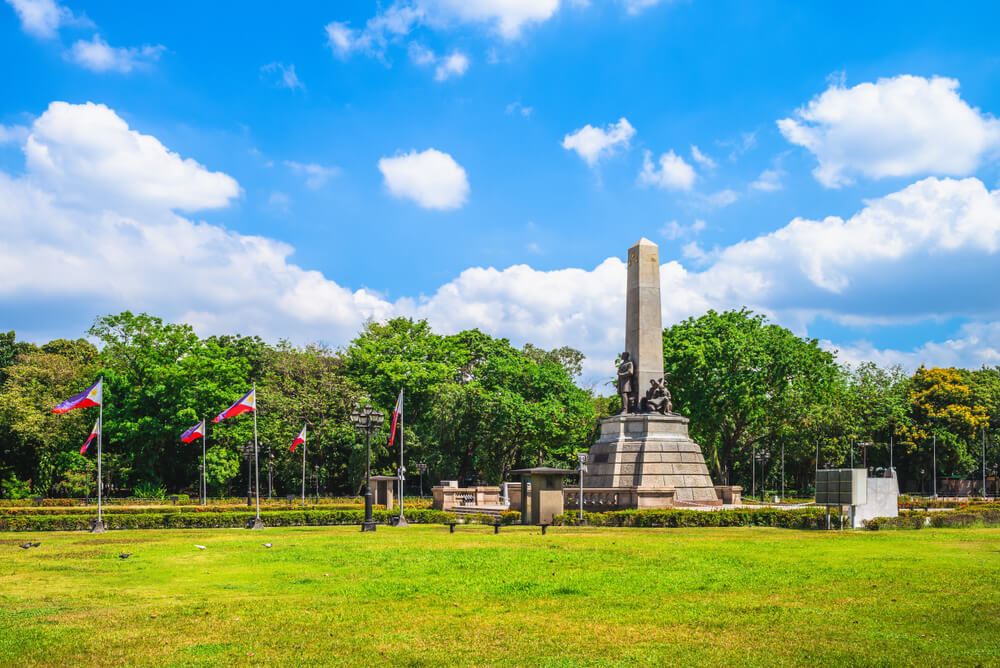
Visitors to Intramuros should be prepared to tour in significant heat and humidity. ]
There are two seasons in Manila — wet and dry. The dry season lasts from December to May, while the wet season goes from June to November.
Practically speaking, neither should impede your ability to tour Intramuros regardless of the time of year.
- Packing list essentials for Intramuros , Manila

Intramuros is both compact and walkable, but having some essentials can make your explorations all the more pleasant. Here are some suggestions:
- Breathable, lightweight clothing: Regardless of the time of year, it will be warm and likely humid. Having lightweight, moisture-wicking clothing can keep you feeling fresh for longer.
- A rain poncho or waterproof jacket: Any time of year—but particularly during the wet monsoon season—sudden heavy showers can pop up. Having the right jacket or poncho will leave you prepared for that possibility.
- Long pants/Cover-up: If you intend to visit the cathedral or other religious sites within Intramuros, having long pants or a cover-up will show the appropriate respect.
- Comfortable, sturdy shoes: Intramuros is best explored on foot, which means you’ll want your comfiest, sturdiest shoes to avoid soreness and blisters.
- Practical considerations
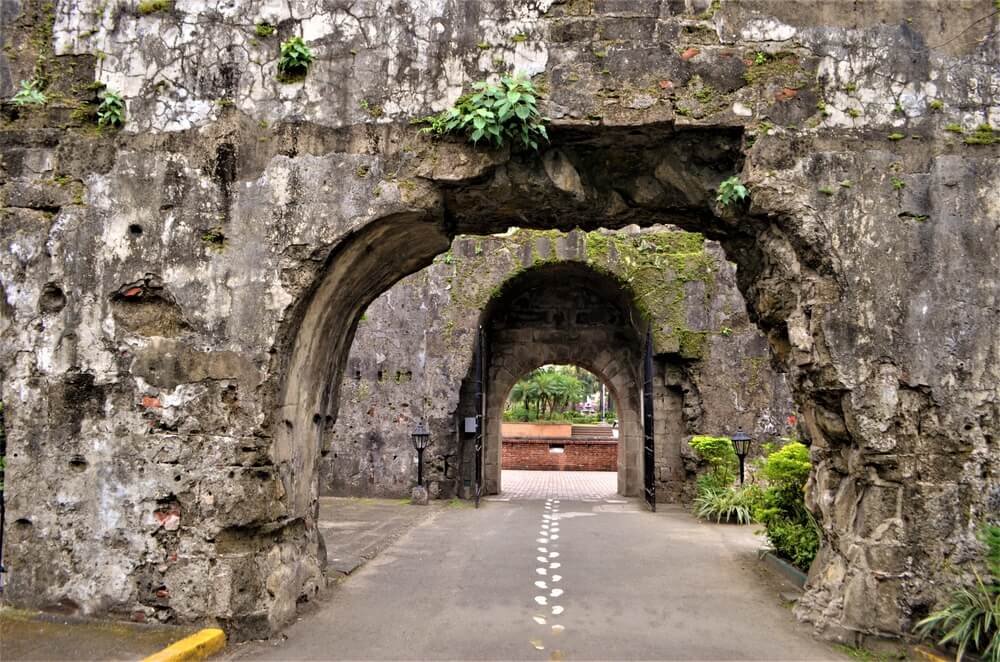
As in any other location that attracts tourists, be mindful of your belongings and don’t flash a lot of money or goods around. While crime isn’t a major issue, there’s no need to make yourself a potential target for opportunistic pickpockets.
Even though distances around Intramuros aren’t great, you should pace yourself and stay hydrated at all times.
- Final thoughts on Intramuros

Modern Manila is a pulsating, congested, and noisy fusion of modern buildings and glitzy shopping malls. But given the history and tragedy within the ramparts of Intramuros, now you can see why you should leave at least one day to explore Manila as it used to be and pay your respects to the city inside the walls.
Sure, it’s possible to see it all in one day, but it will feel rushed. If your itinerary allows, set aside 1.5 days for Intramuros and take in nearby Rizal Park with the rest of the time.
To reach Intramuros from the airport, you can either take a rather tedious bus ride (the cheapest option) or a shuttle that will get you there in a fraction of the time.
Without a doubt, Intramuros is the premier site of interest for tourists visiting Manila. Combining centuries of history, this is the top must-see attraction in the city.

Related Posts

A private transfer from Ao Nang to Krabi: A traveler review
Staying in Ao Nang and continuing your travels from Krabi? This review will give you an idea of how flexible and convenient the taxi service is.

11 amazing things to do in and around Oaxaca
A detailed guide on the best things to do in Oaxaca, including must-see Oaxacan sites and unique activities frequented by fewer tourists.

Getting from Cancun to Cozumel: A traveler review
Learn the ins and outs of traveling from Cancun to Cozumel. Get tips on the best way to get to Cozumel and what to expect during the journey.

The ultimate guide to conquering Vietnam’s Hai Van Pass
The Hai Van Pass is a combination of hairpin bends, spectacular views of coast and clouds, unique adventure and a lot of history.
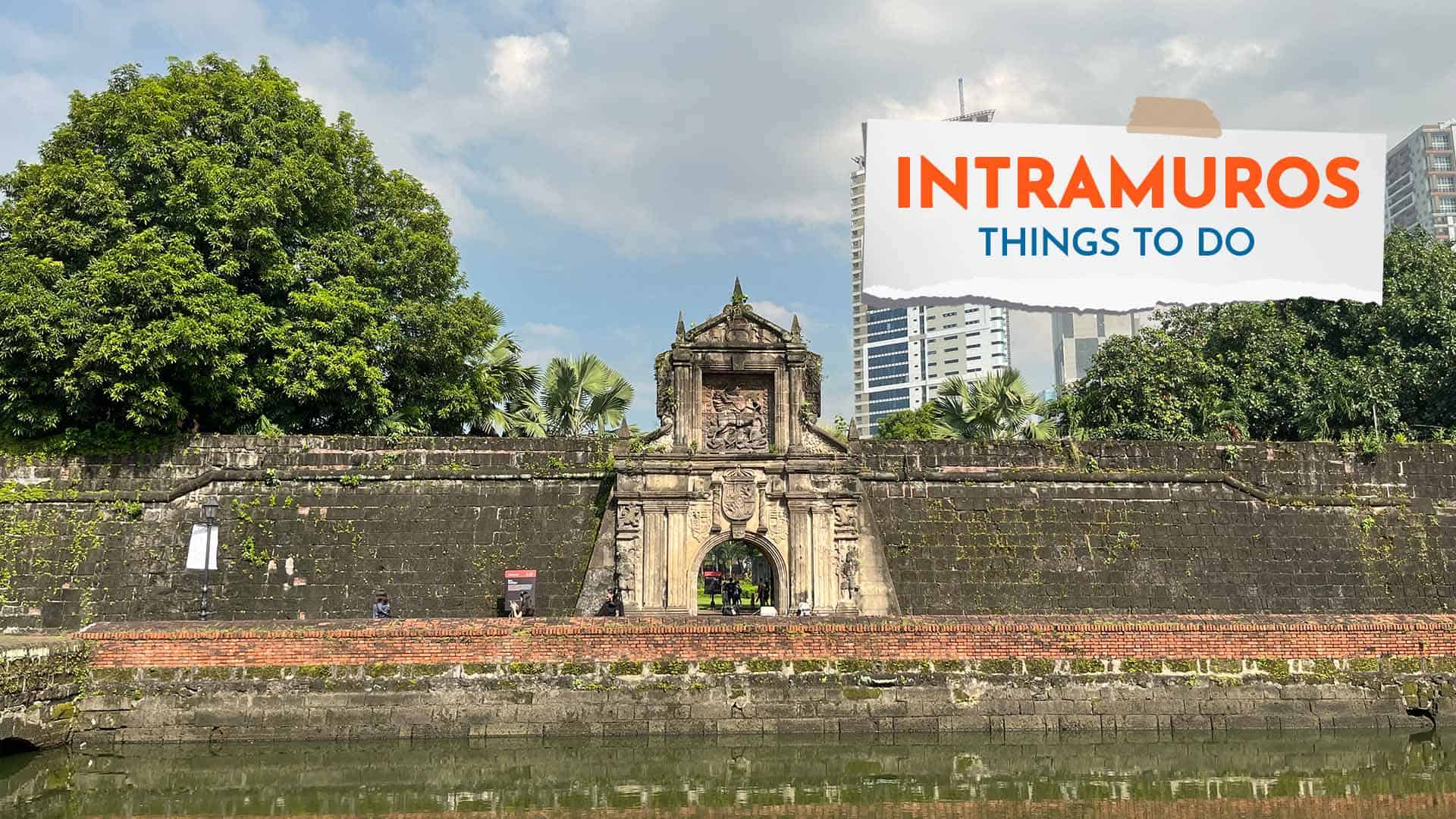
Top 12 Things to Do & Tourist Spots in Intramuros

Intramuros is one of, if not the most, historic places in Manila, the capital city of the Philippines. Its name literally translates to “ within the walls ” in Spanish, which is why it’s also referred to as the walled city.
Situated by the mouth of the Pasig River, its walls and other fortifications protected Manila from foreign invaders during the Spanish colonial period. Its construction began in the late 16th century and concluded in the beginning of the 19th century.
Today, Intramuros carries the old-world charm of Manila in the historical buildings and landmarks that decorate its (mostly) cobblestone streets. You won’t go far into the walled city without catching sight of a historical marker greeting you at every corner. Visitors can check out the thick stone walls, gates, and other defense structures that protected what was once considered the entire City of Manila. Museums, old churches, and other historical buildings are also sprinkled all over its map.
Whether you’re a history buff or you’re simply looking for something to do in Manila, add Intramuros to your itinerary and allot a day to get lost within its walls. In this post, you’ll find some of the best things to do and historic spots to visit as you walk along the streets of old Manila.
WHAT'S IN THIS GUIDE?
Intramuros Pass
If you’re touring Intramurous, you could save a few bucks by availing the Intramuros Pass , which will give you access to up to five (5) activities and attractions. This is perfect for those planning to visit multiple attractions within the historic walled city. We highly recommend availing the pass to save on entrance fees.
Don’t forget to activate your pass by reserving a date and a time slot for at least one attraction within 30 days from booking confirmation date. You can choose from any of these attractions:
Fort Santiago
Museo de intramuros.
- Casa Manila Museum
Baluarte de San Diego
✅ GET YOUR INTRAMUROS PASS HERE!
Fort Santiago, the primary fortress in Intramuros, is one of the city’s oldest forts. Initially built as a palisaded fort by Rajah Soliman, it was later reconstructed with stone by Miguel Lopez de Legazpi between 1590 and 1593. Throughout history, it served as the headquarters for various occupying forces, including the Americans, British, and Japanese, as well as functioning as a prison.
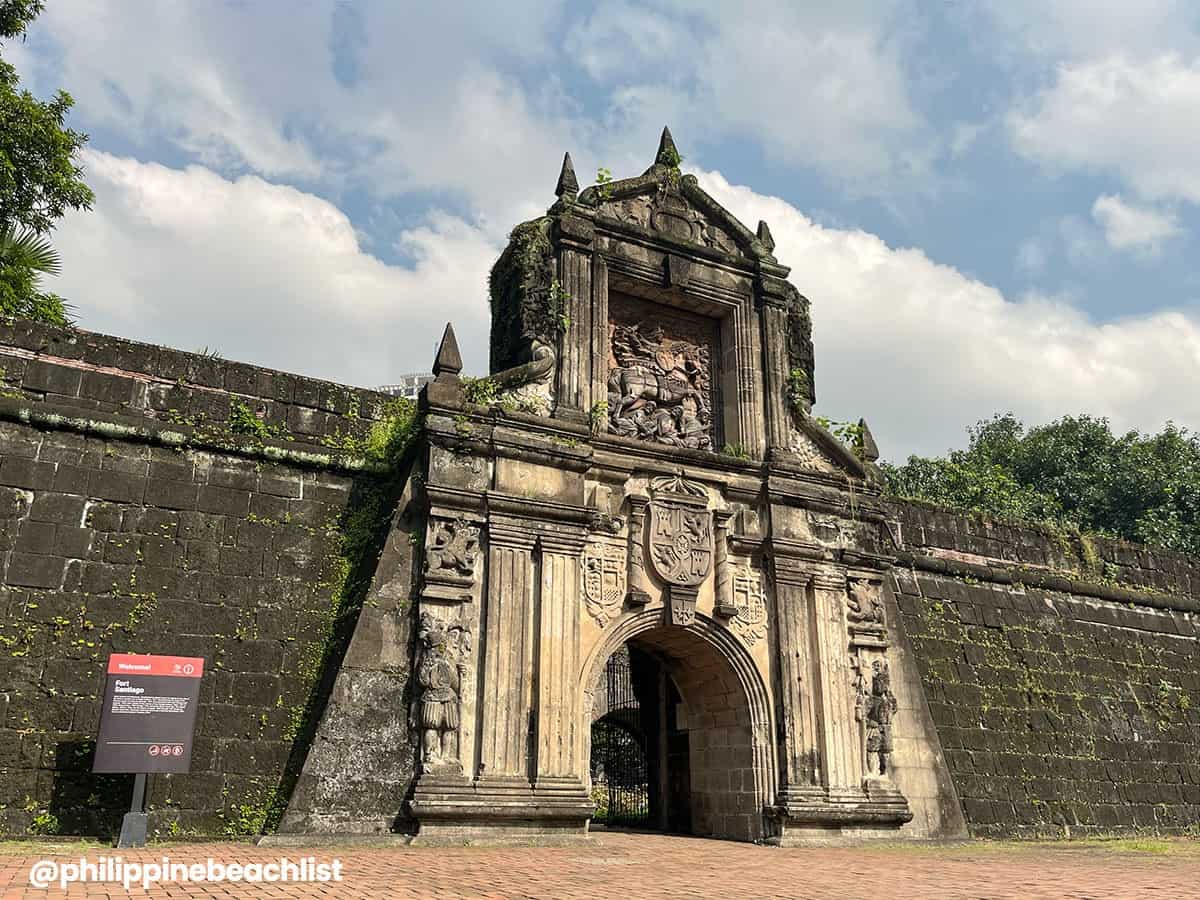
Before his execution in 1896, Jose Rizal, the country’s national hero, spent his last days at this fort. Eagle-eyed guests will spot his final footsteps marked on the floor from his prison cell. Museo ni Rizal , dedicated to the revolutionary, is also located inside Fort Santiago, specifically in the building where Rizal’s prison cell once stood.
Aside from the Museo ni Rizal, Fort Santiago boasts several points of interest, including barracks ruins, numerous bastions, the Rajah Sulayman Theatre, Plaza Armas, a memorial cross, and more. Near the entrance, a visitor center offers maps of the fort, refreshments, and souvenirs.
During our visit, we found a gem of a coffee shop towards the back of Fort Santiago, past Plaza Armas. Papa Kape sits inside Aljibe de la Fuerza, a 400-year-old water cistern. Nowadays, the only water you’ll find is in the machines brewing local coffee. They offer hot and iced coffee drinks, some featuring Filipino delicacies, such as their Tahoat, inspired by the local snack “taho” made with silken tofu.
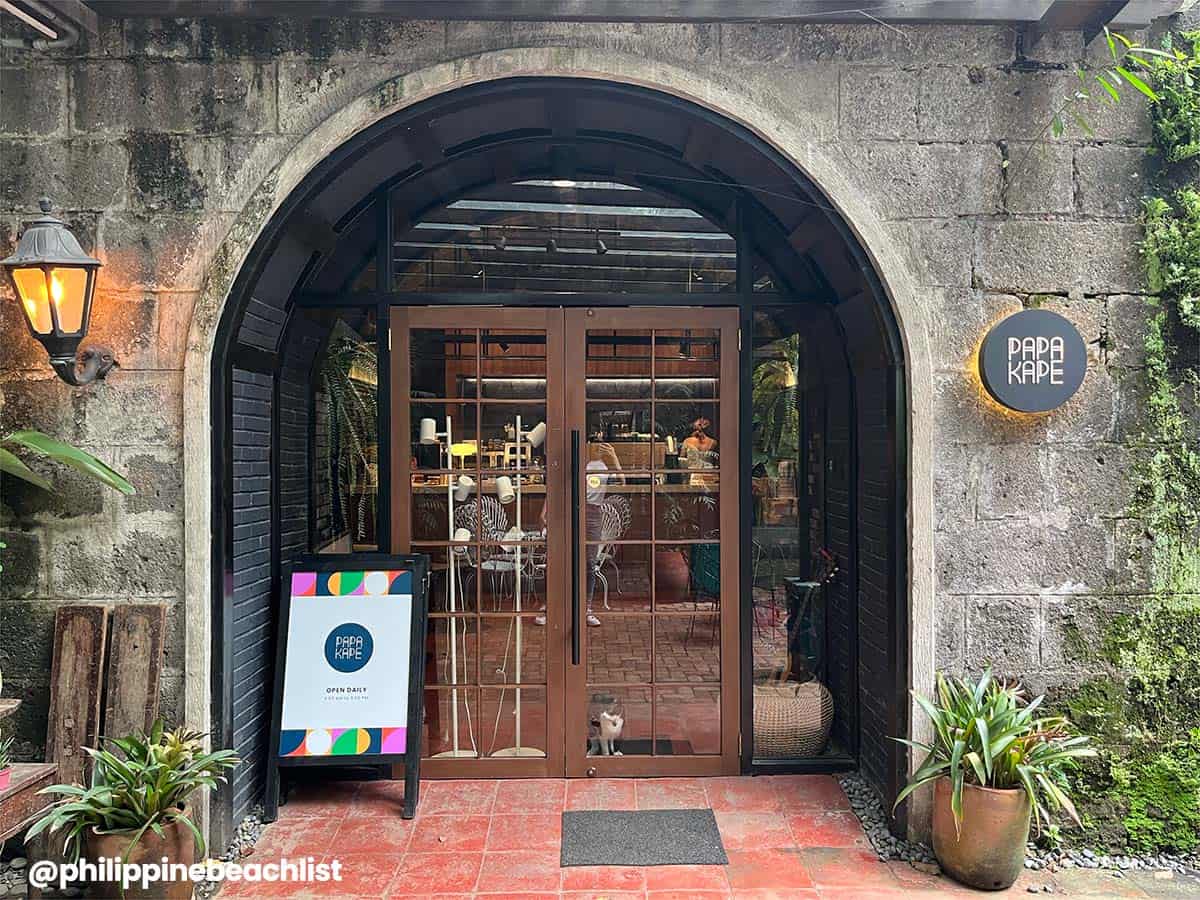
Grab your tickets at the entrance or from Klook! Fort Santiago is also covered by Klook’s Intramuros Pass.
✅ GET YOUR FORT SANTIAGO TICKET HERE!
Opening Hours : Monday to Friday, 8:00 AM – 10:00 PM (last entry at 8:00 PM); Saturday to Sunday, 6:00 AM – 10:00 PM (last entry at 8:30 PM). Schedule might change without prior notice. Make sure to visit their website or official Facebook page for updates. Entrance Fee : Regular, P75; Children, Student, Senior Citizen, PWD, P50 Location : Sta. Clara Street, Intramuros, Manila City
Identified by its circular fort, Baluarte de San Diego is another bastion in Intramuros. Its unassuming entrance hides the Torre de Nuestra de Señora de Guia , tower-turned-bulwark following the demolition of its upper portion after suffering from cracks. This spade-shaped structure is what we call Baluarte de San Diego today.
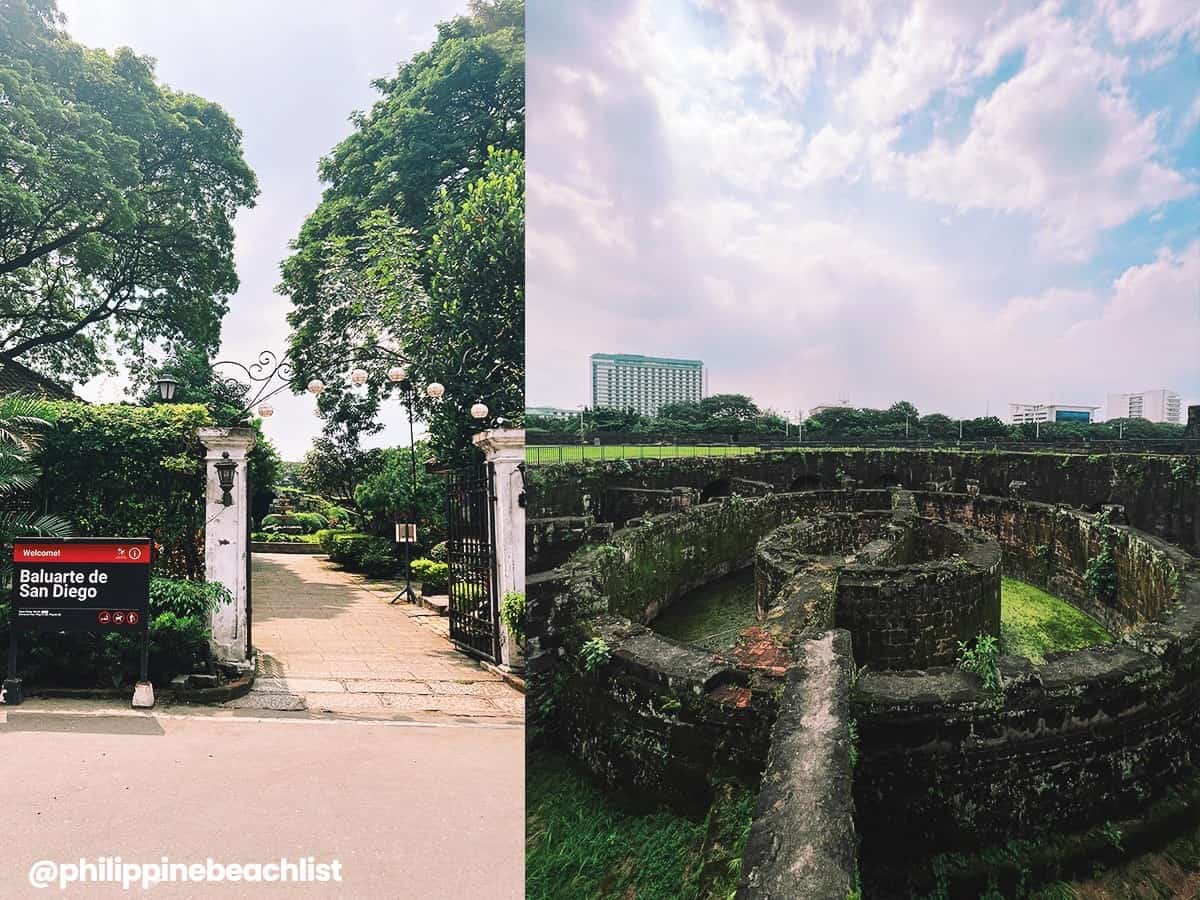
In 1863, it was destroyed by an earthquake and was subsequently abandoned. This effectively buried the circular fort under layers of soil during the country’s American colonization. In 1979, it resurfaced after excavation. Today, the restored baluarte is surrounded by a garden, placing it among the top rentals for events.
While the garden itself is perfect for pictures, most Google searches will bring up the pictures of the baluarte’s remains. And for good reason! Seeing it in person gives you a better grasp of how this adobe structure protected Intramuros.
On days without events, Baluarte de San Diego is open to visitors for a small entrance fee. You can buy your tickets at the entrance or from Klook. Baluarte de San Diego is also covered by Klook’s Intramuros Pass.
✅ GET YOUR BALUARTE TICKET HERE!
Opening Hours : Daily, 8:00 AM – 5:00 PM (last entry at 4:00 PM). Schedule might change without prior notice. Make sure to visit their website or official Facebook page for updates. Entrance Fee : Regular, P75; Children, Student, Senior Citizen, PWD, P50 Location : Sta. Lucia Street corner Muralla Street, Intramuros, Manila City
Casa Manila
Located across San Agustin Church, Casa Manila is a museum that represents the life of an affluent Filipino family during the Spanish colonial period. It sits within the Plaza San Luis Complex . Casa Manila’s facade takes inspiration from a house that stood in the Chinese district of Binondo in the 1850s.
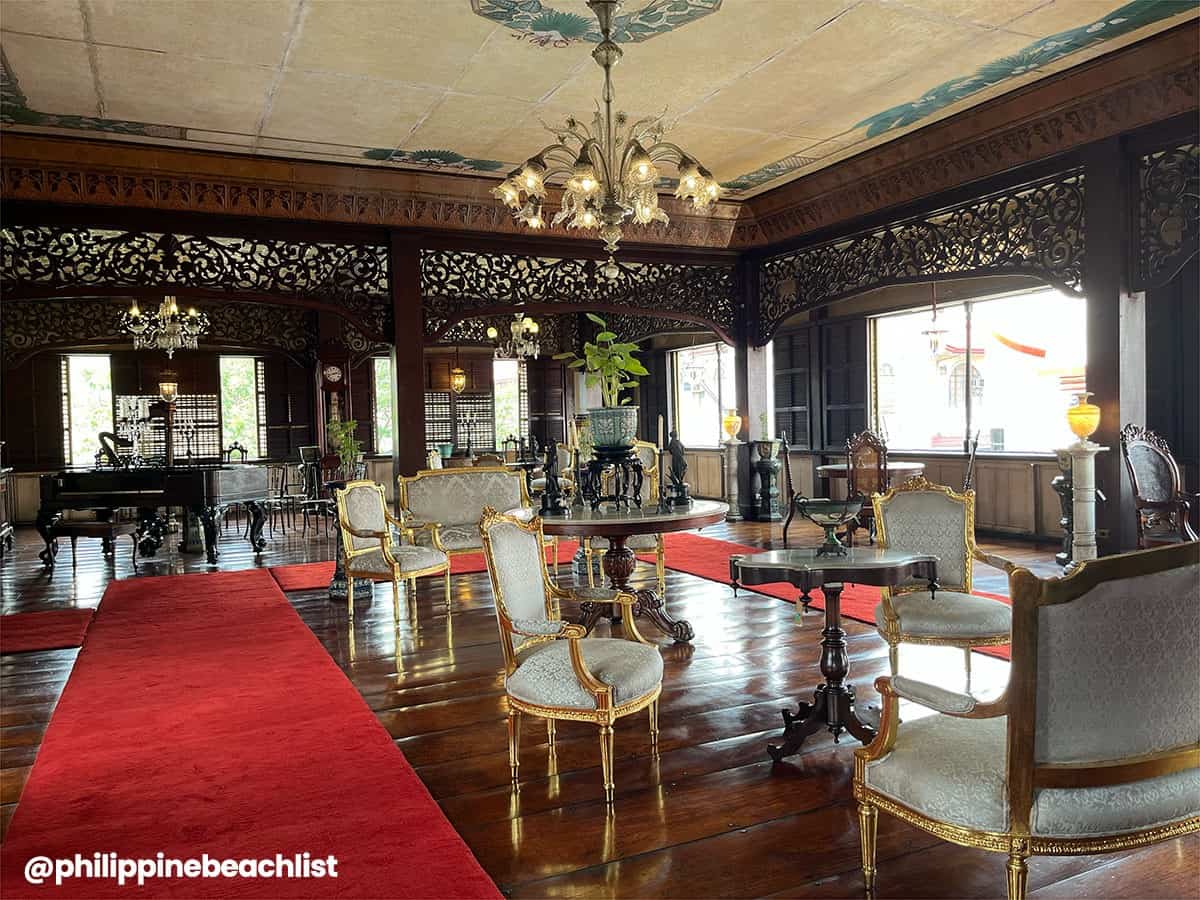
In the museum, you’ll observe 19th-century elegance in the form of hardwood floors, furniture, and chandeliers. Museum goers must keep their feet within the carpeted area, except at the accessible kitchen or cocina . Despite these restrictions, it’s a captivating glimpse into Spanish-period housing. The well-preserved furniture takes you back in time, allowing you to envision life in that era.
When you visit, you can buy tickets at their ticket booth located inside Plaza San Luis Complex. However, you can also purchase your tickets in advance through Klook. Casa Manila is also covered by Klook’s Intramuros Pass.
✅ GET YOUR CASA MANILA TICKET HERE!
Opening Hours : Tuesday to Sunday, 9:00 AM – 6:00 PM; Monday, CLOSED. Schedule might change without prior notice. Make sure to visit their website or official Facebook page for updates. Entrance Fee : Regular, P75; Children, Student, Senior Citizen, PWD, P50 Location : Real Street corner General Luna Street, Intramuros, Manila City
Bambike Ecotours Intramuros
There are multiple ways to do a tour of the walled city: walking, a pedicab tour, or a guided bike tour. If you are more into cycling, Bambike Ecotours Intramuros offers another fun way to go around Intramuros. Bambike has guided bike tours which will take you to the historic spots in the area while riding a bamboo bike .
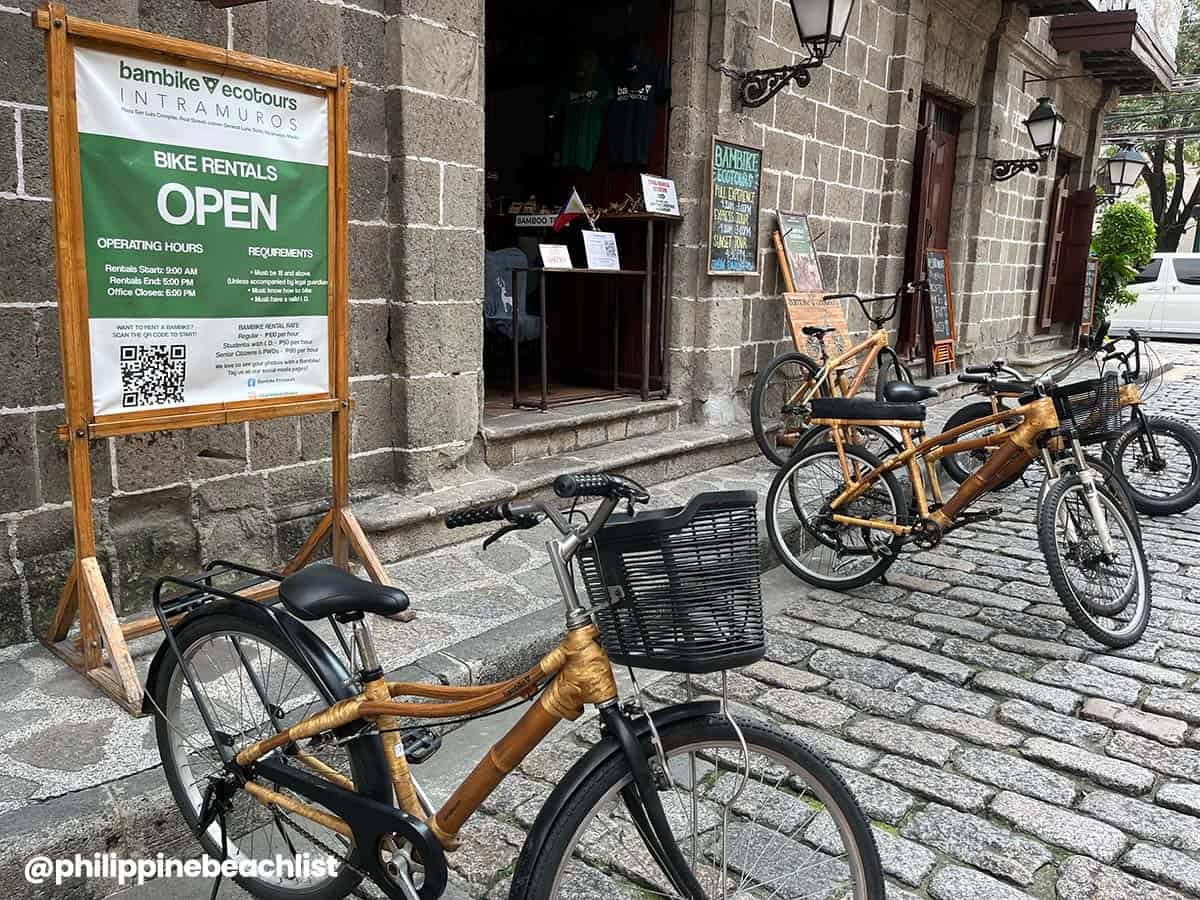
Bambike Ecotours offers 3 types of tours:
- Intramuros Experience: This is a two and a half hour tour of Intramuros.
- Intramuros Express Tour: This lasts for one and a half hours.
- Intramuros Sunset Tour: This is a late afternoon tour that ends at the rooftop of the Bayleaf Hotel where guests can enjoy a complimentary drink while watching the sunset.
All three tours come with guides so you can learn about each stop and have a deeper appreciation for them. Alternatively, you can also rent bambikes per hour if you want to explore Intramuros on your own.
Walk-ins are welcome for both the bike rentals and the tours. Just make sure to arrive before the scheduled tour you want to avail. However, it is best to book a tour in advance since they have limited bicycle units available. You can book your Bambike Intramuros Tour via Klook. You can choose to book just the bambike tour alone, but you can also bundle it with the Intramuros Pass.
✅ BOOK INTRAMUROS BAMBIKE TOUR HERE!
Opening Hours : Daily, 9:00 AM – 6:00 PM. Schedule might change without prior notice. Make sure to visit their website or official Facebook page for updates. Tour Schedules : Full Experience: 9:30 AM & 3:00 PM Express Tour: 9:30 AM & 3:00 PM Sunset Tour: 4:30 PM Rates: Rental: Regular, P100/hr; Student, P50/hr; Senior Citizen & PWD, P80/hr Full Experience: P1,700/person Express Tour: P1,000/person Sunset Tour: P1,800/person Location : Real Street corner General Luna Street, Intramuros, Manila City
White Knight E-Chariot Tours
If you’re not looking forward to walking or biking across Intramuros, White Knight Hotel’s E-Chariot Tours may catch your eye. “E-chariot” is just a fancy term for electric scooters (Think: Segway). Its wide chariot-like wheels will have you rolling around Intramuros through their 30-minute or 60-minute tours. Some of the sites included in this tour are the Manila Cathedral, Fort Santiago, and San Agustin Church.
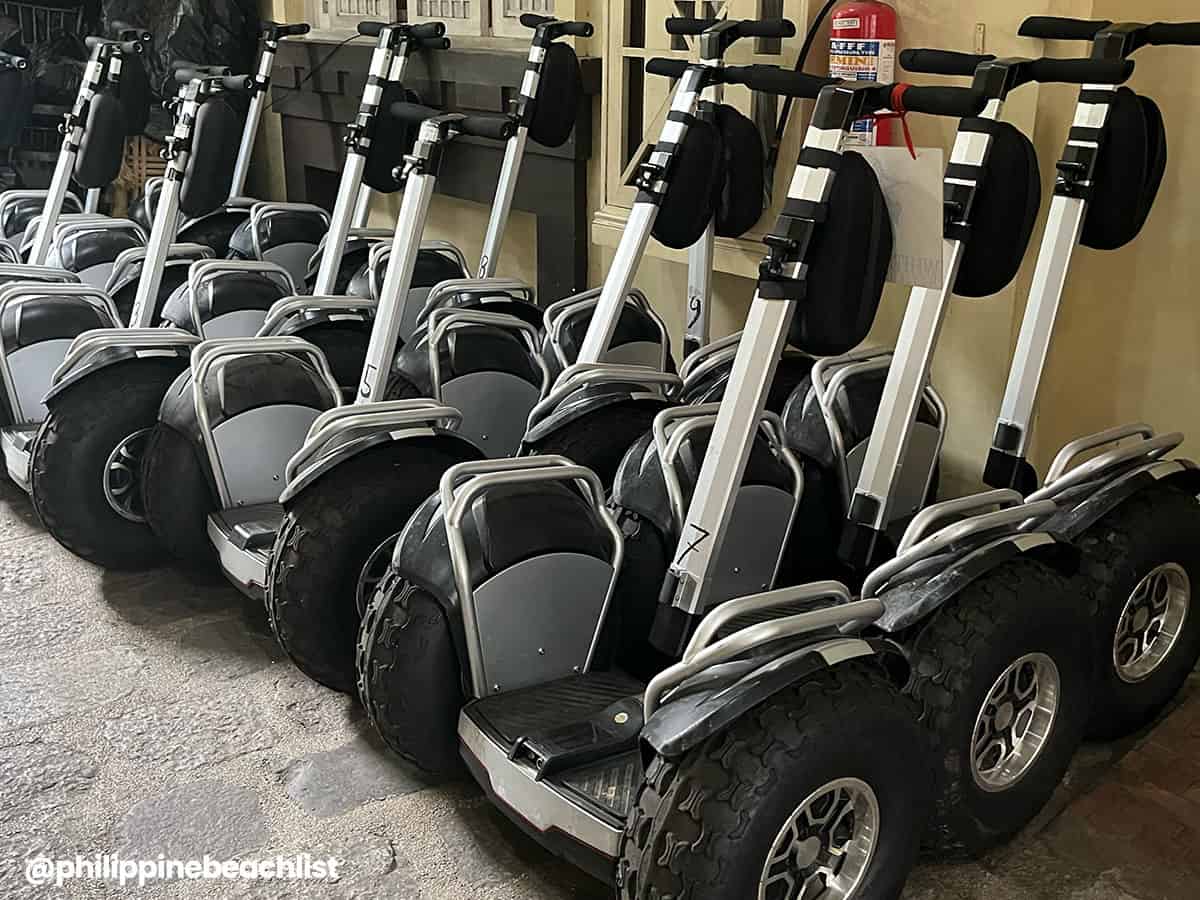
You will find White Knight E-Chariot Tours at White Knight Hotel located within Plaza San Luis Complex. Walk-ins are welcome, but you can also book in advance through Klook. Klook also offers discounted rates so you can save a little bit when you book through them. If you’re interested in booking an E-Chariot Tour, you can click the link below. You can also choose to bundle your E-Chariot tour with the Intramuros Pass which will give you access to multiple attractions in the walled city.
✅ BOOK E-CHARIOT TOUR HERE!
Opening Hours : Daily, 8:00 AM – 5:30 PM. Schedule might change without prior notice. Make sure to visit their website or official Facebook page for updates. Rates : P1,000/hr per person Location : General Luna Street, Intramuros, Manila City
Housed in the reconstructed San Ignacio Church and the Mission House of the Society of Jesus, Museo de Intramuros displays the ecclesiastical collection of the Intramuros Administration. Aside from the collection exhibited here, the building itself is historical. San Ignacio Church is one of the two churches that the Jesuits built in honor of St. Ignatius of Loyola.
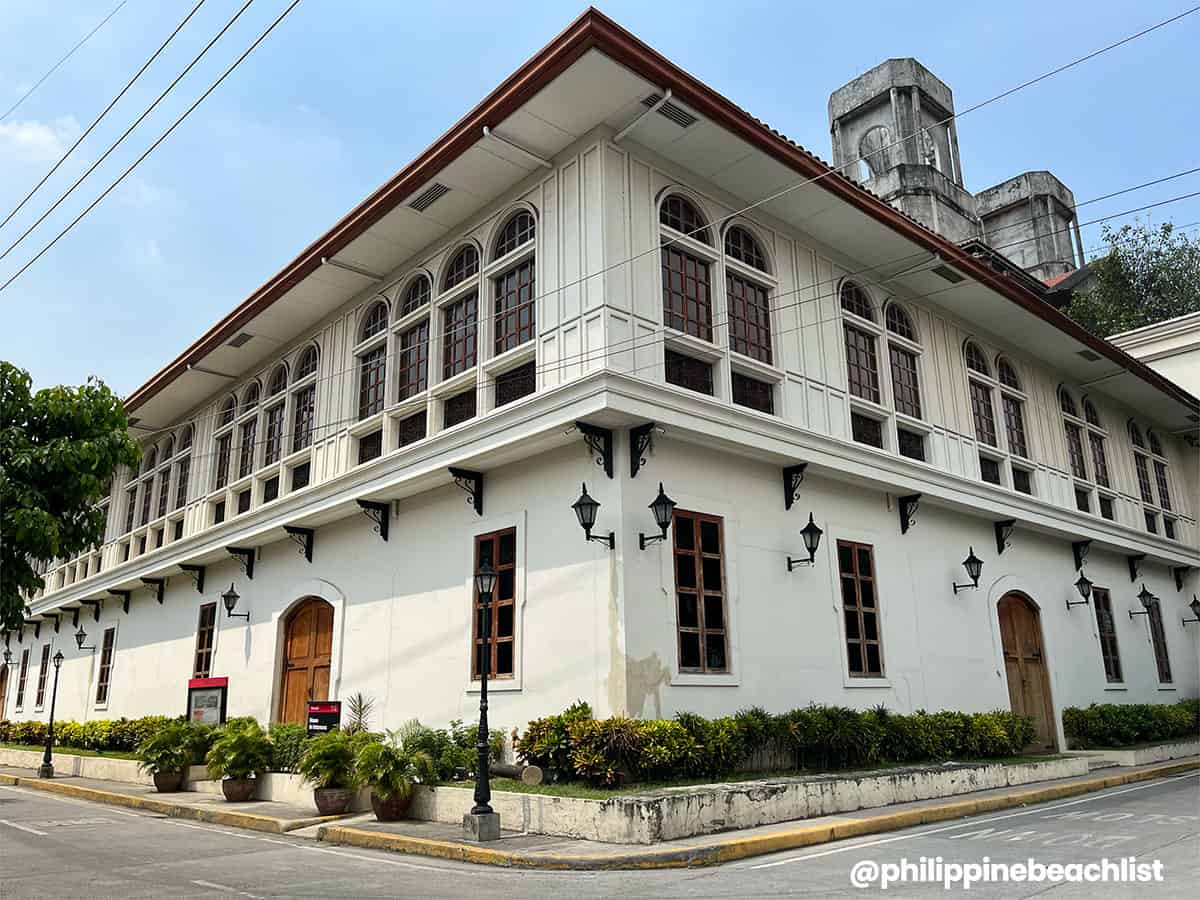
The second San Ignacio Church broke ground in 1878, guided by the designs of Don Felix Roxas, a renowned architect during that time. This church wowed with its carved wood interiors, but much like most of the landmarks in Intramuros, World War II leveled the church. It wasn’t until the creation of the Intramuros Administration in 1979 that the plan to reconstruct the church materialized.
If you’re planning a weekday visit, you may want to exclude Museo de Intramuros from your plans, unless you’re a group with a minimum of 10 participants. These Exclusive Tours must be reserved at least 2 days in advance. For inquiries, you may send an email to [email protected] or call 0915 717 4115, 0936 840 3225, or 0915 599 4483.
For regular weekend visits, tickets are available at the entrance. However, you can also purchase tickets in advance through Klook. Museo de Intramuros is also covered by Klook’s Intramuros Pass .
✅ GET YOUR MUSEO DE INTRAMUROS TICKET HERE!
Opening Hours : Saturday to Sunday, 9:00 AM – 5:00 PM; Monday, CLOSED; Tuesday to Friday, for exclusive tours ONLY. Schedule might change without prior notice. Make sure to visit their website or official Facebook page for updates. Entrance Fee : Regular, P75; Children, Student, Senior Citizen, PWD, P50 Location : Arzobispo Street corner Anda Street, Intramuros, Manila City
The Manila Cathedral
Formally called Minor Basilica and Metropolitan Cathedral of the Immaculate Concepcion , the Manila Cathedral is the cathedral church of the Archdiocese of Manila. First established in 1571, it was initially a parish church under the Archdiocese of Mexico established by Fray Juan de Vivero. Then, in 1579, the Diocese of Manila was erected and the church was acknowledged as a cathedral.
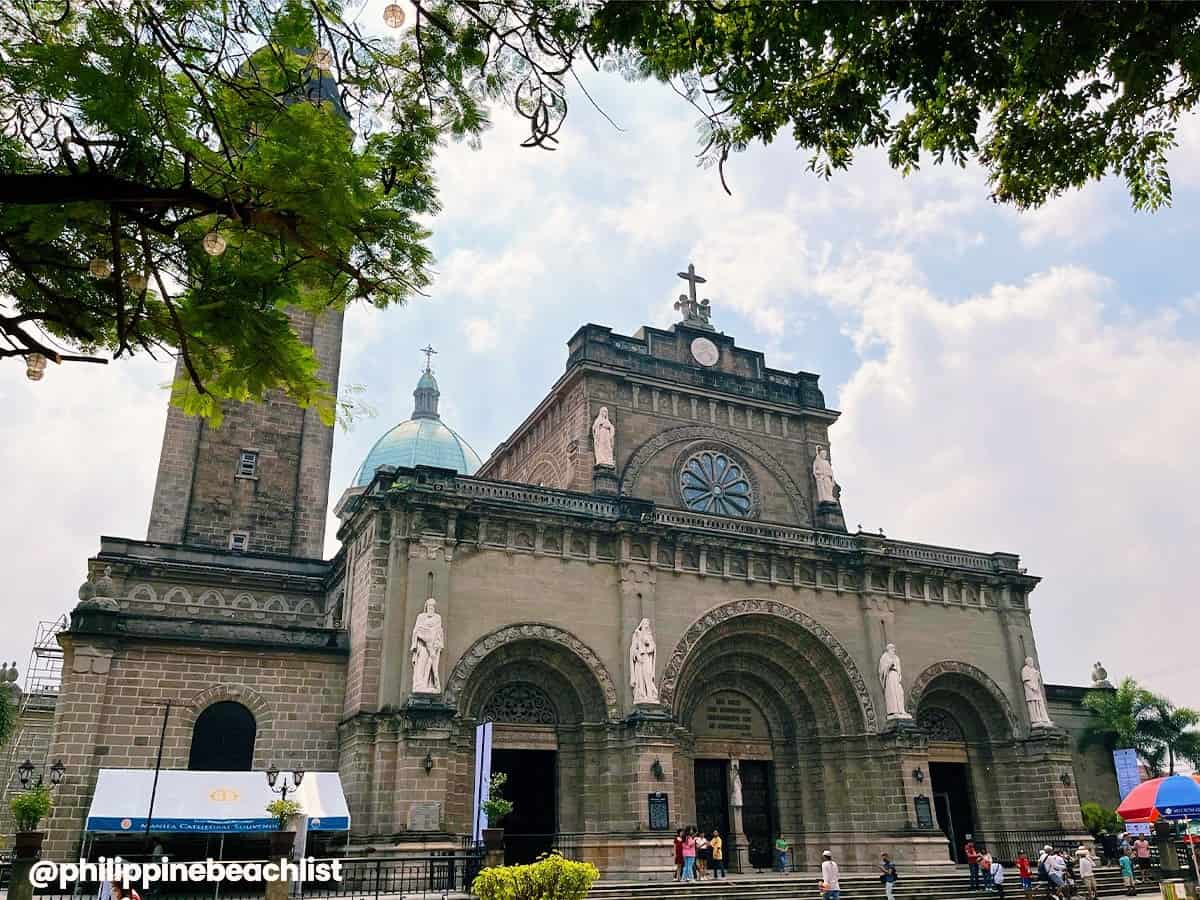
The cathedral, initially built in 1581, succumbed to fire in 1583. Reconstructed with stone in 1592, the cathedral eventually collapsed due to an earthquake in 1600. From then on, it developed a history of reconstructions due to earthquakes, typhoons, and the second world war. Pope John Paul II elevated the cathedral to a minor basilica in 1981, shortly after his visit and mass celebration, marked by a medallion with the papal arms beneath the cross on the facade and above the high altar.
For first timers, the security protocols at the entrance may surprise you, but these are just necessary precautions due to the high volume of visitors to the church. These contemporary additions honestly match the Neo-Romanesque architecture of the current reconstruction of the church. As “revival” architecture, Neo-Romanesque structures hoped to bring the past into the more modern present. Seems very fitting for this deeply historic yet oddly modern-looking church!
Location : Cabildo Street corner Beaterio Street, Intramuros, Manila City
San Agustin Church
San Agustin Church is the oldest stone church in the Philippines . Built from 1586 to 1607, the church took on the name “Church of St. Paul of Manila.” Today, it also called the Immaculate Concepcion Parish or the Archdiocesan Shrine of Our Lady of Consolacion and Cincture. In 1976, it became a National Historical Landmark . San Agustin Church is also one of the churches designated as a UNESCO World Heritage Site in 1993 under the collective title Baroque Churches of the Philippines .
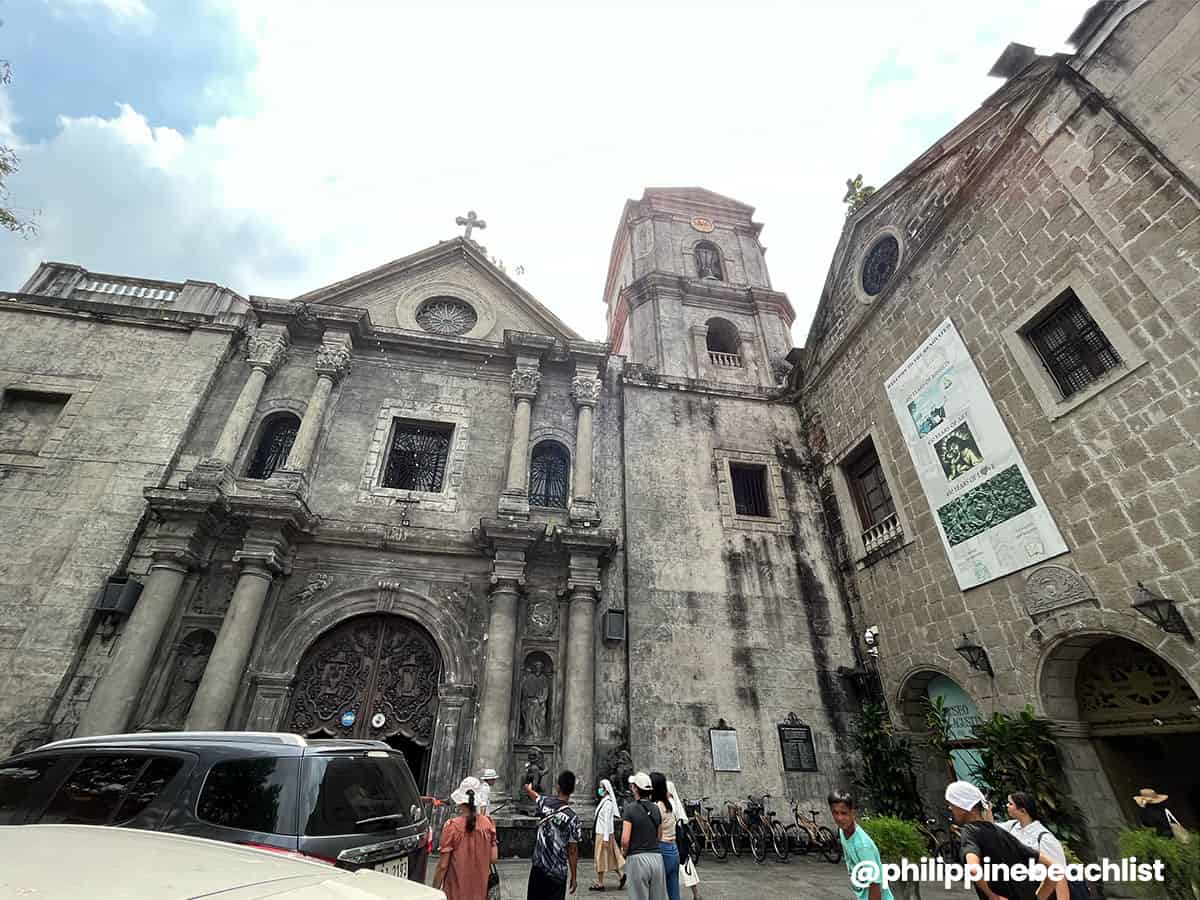
After the Battle of Manila, the original stone church underwent renovation in 1854. Despite enduring multiple major earthquakes, one of which necessitated the permanent removal of its left tower, San Agustin Church has also functioned as a hospital and served as a concentration camp during the second world war under Japanese occupation. At present, the church is under the Augustinian friars of the Province of the Most Holy Name of Jesus of the Philippines. Its monastery is now a museum adjacent to it, which tourists can also visit.
Do yourself a favor and look up when you enter the church. I honestly wouldn’t have known that the carvings on the ceiling weren’t even carvings at all, but rather trompe-l’œil paintings ! This mind-boggling view alone made this a must-see for us.
Location : General Luna Street, Intramuros, Manila City
Museo de San Agustin
Located next to San Agustin Church, Museo de San Agustin houses religious artifacts, carvings, books, and more. It occupies two floors and features several galleries. When you enter the museum, massive religious paintings will greet you at the door. A replica of the Sto. Niño de Cebu that was gifted by Ferdinand Magellan to Rajah Humabon’s wife, Juana, also sits in the hallowed halls of this museum.
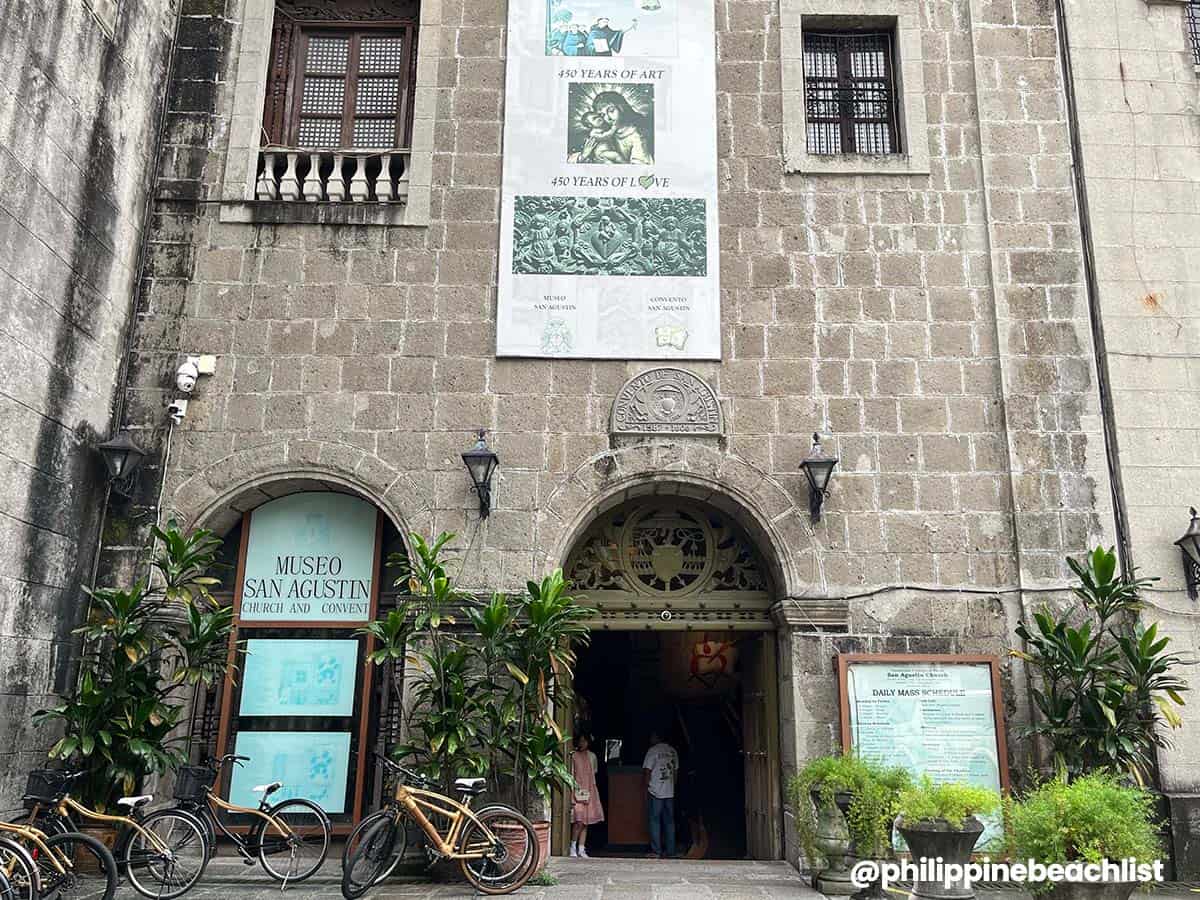
Inside the museum, a section includes a library exhibiting books and manuscripts dating from the 16th century to the present. Displays of medicinal plants used as remedies in the past are also featured. Art and history enthusiasts can explore the crypt, the final resting place of Juan Luna. Visitors can access the inner garden of the church from the museum, making it an extensive exploration that merits at least an hour’s visit.
Opening Hours : Daily, 8:00 AM – 12:00 PM; 1:00 PM – 5:00 PM. Schedule might change without prior notice. Make sure to visit their website or official Facebook page for updates. Entrance Fee : Regular, P200; Children, Student, Senior Citizen & PWD, P160 Location : General Luna Street corner Real Street, Intramuros, Manila City
Bahay Tsinoy

Bahay Tsinoy or Museum of Chinese in Philippine Life is another museum situated within the walls of Intramuros. It is home to the Kaisa-Angelo King Heritage Center, which documents and showcases the life of the ethnic Chinese in the Philippines over the years.
Since 1999, the museum has stood on the corner of Anda and Cabido street. Inside, the museum features multiple sections including The Parian, Colonial Culture, Emergence of the Chinese Community, and Life in the 1800s. You will also find a gallery of rare prints and photographs and Martyr’s hall. A collection of ceramics and rare Philippine shells also make an appearance in the museum.
Opening Hours : Tuesday to Sunday, 10:00 AM – 5:00 PM; Monday, CLOSED. Schedule might change without prior notice. Make sure to visit their website or official Facebook page for updates. Entrance Fee : P100 Location : Anda Street corner Cabildo Street, Intramuros, Manila City
Destileria Limtuaco Museum
Destileria Limtuaco is the oldest distillery in the Philippines. Along San Juan de Letran Street in Intramuros, you will find their museum in a stone house. Opened in 2018, Distileria Limtuaco Museum tells the history of the company and their products. When you visit, you have the option to just pay the entrance fee to enter the museum or pay an additional P100 for a liquor tasting at the end of your museum tour.
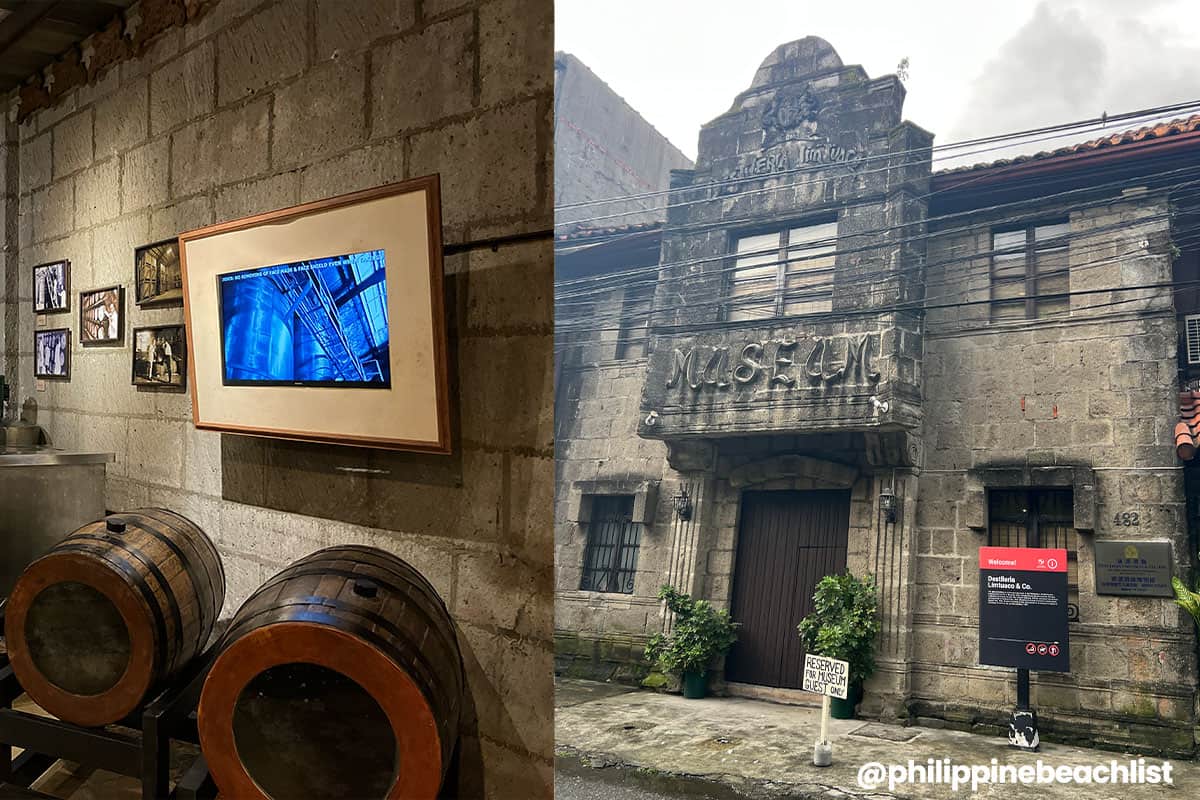
Our visit at the Destileria Limtuaco Museum is easily topped our Intramuros itinerary. When we entered, their friendly staff greeted us at the entrance. Then, their museum guides — whom we later found out were student-interns from nearby universities! — toured us around the two floors of the museum. They told us about the history of the company and ran us through the process of making different types of liquor. We appreciated how fleshed out this tour was, considering how most attractions in Intramuros don’t really have in-house guides. It’s perfect for D-I-Y-ers who aren’t accompanied by hired guides.
Proudly displayed in the Destileria Limtuaco Museum are the countless products under the brand, starting from their very first product, a Chinese herbal wine commonly known as sioktong , to their most popular product, the White Castle Whiskey . Their craft spirits also made quite the impression, with Filipino flavors like mango, calamansi, dalandan, coffee, and cacao, and their unique packaging.
We’re telling you now: avail the liquor tasting! You’ll get to try 6 of their products, four of which you can choose for yourself. Personally, we went for their craft spirits and the Intramuros or Liqueur de Cacao turned out to be our favorite!
Opening Hours : Tuesday to Sunday, 9:00 AM – 5:00 PM; Monday, CLOSED. Schedule might change without prior notice. Make sure to visit their website or official Facebook page for updates. Entrance Fee : Regular, P100; Children, Student, Senior Citizen, PWD, P50; Liquor Tasting, additional P100 Location : San Juan de Letran Street, Intramuros, Manila City
Walk Around Intramuros
If we’re being honest here, this list barely covers the rich history of Intramuros. But the best tip we have to remedy this is simple: if you’re looking for more things to do and places to visit, just walk around the walled city!
Keep an eye out for historical markers that narrate the brief history of the buildings or areas you will come across. Most of the more classic markers (usually made of stone or metal, in a gray or brown shade with white font) will be accompanied by Intramuros Administration’s more modern markers in red and black. Better yet, you can grab a map from the Fort Santiago Information Center to see where exactly you can find these historical sites.
More fortifications, military installations, and gates can be seen around here. You will also come across monuments, public installations, and plazas. Government buildings, residences, and palaces are also all over the district, some of which are already reconstructed or harbor no existing structure at all. We will list some of these spots below.
Overall, it’s best to visit Intramuros early in the morning or late in the afternoon to avoid extreme heat, especially if you’re visiting during the dry months.
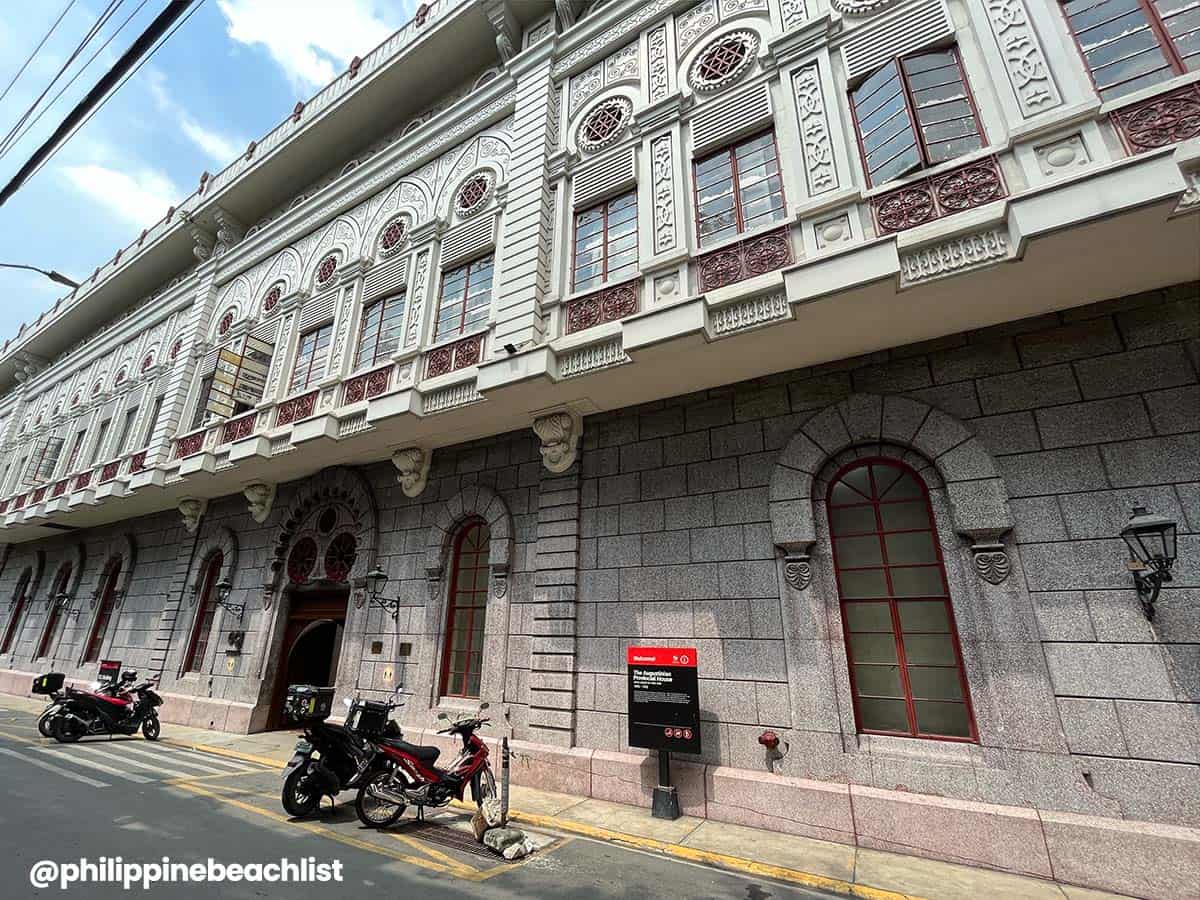
Other sites to see :
- Palacio del Gobernador
- ECJ Building
- Galleria de los Presidentes
- Baluartillo de San Jose
- Intendencia or Aduana Building
- Monument to Charles IV, King of Spain
If you’re interested in learning more about Intramuros and its historical sites, you can take a guided walking tour of the walled city. Klook’s Intramuros Walking Tour includes entrance fees and a DOT-accredited guide.
✅ CHECK ITINERARY & BOOK HERE!
Where to Stay in Intramuros
If you can’t get enough of Intramuros, you can actually book a stay with the two hotels within the historic city. However, there are more hotel options in other areas in the City of Manila. The area closest to Intramuros is Ermita where you will also find other attractions in the city like the National Museum Complex and Rizal Park. Malate, a popular food and nightlife district, is also a possible option. Below are some of the hotels you can book for your stay in Manila.
- THE BAYLEAF INTRAMUROS ✅ Booking.com | Agoda | Hotels.com
- WHITE KNIGHT HOTEL INTRAMUROS ✅ Booking.com | Agoda | Hotels.com
- THE MANILA HOTEL ✅ Booking.com | Agoda | Hotels.com
- RIZAL PARK HOTEL ✅ Booking.com | Agoda | Hotels.com
- ADMIRAL HOTEL MANILA – MGALLERY ✅ Booking.com | Agoda | Hotels.com
- SHERATON MANILA BAY ✅ Booking.com | Agoda | Hotels.com
You can also check out these posts for more hotel suggestions around Manila:
- Top 10 Hotels in Ermita
- Top 10 Hotels in Malate
- Top 10 Hotels Near Manila Bay
- Historic Hotels in Metro Manila
Find more Manila Hotels!
Updates log.
2024.01.06 – Updated opening hours
2023.12.29 – Updated Where to Stay section
2023.11.03 – First uploaded

Related posts:
- Top 10 Things to Do & Tourist Spots Along LRT-1 in Manila
- Top 10 Hotels in Malate (Manila) 2023
- Top 10 Hotels in Ermita (Manila) 2023
- Top 12 Things to Do & Tourist Spots in Makati
- Top 20 Things to Do & Tourist Spots in BGC
- How to Get from NAIA to MANILA (Malate, Ermita, Intramuros & Binondo) 2024
- 2024 EDSA Carousel Metro Manila Guide – Bus Routes & Stops
- 10 Historic Hotels in Metro Manila

Leave a Reply Cancel reply
Email address
This site uses Akismet to reduce spam. Learn how your comment data is processed .
- 1.5 MILLION Followers
- 11,400 Followers
- 5600 Followers

Things to Do in Intramuros Manila: A Guide to the Best Activities and Attractions
Intramuros, the historic walled city of Manila, offers visitors a glimpse into the Philippines’ rich colonial past. Intramuros is a must-visit destination for history buffs and culture enthusiasts with its well-preserved Spanish-era architecture, centuries-old churches, and museums. The walled city, built in the late 16th century, was the seat of government and center of trade during the Spanish colonial period.
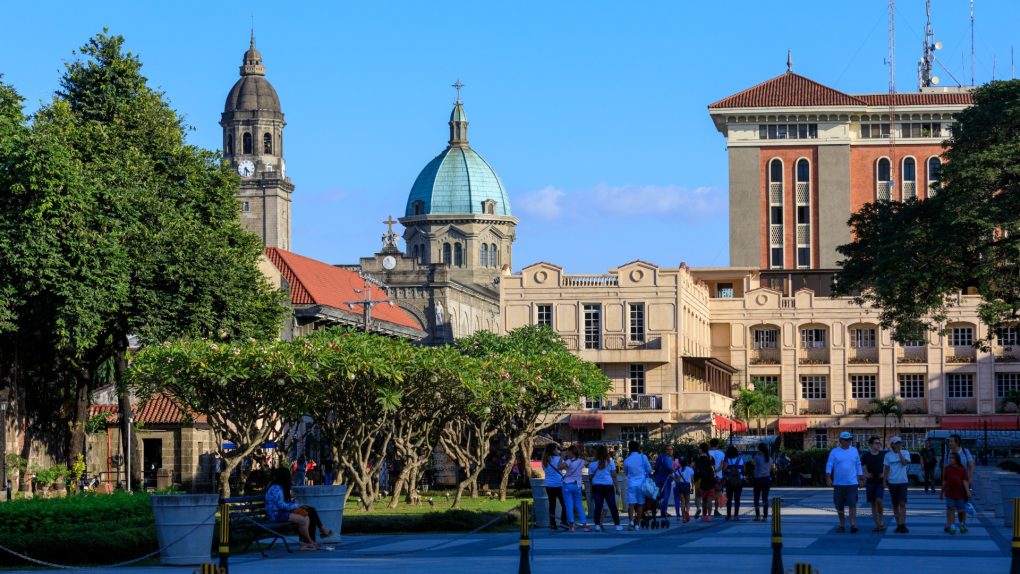
There are plenty of things to do in Intramuros, whether you’re interested in history, art, or food. Visitors can explore the ancient walls and fortifications of Fort Santiago, which once served as a military prison during the Spanish and American colonial periods. The Rizal Shrine, located inside the fort, is a tribute to the national hero Jose Rizal, who was imprisoned here before his execution in 1896. The San Agustin Church and Museum, a UNESCO World Heritage Site, is another must-visit attraction in Intramuros. The church, built in the 16th century, is the oldest stone church in the country and features stunning Baroque architecture. The museum, located inside the adjacent monastery, houses an impressive collection of religious art and artifacts.
Table of Contents
Historical Significance
Spanish era.
Intramuros is a walled city in Manila, Philippines, built by the Spanish in the 16th century. It served as the center of political, religious, and military power during the Spanish colonial period. The walls were constructed to protect the city from foreign invasions and pirate attacks. The Spanish era in Philippine history is characterized by the introduction of Christianity, the establishment of a feudal system, and the imposition of forced labor.
The most significant structures built during the Spanish era in Intramuros are the Manila Cathedral and the San Agustin Church. The Manila Cathedral is the mother church of the Philippines and has been destroyed and rebuilt several times throughout its history. The San Agustin Church is the oldest stone church in the Philippines and has been declared a UNESCO World Heritage Site.
American Era
In 1898, the Philippines was ceded to the United States by Spain after the Spanish-American War. The American era in Philippine history is characterized by the introduction of a democratic system of government, establishing public education, and constructing infrastructure such as roads and bridges.
Intramuros was heavily damaged by a massive fire in 1932 during the American era. The American government rebuilt some of the structures, such as the Manila Cathedral, but many were left in ruins.
World War II
In 1941, the Philippines was invaded by Japan during World War II. The Japanese heavily bombed Intramuros, and much of the city was destroyed. The walls of Intramuros, which had withstood centuries of attacks, were breached by the Japanese army.
After the war, the Philippine government tried restoring Intramuros to its former glory. Many of the damaged structures were rebuilt, and the walls were repaired. Today, Intramuros serves as a reminder of the rich history of the Philippines and the country’s struggles over the centuries.
In conclusion, Intramuros has played a significant role in Philippine history and has survived through various periods of colonial rule and war. The walled city stands as a testament to the Filipino people’s resilience and determination to preserve their cultural heritage.
Landmarks and Attractions
Intramuros is home to various landmarks and attractions that offer a glimpse into Manila’s rich history and culture. From ancient ruins to museums and churches, there is something for everyone to explore and discover.
Fort Santiago
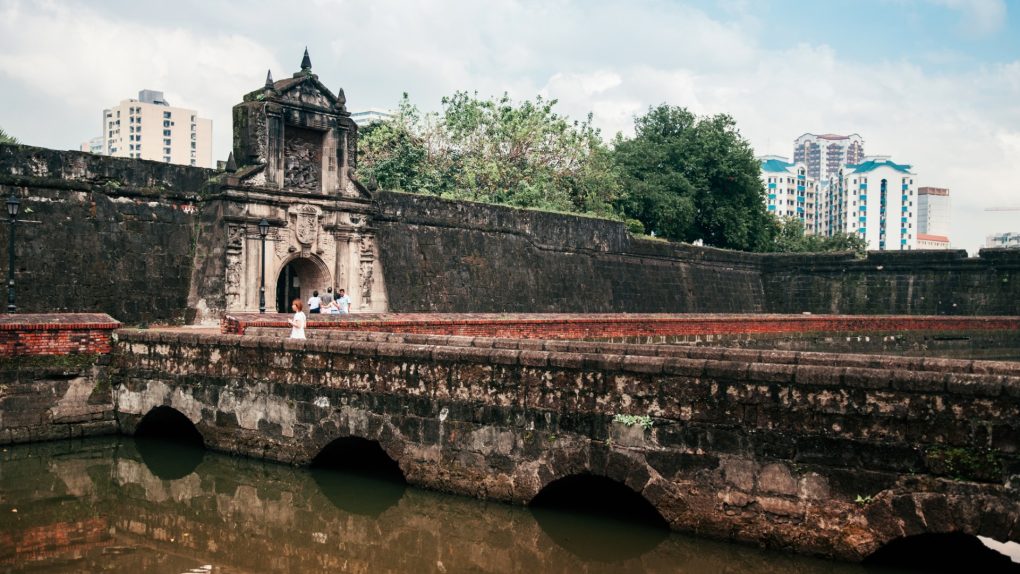
Fort Santiago is a must-visit attraction in Intramuros. Built in the 16th century, this fortress served as a military stronghold for Spanish conquistador, Miguel López de Legazpi. Today, Fort Santiago is a popular tourist destination that allows visitors to explore its dungeons, barracks, and ramparts.
Manila Cathedral
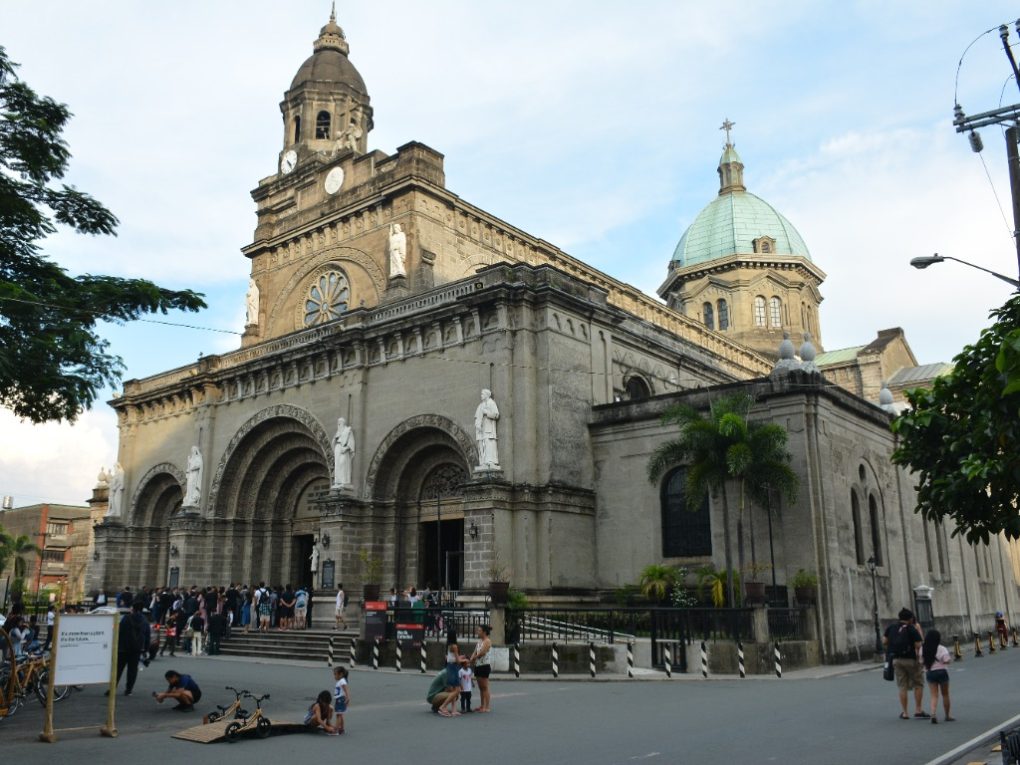
The Manila Cathedral is one of the most iconic landmarks in Intramuros. Built in the late 16th century, this cathedral is a testament to the country’s strong Catholic faith. Visitors can marvel at the cathedral’s intricate architecture and beautiful stained glass windows.
San Agustin Church
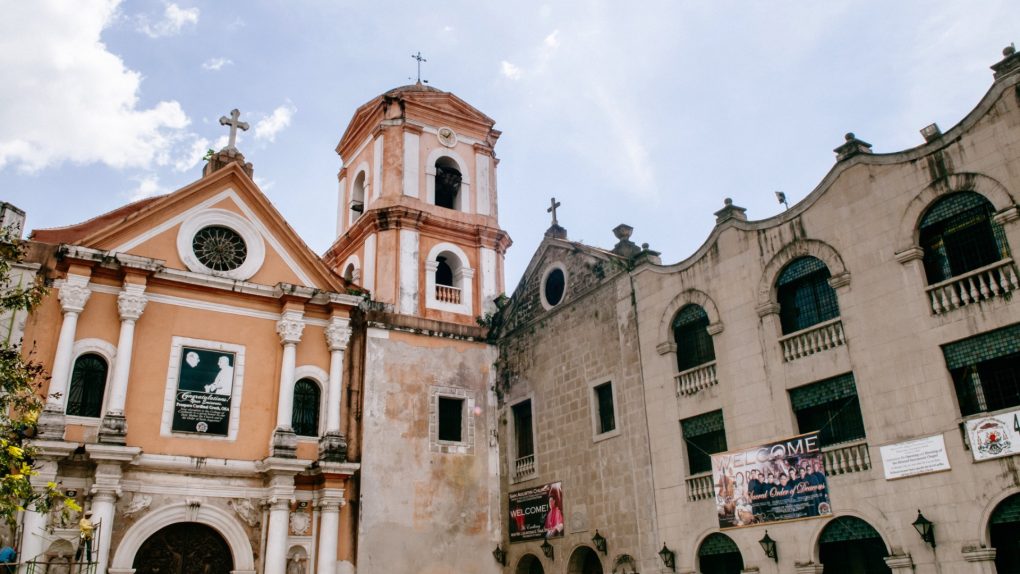
The San Agustin Church is another must-visit attraction in Intramuros. This church is one of the oldest in the country and is a UNESCO World Heritage Site. Visitors can explore the church’s ornate interiors and learn about its rich history.
Rizal Shrine
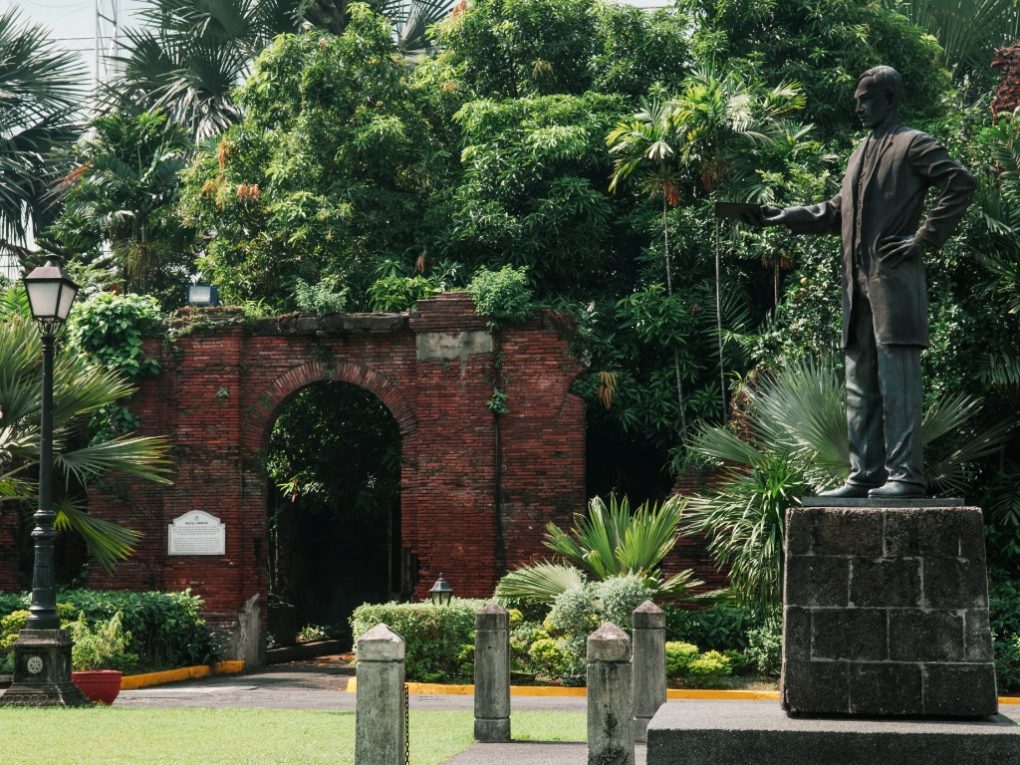
The Rizal Shrine is a museum dedicated to the life and works of the Philippine national hero, Jose Rizal. Visitors can explore the museum’s exhibits and learn about Rizal’s contributions to Philippine history.
Casa Manila Museum
The Casa Manila Museum is a beautifully restored 19th-century mansion that offers visitors a glimpse into the lifestyle of the Filipino aristocracy during the Spanish colonial period. Visitors can explore the mansion’s ornate interiors and learn about the country’s rich cultural heritage.
Bahay Tsinoy Kaisa Heritage Center
The Bahay Tsinoy Kaisa Heritage Center is a museum dedicated to the Chinese-Filipino community. Visitors can explore the museum’s exhibits and learn about the community’s contributions to Philippine history and culture.
Museo Filipino Intramuros
The Museo Filipino Intramuros museum showcases the country’s rich cultural heritage. Visitors can explore the museum’s exhibits and learn about the Philippines’ history, art, and culture.
Museo de Intramuros
The Museo de Intramuros is another museum that offers visitors a chance to learn about the country’s rich history and culture. Visitors can explore the museum’s exhibits and learn about Intramuros’ role in Philippine history.
Palacio del Gobernador
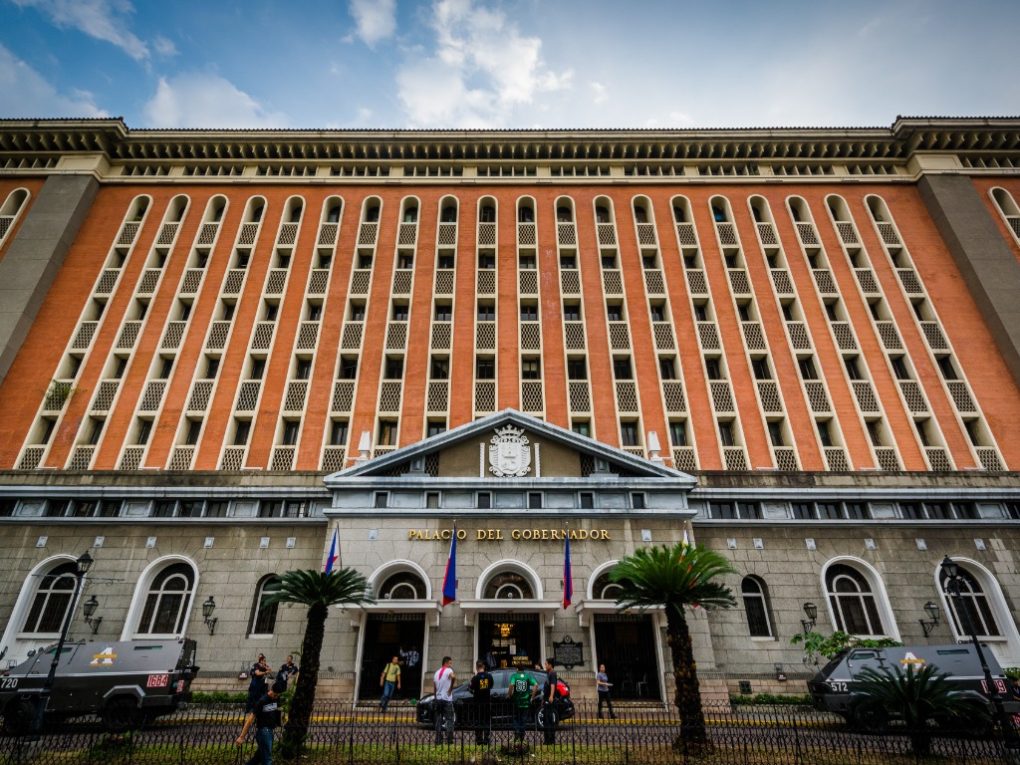
The Palacio del Gobernador is a historic building that served as the seat of the Spanish colonial government in the Philippines. Visitors can explore the building’s ornate interiors and learn about its rich history.
Aduana Ruins
The Aduana Ruins are the remains of a custom house that was built in the 19th century. Visitors can explore the ruins and learn about its role in the country’s history.
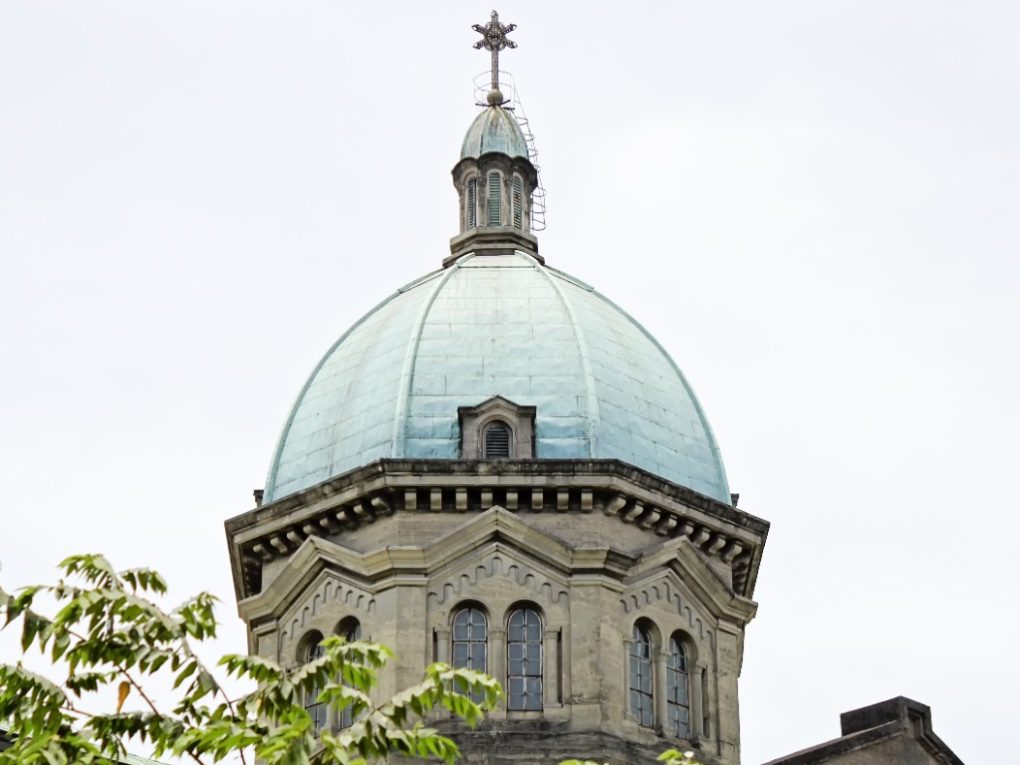
Plaza Roma is a historic square that serves as the heart of Intramuros. Visitors can explore the square’s beautiful gardens and fountains and learn about its role in the country’s history.
Plaza Espana
Plaza Espana is another historic square that offers visitors a chance to learn about the country’s rich history and culture. Visitors can explore the square’s beautiful architecture and learn about its role in Philippine history.
Plaza San Luis Complex
The Plaza San Luis Complex is a historic complex that allows visitors to explore the country’s rich cultural heritage. Visitors can explore the complex’s museums, galleries, and restaurants and learn about the country’s history and culture.
Cultural Experiences
Intramuros is a hub of cultural experiences that offer a glimpse into the rich history and heritage of the Philippines. Here are some of the top cultural experiences in Intramuros that you shouldn’t miss.
Mananzan Handicrafts
Mananzan Handicrafts is a local handicrafts store that showcases traditional Filipino crafts. Visitors can find handcrafted items such as bags, baskets, and accessories made from indigenous materials like abaca, bamboo, and pandan. The store is located in Casa Manila Museum, a restored 19th-century Spanish colonial house that offers a glimpse into the lifestyle of the upper class during the Spanish colonial era.
Carlos Celdran Walking Tours
Carlos Celdran Walking Tours offer a unique way to explore the history and culture of Intramuros. Led by a knowledgeable guide, visitors can explore the narrow streets and hidden corners of Intramuros while learning about its history and culture. The tour covers a range of topics, including the Spanish colonial era, World War II, and the country’s struggle for independence.
Bambike Tours
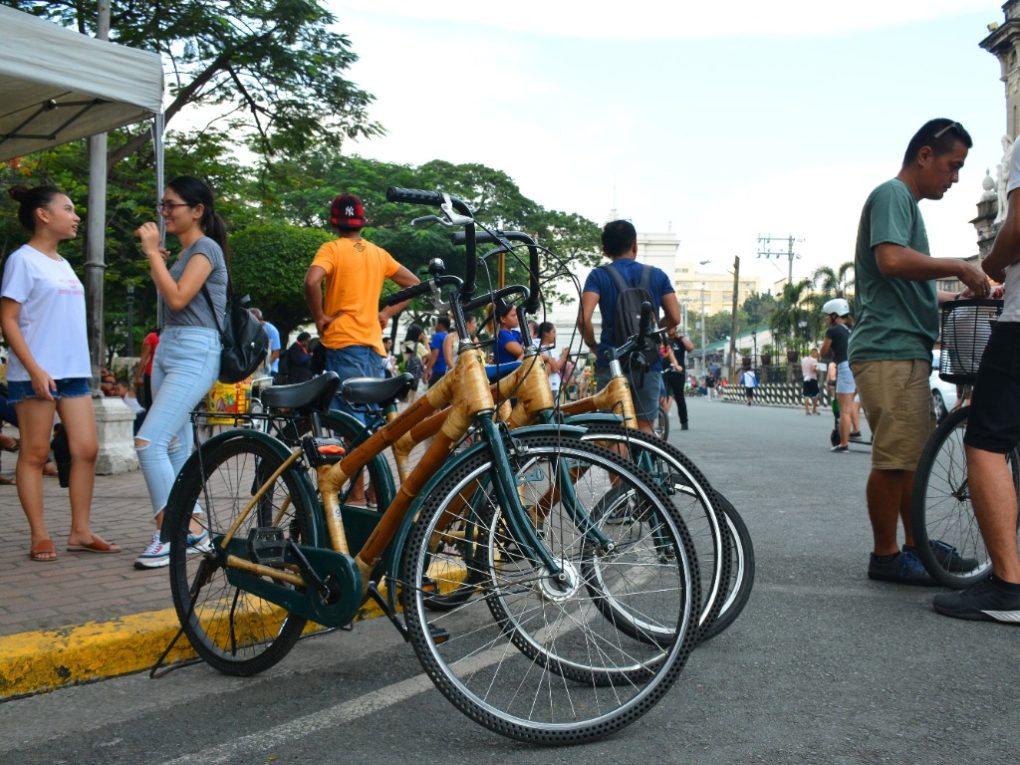
Bambike Tours offer visitors a chance to explore Intramuros on a bamboo bicycle. The bikes are made from sustainable materials and are designed to be eco-friendly. The tour takes visitors through the historic streets of Intramuros while providing insights into the city’s rich history and culture.
Kalesa Rides
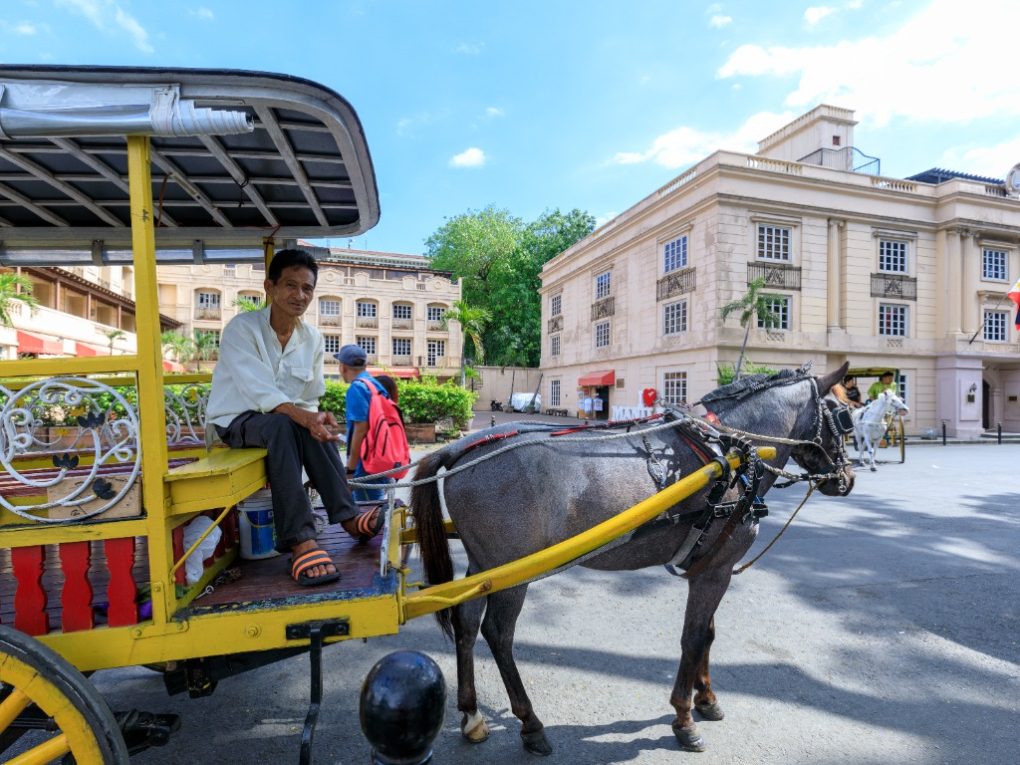
Kalesa Rides offer visitors a traditional mode of transportation that dates back to the Spanish colonial era. Visitors can take a ride on a horse-drawn carriage and explore the historic streets of Intramuros. The ride takes visitors past historic landmarks such as Fort Santiago and San Agustin Church.
Binondo Food Trip
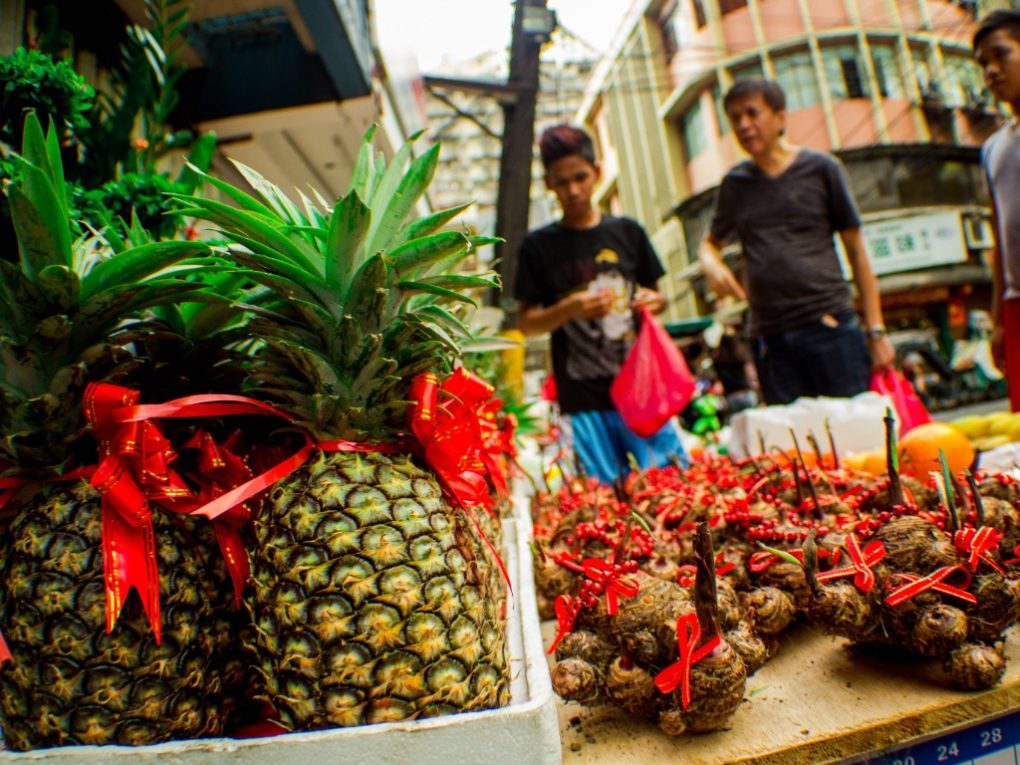
Binondo Food Trip is a culinary tour that takes visitors to the heart of Manila’s Chinatown. Visitors can explore the vibrant streets of Binondo while sampling a variety of Chinese-Filipino dishes. The tour covers a range of dishes, including dumplings, noodles, and exotic fruits.
Transportation
Getting around Intramuros is easy and affordable. Visitors can choose from various transportation options, including jeepney rides, pedicab rides, Central Terminal Station, and LRT access.
Jeepney Rides
Jeepneys are the most popular form of public transportation in the Philippines, and they are a great way to get around Intramuros. Visitors can catch a jeepney ride at any of the designated stops around the city. Jeepneys are cheap, and the fare varies depending on the distance traveled.
Pedicab Rides
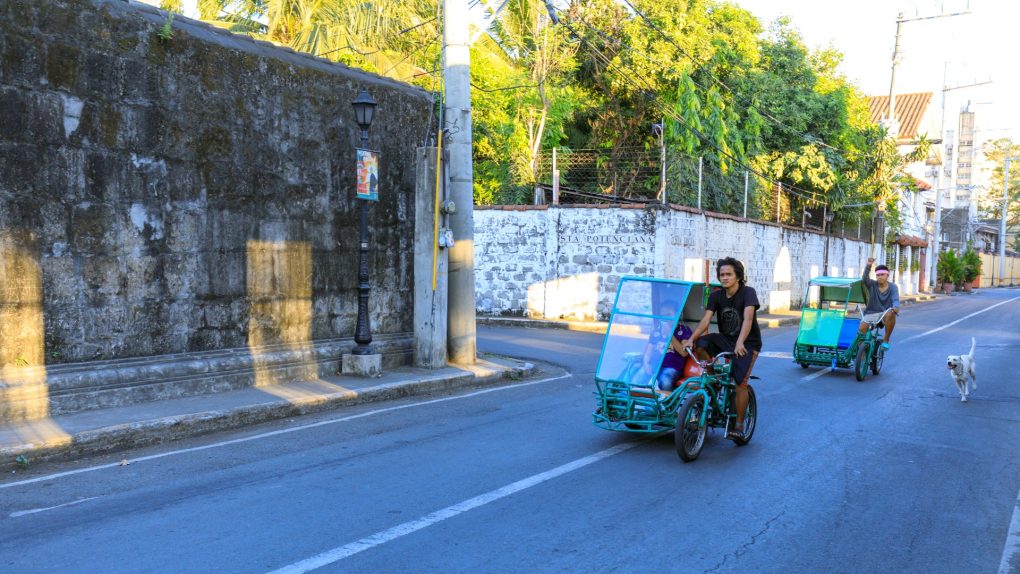
Pedicabs are another popular form of transportation in Intramuros. They are ideal for short distances and can be found around the city. Pedicab drivers are usually friendly and knowledgeable about the area, making them a great option for tourists who want to learn more about the city’s history.
Central Terminal Station
The Central Terminal Station is the main transportation hub in Intramuros. Visitors can catch buses, jeepneys, and taxis from the station to other parts of Manila and beyond. The station is located near the entrance of Intramuros, making it a convenient starting point for exploring the city.
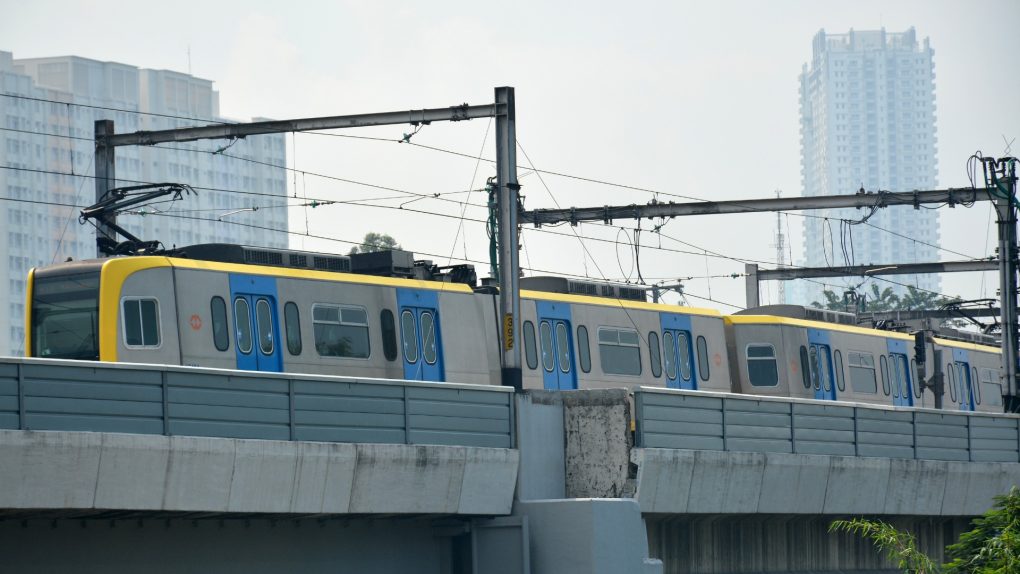
The LRT (Light Rail Transit) is a fast and efficient way to get around Manila. Visitors can access the LRT from various stations around the city, including Central Terminal Station. The LRT is a great option for tourists exploring other parts of Manila outside Intramuros.
Tips and Guide
Intramuros is a popular tourist destination that offers a glimpse of Manila’s rich history. Here are some tips and guides to ensure that visitors can make the most out of their Intramuros experience.
Getting There
Intramuros is located in the heart of Manila and can be easily accessed by various modes of transportation. Visitors can take a jeepney or a taxi to get to Intramuros. Those who prefer a more scenic route can take a ferry ride along the Pasig River.
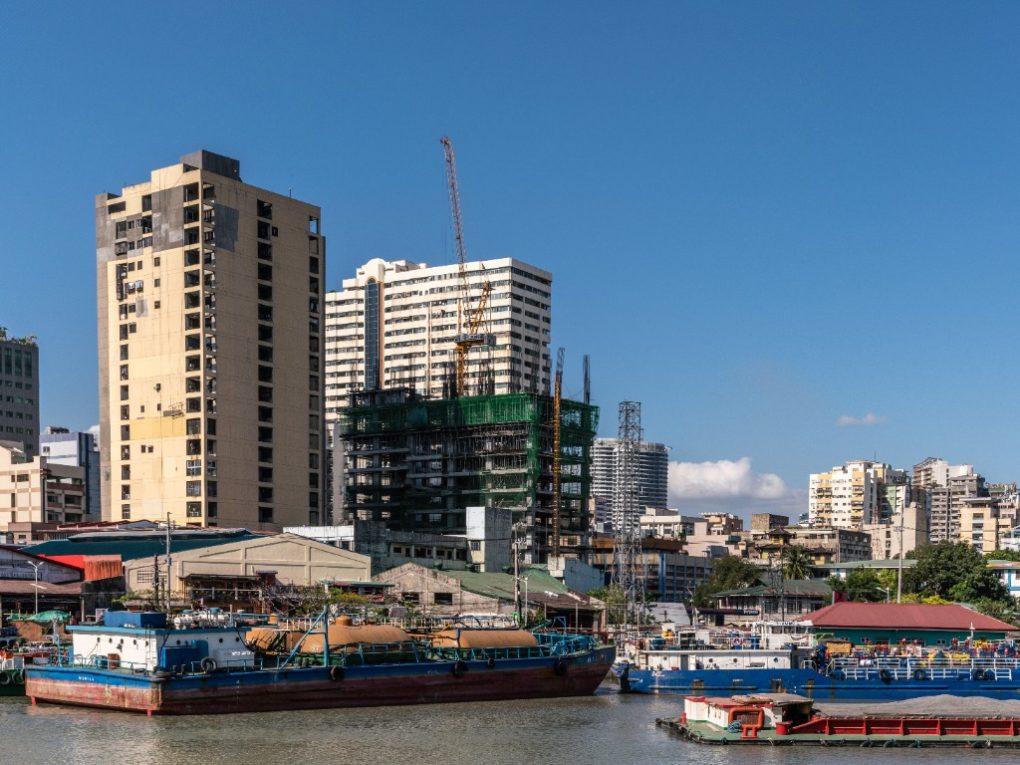
Guided Tours
To fully appreciate the beauty and history of Intramuros, visitors are encouraged to take a guided tour. Several tour companies offer guided tours of Intramuros. These tours are led by knowledgeable guides who can provide insights into the history and culture of Intramuros.
Government Regulations
Intramuros is a UNESCO World Heritage Site, and as such, there are strict regulations that visitors must follow. Visitors are not allowed to litter or vandalize any of the structures within Intramuros. Smoking is also prohibited in public areas.
Explore Trade
Intramuros was once a bustling center of trade and commerce. Visitors can explore the various shops and restaurants within Intramuros to get a taste of the local culture. Several museums within Intramuros showcase the rich history of Manila.
Respect the Heritage Site
Visitors are reminded to respect the heritage site and to be mindful of their actions. They should refrain from touching or climbing on any of the structures within Intramuros. Visitors are also encouraged to take their trash with them and dispose of it properly.
In conclusion, Intramuros is a must-visit destination for anyone who wants to learn more about Manila’s rich history. By following these tips and guides, visitors can ensure that they have a memorable and enjoyable experience in Intramuros.

Top 12 Best TOURIST SPOTS IN INTRAMUROS + Things to do
Travel guide to the historic intramuros district in manila.
- shares
- Share on Facebook
- Share on Twitter
Complete Guide to Historical Sites, Activities, and Other Popular Tourist Attractions in Intramuros, Manila
Table of Contents
O ne step inside this walled city, and you’ve traveled back in time. Intramuros, Manila, is one of the central sites of the Philippine colonial period up to the American Commonwealth. Though Intramuros’ defense structures still stand tall, you’re now welcome to explore centuries’ worth of history within its walls.

Intramuros teems with historical sites and attractions, so we’ve compiled a shortlist to guide you to the best things to do and popular Intramuros tourist spots. Read through them below!

Plaza de Roma
Intramuros’s central square is a bustling activity hub, surrounded by some of the most iconic and important buildings in the walled city. The Manila Cathedral stands tall, its intricate spires reaching toward the heavens. Its grandeur and historical significance make it a sight to behold. Just across the square is the Palacio del Gobernador, a beautiful colonial-style building that has witnessed the city’s history for centuries.
The square is a great place to mingle with locals and tourists alike and take in the city’s sights and sounds. It is a great spot to relax and take a break from the hustle and bustle of the city. The square has trees that provide shade and a cool breeze in the hot summer. Street performers entertain the crowds with music and dance while vendors sell local snacks and souvenirs. The square is a perfect place to take a break, relax, and soak in the beauty of Intramuros.

Explore sites with a bamboo bike.
Related Tours: Manila: Historical Bamboo Bike Tour in Intramuros [ Book This Tour ]
Instead of tiring your feet out walking through the walled city, give yourself an alternative way to explore! Marvel at Intramuros’ beauty, find secret spots, and feel the decades pass by on a bamboo bike.
Choose from a selection of bamboo bike designs and have fun with your friends and family.
Live like the elites at Casa Manila.

Have you ever wondered how Filipinos lived under colonial rule? Casa Manila takes you back in time to witness everything. See antique furniture, artisan decor, fine art, and sculptures surrounding the three floors.
Wonder at the 18-seater kitchen and the expansive courtyard. Cap off your time travel session by relaxing near the decorative fountain!
Traceback Chinese heritage at Bahay Tsinoy

A few streets away from Casa Manila, you can get more in-depth information about the Philippines’ Tsinoy roots. The name directly translates to “the Filipino-Chinese house,” but it’s more than that.
You get to see how China first contacted the Philippines, how they assimilated, and which national heroes have Chinese heritage. Even Jose Rizal has traces of the Chinese mestizo family!
Learn about the National hero at Rizal Shrine.

Speaking of the famous Jose Rizal — visit memorabilia and his life’s work at the Rizal Shrine! View old documents, manuscripts, and books. Learn how he spent his final nights. He spent his last day in that building, writing his last poem, Mi Ultimo Adios.
Get lost in the dungeons at Fort Santiago.

Related Tour: Manila: Old & New 4-Hour City Tour [ BOOK THIS TOUR ]
After viewing the ruins in Fort Santiago, consider a tour of the dungeons. It only opens from 2 PM to 10 PM, so if you want an extra thrill, enter the dungeons at night!
Aside from being a prison cell, the dungeons also housed ammunition. It’s a fascinating place, but make sure to keep quiet! After all, it is hallowed ground.

Marvel at beautiful architecture at San Agustin Museum
Related Tours: Manila: Filipino Historical Walking Tour in Intramuros [ BOOK THIS TOUR ]
The San Agustin Church is one of the oldest churches whose beauty has persevered through the years. The architecture is enough to mesmerize tourists and locals alike, but what they keep inside will interest you.
You can view artifacts, documents, artwork, clothes, and other memorabilia.
Experience Filipino dishes at Barbara’s

Enjoy Intramuros’ historic charm by dining at this heritage restaurant. The decor is intricate and keeps the old-world ambiance, but the food is unparalleled! You can watch their cultural show as you taste the best Filipino meals.
Traditional dances, folk songs, and other performances give you a unique dining experience.
Get a souvenir of your day at Tradewinds Books and Silahis Center
You can find many antiques, artwork, and books inside a reconstructed building! Browse through pamphlets, hardcovers, and eclectic decor you can bring home anytime. If you want a quick meal, the restaurant Ilustrado is beside this shop.
Enjoy Alfresco Dining at La Cathedral Cafe

Looking for a perfect dinner rendezvous? This roof deck cafe overlooking the Manila Cathedral provides a relaxing and nostalgic vibe. It literally feels like Europe.
This new restaurant is famous for its alfresco dining while enjoying the sunset. Just check the weather before you visit the restaurant since there are only a few covered spaces for diners. It is also recommended to reserve a slot since reservations are seated in a more beautiful spot.
La Cathedral Cafe Address: 4/F AVR. Bldg., 636 Beaterio St. Intramuros, Manila, Philippines, 1002 Email: [email protected] Mobile: 0915-512-3317 FB: facebook.com/lacathedralcafe
Visit the Manila Cathedral

The Manila Cathedral is a must-visit tourist spot in Intramuros. Also known as the Cathedral Basilica of the Immaculate Conception, It is the seat of the Archbishop of Manila and one of the largest cathedrals in Asia. The cathedral was originally built in the 16th century and has undergone numerous renovations and reconstructions over the centuries due to earthquakes, fires, and other natural disasters.
The current structure of the Manila Cathedral was completed in 1958 and features a mix of Renaissance and Spanish Baroque architectural styles, with twin towers that rise to a height of over 70 meters. Inside, the cathedral is known for its stained glass windows, marble altars, and intricate carvings and sculptures. The cathedral also houses several religious artifacts and works of art, including the Our Lady of the Rosary relic, considered a sacred object by many Filipinos.

Baluarte de San Diego
Baluarte de San Diego is a historical fortification in Intramuros, the walled city of Manila. It was originally built by the Spanish colonial government in the late 16th century as part of a network of fortifications designed to protect the city from foreign invasions.
Baluarte de San Diego is considered one of the best-preserved Spanish-era fortifications in the Philippines and features an octagonal design, with a central courtyard surrounded by high walls and bastions. Over the centuries, Baluarte de San Diego played a role in several significant historical events, including the siege of Manila by the British in 1762, the American occupation of the Philippines in the late 19th and early 20th centuries, and the Battle of Manila in 1945 during World War II.
Today, Baluarte de San Diego is a popular tourist attraction in Intramuros, showcasing the rich history of the Philippines and the Spanish colonial period.
We hope you enjoyed this list of amazing Intramuros tourist spots! While we guarantee these activities and sites will leave a lasting impression as Intramuros has on Manila, we encourage you to explore yourself. After you visit our recommendations, go for a walk around the area.
See the quiet spots. Immerse in the community. You’ll enjoy it!
Want more updates about new package tours and tourist spots in Intramuros, Manila, Philippines? Follow #TeamOutofTown, on Facebook , Twitter , Instagram , Bloglovin, and Pinterest for more travel ideas.
- History Town Philippines Relaunched In Intramuros Manila
- LOOK: You Can Now Explore The 16th Century Dungeons In Fort Santiago At Night
- Exploring The Walled City Of Avila In Castilla Y Leon
- Top Five Attractions in the Historic City of Manila
- Intramuros Walking Tour: Re-discover Manila’s Old World Charm
- 6 Reasons Why You Should Visit Iloilo
Written by Melo Villareal
Melo Villareal is the Online Publisher of Outoftownblog.com. He is an Accountant by profession who left the corporate world at the age of 23 to explore his beautiful country and the rest of the world. Today, Melo works as a part-time Social Media Manager for local and international clients. His full-time work focuses on discovering interesting culture, explore different cuisines and take memorable photos from local and international destinations he's visiting.
What do you think?

A Guide to Motomachi Neighborhood in Hakodate, Japan

Limited Time Only: ‘Sail’ with 2GO Travel and ‘Stay’ for 3D2N in Boracay for only P4,999!
© 2024 by Team Out of Town
With social network:
Or with username:.
Username or Email Address
Remember Me
Forgot password?
Enter your account data and we will send you a link to reset your password.
Your password reset link appears to be invalid or expired.
Privacy policy.
To use social login you have to agree with the storage and handling of your data by this website. Privacy Policy
Add to Collection
Public collection title
Private collection title
No Collections
Here you'll find all collections you've created before.

11 Can’t-Miss Intramuros Tourist Spot
Intramuros is one of Manila’s oldest districts and is brimming with culture and history. It is also where one can find many old Spanish-era influences and is a pride of the country.
Intramuros was largely destroyed during World War II. Thankfully, it has been lovingly rebuilt. Now, it contains many examples of Spanish colonial architecture in the city.
If you’re looking for a taste of old-world charm, Intramuros is the place for you. Here are 11 tourist spots you can’t miss when visiting Intramuros.
Table of Contents
Explore on a Tour
Choose from any of the following tours:
- Intramuros Bambike Tour
- White Knight Electric Chariot Intramuros Day Tour
- Walls of This Content Intramuros Tour: An Interactive Walk in Manila
San Agustin Church

The San Agustin Church is not only one of the oldest churches but also one of the beauties able to withstand the test of time. If you want an example of Spanish Baroque style, look no further than the high altar and Trompe-l’œil ceilings in this church. In 1993, it was made a UNESCO World Heritage Site thanks to its rich history as part of Hispanic culture dating back centuries.
Mesmerizing tourists and locals with its exterior, the architecture is only half of what makes this place so grand. Once you step inside, you won’t know where to look first with all the fascinating documents, artifacts, clothes, artwork, and other memorabilia on display.
Casa Manila
Casa Manila is the perfect place to take a trip back in time and find out about how Filipinos lived during colonial rule. With fine art, sculptures, artisan decor, and antique furniture spread across three floors, you’ll be able to immerse yourself in Filipino history like never before.
Casa Manila is the recreation of the 18th-century home of an upper-class family or Ilustrados. You get to experience what a wealthy household would look like during the colonial era, and discover a piece of Filipino culture.
Fort Santiago

This citadel built by the Spanish government in 1593 was used to protect the then-newly established city of Manila. The Japanese soldiers utilized the dungeons to hold political prisoners and fighters of resistance during World War II. Many lives were lost and imprisoned in this stone fortress, including Dr. Jose Rizal, who is the country’s national hero.
There is an old theater, old dungeons, and gardens surrounding Fort Santiago. that you can explore by riding kalesa or carriages. The government opened its dungeons for the public so visitors could see the dungeons and learn more about its history.
Baluarte de San Diego
The Baluarte de San Diego originally served as a fort to protect Intramuros during Spanish rule. It is the only surviving structure left among the original seven bastions of Intramuros. Built and designed in the late 1580s by a Jesuit priest named Antonio Sedeno, it used to serve as a drowning chamber during the Spanish era.
Nowadays, Baluarte de San Diego is a popular destination for weddings and other special occasions, thanks to its beautiful gardens adorned with lush plants, water fountains, pathways, and an attractive pergola. The site’s main feature is the circular dungeon, Fort Nuestra Señora de Guia, which houses artifacts and documents from the Spanish colonial period.
Manila Cathedral

This is one of the most vital churches in the Philippines, Manila Cathedral. Some people know this as the Minor Basilica of the Immaculate Conception. The Roman Catholic Archdiocese of Manila occupies this cathedral.
Erected in 1581 and consecrated in 1958, the church has undergone several renovations. It features Neo-Romanesque architecture, with a wide marble and granite dome surrounded by stucco walls.
Museo de Intramuros
The Museo de Intramuros is the perfect place to learn more about Spanish colonial rule in the Philippines. The museum contains about 500 religious artifacts discovered in old churches near the Walled City of the Philippines.
Despite the massive collection, it only houses 30% of the total cultural items and manuscripts. It exhibits artifacts, documents, and objects that help visitors understand the period.
Bahay Tsinoy
Not only did the Spanish have a great influence in the Philippines, but the Chinese also had a rich history. At the museum, you can see dioramas of Chinese goldsmiths, traders, and more. The most interesting thing in the museum is not a masterpiece painting or sculpture but a humble sari-sari store that played an important role in early Chinese settlers’ lives in the Philippines.
At Bahay Tsinoy, you can learn about the influence and history of Chinese culture on Filipino life. You’ll also find authentic Chinese costumes and a replica of the original Chinese settlement. The museum has many interactive displays for visitors to explore and learn about the Filipino-Chinese community.
Light and Sound Museum
The Bagumbayan Light and Sound Museum is unique compared to other museums. They only allow groups of 10 people in at a time. If you’re passionate about history or simply want to learn something new, this museum in Intramuros Manila is perfect for you.
In this interactive museum, you can learn about Jose Rizal’s life and works. It is also one of the most interactive shows that provide a vivid visual retelling of Philippine history through lights, special effects, and projections.
Silahis Center
The Silahis Center is an old house turned into a gallery and museum. It houses the private collections of famous Filipino painter Fernando Amorsolo, showcasing his works and some of his contemporaries. Recitals, concerts, plays, and other special events in the past used to grace its walls.
Today, the house’s garden serves as a space for various art workshops and seminars on Philippine history and culture. The Silahis Center also holds art exhibitions and lectures that allow people to appreciate Filipino artists’ works. You can take home cultural and traditional artifacts from the Silahis Center.
Barbara’s Heritage Restaurant

Barbara’s Heritage Restaurant is a great place to take a break while exploring Intramuros. Built in the 1950s, it is a classic Filipino restaurant with traditional Filipino delicacies and some international dishes.
It is not only known for its delicious food but also for its preserved architecture. You can find various antiques inside, such as old photos of Intramuros and old furniture that will make you feel like you are taken back in time.
Cafe Intramuros
Cafe Intramuros offers a unique dining experience in the heart of Intramuros. This place is perfect for anyone who wants to try Filipino delicacies and drinks.
Cafe Intramuros is definitely worth a visit and a must-try for anyone looking for good food and a great atmosphere. The restaurant has a wide selection of dishes perfect for both small and large appetites. You can also get an incredible view of the Walled City while savoring every delicious bite.
Visiting Intramuros is an amazing experience that will give you a glimpse of the past. With its rich culture, history, and amazing attractions, it is no wonder why this place is at the top of everyone’s travel list. Whether you are looking for an educational trip or a fun adventure, Intramuros is the perfect destination!
Related Posts

What It’s Like Living In the Coldest City of the Philippines
This page may contain affiliate links. More info in our Privacy Policy Growing up in the province of Benguet, it’s no secret that I would…
Read this article »
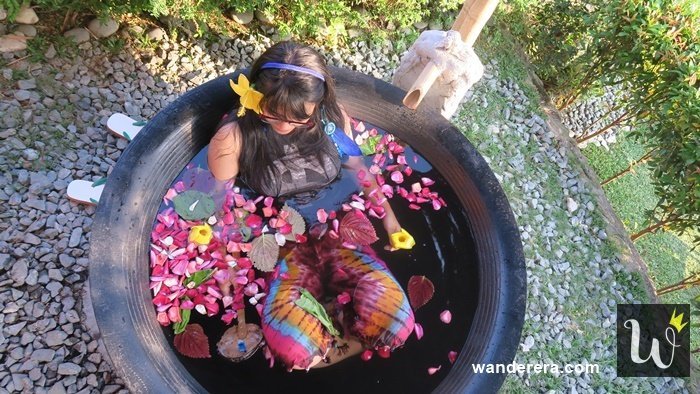
La VeryOl’s: A Relaxing Glamping Experience in Tagaytay
This page may contain affiliate links. More info in our Privacy Policy If you’re looking for a great place to stay in Tagaytay – check…

Mactan Island Hopping (Complete Travel Guide)
This page may contain affiliate links. More info in our Privacy Policy Did you know there are several islands near Mactan island? Yup! And you…
Leave a Comment Cancel Reply
Your email address will not be published. Required fields are marked *
This site uses Akismet to reduce spam. Learn how your comment data is processed .
mytourguide.ph
Explore Intramuros: The Heart of Old Manila’s Rich History
Intramuros is the ancient heart of Manila , a walled city that showcases the rich history and Spanish architecture of Old Manila . Built by the Spaniards as their political and military base in Asia, this historical gem has become one of the Philippines’ most popular tourist spots.
Surrounded by 22-foot-high walls , Intramuros is easily navigable on foot or by bike. As you explore the city, you’ll encounter a myriad of historical sites that offer a glimpse into the Spanish colonial era . From imposing stone walls and forts to stunning churches and museums , the attractions within Intramuros provide a fascinating journey through time.
Notable landmarks include Fort Santiago , where national hero Jose Rizal was executed, and the magnificent Manila Cathedral with its breathtaking stained-glass windows . San Agustin Church , dating back to 1607 , stands as a testament to the Spanish period , while Casa Manila offers a glimpse into the opulent lifestyle of the Spanish elite.
To enhance your Intramuros experience, you can choose to explore the city with a horse-drawn cart or an E-Trike . These unique modes of transportation allow you to immerse yourself in the rich history and architectural beauty of this captivating destination.
The best time to visit Intramuros is during the dry season from December to May when the weather is pleasant and the crowds are less intense. However, the cooler temperatures and lighter traffic during the cool dry season (December-February) can also make for an enjoyable visit. The rainy season from June to November should be approached with caution, as it may bring heavy rainfall. Remember to dress accordingly and carry an umbrella if visiting during this time.
Accessibility to Intramuros is convenient, with various modes of transportation available. Land transportation options include taxi cabs , car booking apps , as well as the LRT and MRT train lines. Buses are also popular for traveling to Intramuros.
During your visit, don’t miss the opportunity to savor local cuisine and dine at recommended restaurants and bars within Intramuros. Indulge in the flavors of the Philippines while immersing yourself in the historical ambiance of the walled city.
Important practical information and tips include understanding the local currency , being aware of the language spoken, prioritizing safety , and utilizing public transportation for a seamless experience.
Overall, a trip to Intramuros promises an unforgettable exploration of Manila’s rich history and heritage . Step back in time and discover the beauty of this historical gem.
Key Takeaways:
- Intramuros is an ancient walled city in Manila that showcases rich history and Spanish architecture .
- Explore Intramuros on foot or by bike to fully appreciate its charm.
- Visit historical sites like Fort Santiago , Manila Cathedral , San Agustin Church , and Casa Manila .
- Experience a unique journey through Intramuros with a horse-drawn cart or E-Trike .
- Consider the weather when planning your visit, with the dry season from December to May as the best time to go.
- Various modes of transportation make getting to and around Intramuros convenient.
- Indulge in local cuisine and dine at recommended restaurants and bars within the walled city.
- Prepare with practical information and tips to ensure a smooth and enjoyable visit.
Discovering the Spanish Colonial Era in Intramuros
Step back in time and explore Intramuros’ fascinating Spanish colonial heritage through its stone walls , forts , churches , and museums . This historical walled city, built by the Spaniards as their political and military base in Asia, offers a glimpse into a bygone era that shaped the history of the Philippines . Intramuros is home to various sites that highlight the architectural beauty and cultural significance of the Spanish colonial period.
One of the notable attractions within Intramuros is Fort Santiago . This fortress, located on the banks of the Pasig River, served as a defense stronghold during the Spanish colonial era . Today, it stands as a historical landmark where national hero Jose Rizal was imprisoned before his execution . Explore the fort’s well-preserved walls, moat, and dungeons, and discover the stories of courage and resilience that unfold within its surroundings.
As you continue your journey through Intramuros, you’ll encounter magnificent churches that showcase the religious devotion and artistic excellence of the Spanish period . The Manila Cathedral , also known as the Minor Basilica of the Immaculate Conception, is a marvel of architecture with its intricate stained-glass windows and towering spires. Step inside and admire the grandeur of this iconic religious landmark.
Aside from churches, Intramuros is also home to museums that preserve and showcase the rich history and culture of the Philippines . The San Agustin Museum, located within San Agustin Church, houses a collection of religious artifacts, artwork, and historical relics. The Casa Manila Museum, situated adjacent to San Agustin Church, offers a detailed representation of a 19th-century Spanish colonial home, complete with period furniture and decorations.
Explore Intramuros’ Spanish Colonial Era
- Fort Santiago – Visit this historical fortress that served as a defense stronghold during the Spanish colonial era. Explore its well-preserved walls, moat, and dungeons.
- Manila Cathedral – Admire the stunning stained-glass windows and grand architecture of this iconic religious landmark.
- San Agustin Church – Step inside this UNESCO World Heritage Site that dates back to 1607 and marvel at its architectural beauty.
- Casa Manila – Immerse yourself in the opulence of the past as you explore this reconstructed home that showcases the lifestyle of the wealthy during the Spanish colonial era.
- San Agustin Museum – Discover religious artifacts, artwork, and historical relics housed within this museum located within San Agustin Church.
- Casa Manila Museum – Take a step back in time as you explore this museum that offers a detailed representation of a 19th-century Spanish colonial home.
“Intramuros is a treasure trove of historical sites that reflect the grandeur and significance of the Spanish colonial era in the Philippines .”
Exploring Intramuros on Foot or by Bike
Intramuros is a pedestrian-friendly city, with its 22-foot-high walls making it easy to explore on foot or by bike. Whether you prefer to stroll at a leisurely pace or pedal your way through the cobblestone streets, this historic walled city offers a unique experience that allows you to immerse yourself in its rich history and Spanish architecture .
Exploring Intramuros on foot allows you to fully appreciate its charm and beauty. As you wander through the narrow streets, you’ll encounter stunning colonial buildings, ancient stone walls , and well-preserved forts that stand as silent witnesses to the city’s past. The walkability of Intramuros enables you to discover hidden gems at your own pace, such as picturesque courtyards, quaint cafes, and beautifully adorned churches. Don’t forget to bring your camera along to capture the intricate details of the Spanish-influenced architecture that adorns the city.
If you prefer a more active adventure, exploring Intramuros by bike is a fantastic way to cover more ground while enjoying the sights and sounds of this historical gem. You can rent a bike from one of the rental shops nearby or bring your own. As you pedal along the streets, you’ll have the freedom to stop at various landmarks and attractions, making it easier to navigate through the narrow alleys and reach sites that are further apart. Cycling through Intramuros allows you to experience the city from a different perspective, giving you a sense of freedom as you soak in its history and atmosphere.
Exploring Intramuros on Foot or by Bike: Tips and Recommendations
Whether you choose to explore Intramuros on foot or by bike, the experience will undoubtedly transport you back in time. Each step or pedal stroke will reveal a piece of history, and you’ll gain a deeper understanding and appreciation for this captivating city. So, put on your walking shoes or hop on a bike, and let the charming streets of Intramuros lead you on a journey through Manila’s rich past.
Fort Santiago: A Historical Landmark
Explore the iconic Fort Santiago, the hallowed ground where national hero Jose Rizal met his tragic fate. This historical landmark within Intramuros holds immense significance in the story of the Philippines . The fort, originally built as a defense fortress by the Spanish conquistadors, became the site of Rizal’s imprisonment and execution during the Philippine Revolution in 1896.
Step inside the imposing stone walls of Fort Santiago and immerse yourself in its rich history. Discover the Rizal Shrine, a museum dedicated to the life and achievements of Jose Rizal, displaying his writings, personal belongings, and memorabilia. The museum offers a poignant insight into Rizal’s role in advocating for Philippine independence.
“I consider myself happy for being able to suffer a little for a cause which I believe to be sacred and just,” – Dr. Jose Rizal
As you explore the fort, you’ll encounter well-preserved buildings, lush gardens, and a tranquil courtyard. Take a leisurely stroll along the walls and enjoy panoramic views of the Pasig River and the city skyline. The fort’s architectural beauty, combined with its historical significance, creates a captivating experience for visitors.
Manila Cathedral: A Marvel of Stained-Glass Windows
Marvel at the intricate beauty of Manila Cathedral, a grand structure adorned with mesmerizing stained-glass windows. This iconic cathedral, also known as the Manila Metropolitan Cathedral-Basilica, is the premier seat of the Roman Catholic Archdiocese of Manila . Located within the historic walls of Intramuros, it stands as a testament to the city’s rich religious heritage and architectural splendor.
The Manila Cathedral’s stunning stained-glass windows are a sight to behold. These exquisite works of art depict various religious scenes and symbols, bringing an ethereal glow to the cathedral’s interior. The vibrant colors and intricate details of the stained glass create a truly mesmerizing experience for visitors. As sunlight filters through the windows, it casts a kaleidoscope of colors, bathing the cathedral in a heavenly ambiance.
The cathedral itself is a remarkable architectural marvel. Its neo-Romanesque facade, adorned with intricate carvings and statues, stands as a testament to the merging of Spanish and Filipino artistry. Step inside, and you’ll be greeted by a soaring nave, elegantly adorned with high ceilings, chandeliers, and ornate altars. The Manila Cathedral’s beauty lies not only in its physical grandeur but also in its historical significance as a place of worship and sanctuary.
“The Manila Cathedral’s stunning stained-glass windows are a sight to behold.”
A visit to Manila Cathedral offers not only a glimpse of its architectural grandeur but also an opportunity to immerse yourself in the rich religious history and cultural heritage of the Philippines . Whether you’re a devout Catholic or simply an appreciator of art and history, the Manila Cathedral is a must-see destination in Intramuros.
San Agustin Church: A Testament to History
Delve into history at San Agustin Church, a magnificent testament to the Spanish period in Intramuros. This iconic church, established in 1607, stands as one of the oldest stone-built churches in the Philippines . Its architectural beauty, coupled with its rich historical significance, makes it a must-visit destination for both locals and tourists.
Step inside the grand doors of San Agustin Church, and you’ll be greeted by stunningly ornate interiors adorned with intricate carvings and exquisite paintings. The majestic nave, flanked by impressive pillars, leads to the main altar, which showcases a stunning crucifix dating back to the 16th century. The church’s Baroque-style architecture, characterized by its ornate details and elaborate designs, is a testament to the Spanish colonial influence.
As you explore the church, you’ll come across various chapels that house priceless works of art and religious artifacts. Don’t miss the chance to visit the San Agustin Museum, located within the church grounds, which holds a remarkable collection of religious artifacts, colonial-era paintings, and centuries-old manuscripts.
A visit to San Agustin Church provides a captivating glimpse into the Philippines’ colonial past and the enduring influence of Spanish architecture and culture in Intramuros. Whether you’re a history enthusiast or simply looking to appreciate remarkable architectural beauty, this historical gem is a must-see destination during your exploration of Intramuros.
Casa Manila: A Glimpse of Spanish Colonial Lifestyle
Step into the past at Casa Manila , a meticulously restored home that offers a glimpse into the opulent lifestyle of the wealthy during the Spanish colonial period. Located within Intramuros, this iconic attraction showcases the architectural beauty and grandeur of a bygone era. With its exquisite details and period furnishings, Casa Manila brings to life the elegance and sophistication of Spanish colonial living.
As you step through the doors of Casa Manila , you’ll be transported back in time to the 19th century. This reconstructed home is a testament to the opulence enjoyed by wealthy families during the Spanish period. Every room is meticulously decorated in period style, reflecting the rich heritage and cultural influences of the era. From the intricately carved wooden furniture to the delicate chandeliers and exquisite artwork, Casa Manila offers a true feast for the senses.
Take a leisurely stroll through the different rooms and marvel at the craftsmanship and attention to detail. Admire the beautifully manicured gardens and courtyards, complete with ornate fountains and lush greenery. Casa Manila also hosts regular cultural events and exhibits, providing visitors with a deeper understanding of the history and customs of the Spanish colonial period.
Visiting Casa Manila is a truly immersive experience that allows you to step back in time and appreciate the grandeur of Spanish colonial life. Whether you’re a history enthusiast or simply looking to soak up the ambiance of a bygone era, Casa Manila is a must-visit destination within Intramuros.
Exploring Intramuros with a Horse-Drawn Cart or E-Trike
Enhance your Intramuros experience by traversing the historic streets in a romantic horse-drawn cart or a modern E-Trike . These unique modes of transportation offer a charming and convenient way to explore the old colonial walled city of Manila . Whether you prefer the nostalgia of a horse-drawn cart or the eco-friendly convenience of an E-Trike, both options provide a memorable journey through Intramuros’ rich history and Spanish architecture.
Choose Your Adventure
When deciding between a horse-drawn cart and an E-Trike, consider your preferences and the experience you want to have. The horse-drawn cart offers a romantic ambiance and a slower pace, allowing you to soak in the sights and sounds of Intramuros. On the other hand, the E-Trike provides a more modern and efficient way to explore, ideal for those seeking convenience and flexibility.
“Riding in a horse-drawn cart truly transports you to another era, evoking a sense of nostalgia and wonder.” – Travel enthusiast
Both options offer guided tours with knowledgeable drivers who can share interesting facts and stories about the city’s history. They can also provide recommendations on the must-visit attractions and hidden gems within Intramuros.
Plan Your Intramuros Adventure
When planning your exploration of Intramuros, consider booking your horse-drawn cart or E-Trike tour in advance to secure your preferred time slot. Prices may vary, so it’s advisable to check with reputable tour operators for the best rates and options. Keep in mind that capacity may be limited, especially during peak tourist seasons, so early booking is recommended.
Whether you choose a horse-drawn cart or an E-Trike, both modes of transportation offer an enchanting and convenient way to soak in the rich history and heritage of Intramuros. Embark on a journey through time as you explore the stone walls, forts, churches, and museums that showcase the Spanish colonial era. Prepare to be captivated by the charm and beauty of this historic gem.
Best Time to Visit Intramuros
Plan your visit to Intramuros wisely, considering the pros and cons of the dry and rainy seasons. Intramuros is a historical gem in Manila that offers a glimpse into the city’s rich history and Spanish influences. The best time to explore this captivating destination is during the dry season, which runs from December to May. However, the months of September to December also provide cooler temperatures, making it a pleasant time to visit Intramuros, although it may come with heavier traffic due to the holiday season.
During the dry season, Intramuros experiences less rainfall, allowing visitors to enjoy the city’s outdoor attractions and explore its historical sites without interruption. The cool dry season, which spans from December to February, offers milder temperatures, making it a comfortable time to stroll through the city’s cobbled streets. The hot dry season from March to May brings warmer weather, so it’s important to stay hydrated and wear sunscreen during this period.
On the other hand, the rainy season in Intramuros lasts from June to November, with increased rainfall and occasional typhoons. While the rain may dampen outdoor activities, it can also lend a certain charm to the city, as its Spanish architecture glistens in the rain. Visitors during the rainy season should come prepared with an umbrella or raincoat to stay dry while exploring the historical sites.
Ultimately, the choice of when to visit Intramuros depends on personal preferences and priorities. Whether you prefer to explore under clear skies during the dry season or experience the allure of the rain-soaked city during the rainy season, Intramuros offers a fascinating journey into Manila’s rich history and heritage.
Climate and Weather in Intramuros
Familiarize yourself with the distinct climate in Intramuros , ranging from dry and cool to hot and rainy seasons. The weather in Intramuros is influenced by its location in the tropical country of the Philippines , offering visitors a variety of experiences throughout the year.
The dry season in Intramuros spans from December to May, characterized by warm temperatures and low rainfall. This is considered the best time to visit , as the weather is generally pleasant and ideal for exploring the historical sites on foot or by bike. The cool dry season from December to February offers slightly lower temperatures, making it a popular choice for travelers who prefer milder weather.
On the other hand, the hot dry season from March to May brings higher temperatures and humidity, providing a more tropical experience. Visitors are advised to wear light and breathable clothing, stay hydrated, and take breaks in shaded areas to cope with the heat.
The rainy season in Intramuros occurs from June to November, with more frequent and heavier rainfall. It is important to note that the Philippines experiences typhoons during this period, which can lead to temporary closures and disruptions in transportation. Travelers should be prepared with rain gear, such as umbrellas or waterproof jackets, and plan their activities accordingly. Despite the rains, the city takes on a lush and vibrant atmosphere during this time.
Whether you prefer mild weather, tropical heat, or the refreshing ambiance of rain, Intramuros offers a unique experience throughout the year. Plan your visit accordingly, dress appropriately, and embrace the beauty of this historic city in the Philippines .
Getting to Intramuros
Discover the most convenient ways to reach Intramuros through a range of land transportation options. Whether you’re arriving from the airport or exploring other parts of Manila , there are several modes of transportation available to make your journey to Intramuros seamless.
If you prefer the ease and convenience of taxis , you’ll find taxi cabs readily available throughout the city. Additionally, car booking apps , such as Grab or Uber, provide a convenient and reliable way to travel to Intramuros. Simply book a ride from your location, and you’ll be on your way to exploring the heart of Old Manila in no time.
For those who prefer public transportation , the LRT (Light Rail Transit) and MRT (Metro Rail Transit) train lines have stations near Intramuros. These train lines offer a cost-effective and efficient way to reach your destination. Simply hop on a train, and you’ll be within walking distance to the historical sites and attractions of Intramuros.
If you’re looking for a more budget-friendly option, buses are another popular mode of transportation for reaching Intramuros. Manila has an extensive bus network that connects different parts of the city, making it easy to travel to Intramuros from various locations.
Whichever mode of transportation you choose, you’ll find that getting to Intramuros is a breeze. Explore the rich history and heritage of this iconic destination as you immerse yourself in the heart of Old Manila .
Dining in Intramuros: Local Cuisine and Recommended Restaurants
Indulge in a culinary adventure within Intramuros, savoring local cuisine and discovering recommended restaurants and bars . This historical gem is not only known for its rich history and Spanish architecture but also for its vibrant food scene. From traditional Filipino dishes to international flavors, there is something to satisfy every palate.
One restaurant worth experiencing is Barbara’s Heritage Restaurant, a charming establishment that offers a taste of authentic Filipino cuisine. With its elegant setting, live cultural performances, and a menu featuring classic dishes like adobo , sinigang , and kare-kare , Barbara’s Heritage Restaurant provides a truly immersive dining experience.
For those seeking a more contemporary twist on Filipino cuisine, Ilustrado is a must-visit. Situated in a restored Spanish-era mansion, this restaurant offers a fusion of traditional and modern flavors. Don’t miss their signature dishes such as crispy pata, kare-kareng bagnet, and their delectable dessert selection.
If you’re in the mood for a laid-back atmosphere and refreshing drinks, head to The Bayleaf Sky Deck. Located on the rooftop of The Bayleaf Intramuros Hotel, this rooftop bar and restaurant offers stunning views of the city skyline. Sip on their signature cocktails while enjoying a range of international and Filipino-inspired dishes.
These are just a few examples of the culinary delights that await you in Intramuros. Whether you’re craving traditional Filipino dishes or international flavors, you’ll find a variety of options to satisfy your taste buds. So, make sure to include a gastronomic adventure as part of your visit to this historical treasure.
Practical Information and Tips for Visiting Intramuros
Make the most of your visit to Intramuros with practical information and helpful tips on currency , language , safety , and public transportation .
One important aspect to keep in mind when visiting Intramuros is the currency . The official currency in the Philippines is the Philippine Peso (PHP). It is advisable to have some local currency with you for small purchases and payments. ATMs are widely available within and around Intramuros, where you can withdraw cash using your international debit or credit card. Most establishments, such as restaurants and hotels, accept major credit cards, but it is always useful to have some cash on hand.
English is widely spoken in the Philippines , including in Intramuros. This makes communication with locals and navigating around the city much easier for English-speaking visitors. However, it is always polite to learn and use a few basic Filipino phrases, such as “thank you” (salamat) and “hello” (kumusta), to show respect and appreciation for the local culture.
It is important to prioritize your safety while exploring Intramuros. Ensure that you have travel insurance that covers any unforeseen circumstances during your visit. Stay alert and aware of your surroundings, especially in crowded areas. Avoid displaying valuable items and keep your belongings secure. Additionally, be cautious when crossing the street, as traffic can be heavy in Manila .
Public transportation options in and around Intramuros are convenient and efficient. Taxi cabs and car booking apps, such as Grab, are readily available for travel within the city. The LRT (Light Rail Transit) and MRT (Metro Rail Transit) train lines have stations near Intramuros, providing easy access to other parts of Metro Manila . Buses are also a popular mode of public transportation in the Philippines , with routes that can take you to Intramuros from various locations in the metro.
By keeping these practical tips in mind, you can have a smooth and enjoyable visit to Intramuros, immersing yourself in its rich history and heritage while ensuring your safety and convenience.
Accessibility and Transportation within Intramuros
Getting around Intramuros is easy, with various transportation options available and the convenience of navigating on foot. Visitors can explore the city’s historical sites and attractions by walking along its narrow cobblestone streets, soaking in the ambiance of the old colonial era. Intramuros’ compact size makes it an ideal destination for those who prefer to explore on foot , allowing them to fully immerse themselves in the rich history and architectural charm of the walled city.
If you prefer a different mode of transportation, taxi cabs and car booking apps are readily available, providing a convenient and comfortable way to navigate Intramuros and its surrounding areas. These options allow you to travel at your own pace and explore other parts of Manila as well. Additionally, the LRT and MRT train lines have stations near Intramuros, making it accessible for those who prefer public transportation.
For a unique and nostalgic experience, consider taking a horse-drawn cart or an E-Trike around Intramuros. These traditional modes of transportation offer a glimpse into the past while taking you through the city’s historical streets. It’s a charming way to explore the area and adds an extra touch of authenticity to your visit. The horse-drawn carts are a particularly popular choice among tourists, providing a leisurely and romantic way to discover the hidden gems of Intramuros.
Whichever mode of transportation you choose, exploring Intramuros is a delightful journey into the heart of Manila’s rich history. The accessibility and variety of transportation options make it easy for visitors to navigate the city, ensuring a memorable and enjoyable experience.
Unveiling the Rich History and Heritage of Manila’s Intramuros
Intramuros unveils a treasure trove of rich history and heritage, preserving the essence of Manila’s past. As the old colonial walled city, Intramuros stands as a testament to the Spanish colonial era, with its stone walls, forts, churches, and museums . Exploring this enchanting enclave on foot or by bike allows visitors to fully immerse themselves in the captivating atmosphere and architectural marvels.
From the imposing Fort Santiago, where the echoes of national hero Jose Rizal’s sacrifice can still be felt, to the breathtaking Manila Cathedral adorned with its intricate stained-glass windows, every step through Intramuros leads to awe-inspiring discoveries. San Agustin Church, with its centuries-old foundations and ornate details, transports visitors back to the Spanish period, while the reconstructed Casa Manila offers a glimpse into the opulent lifestyle enjoyed by the upper echelons of society during that time.
For a unique and leisurely exploration, visitors can opt for a horse-drawn cart or an E-Trike, allowing them to traverse the cobblestone streets in style. The best time to visit Intramuros is during the dry season, which spans from December to May, offering pleasant weather and smaller crowds. However, the cool dry season from December to February might be more comfortable, while the hot dry season from March to May provides a more vibrant atmosphere.
With its accessible location, reaching Intramuros is a breeze. Land transportation options such as taxi cabs, car booking apps, LRT, MRT, and buses make it convenient for visitors to embark on their historical journey. Once inside the walled city, dining in Intramuros becomes a culinary adventure, with local cuisine and recommended restaurants and bars satisfying every craving.
- Currency: The local currency in the Philippines is the Philippine Peso (PHP). Credit cards are widely accepted, but it’s advisable to have some cash on hand.
- Language: The official language is Filipino, but English is widely spoken and understood.
- Safety: While Intramuros is generally safe, it’s always wise to take precautions. Keep an eye on your belongings and be aware of your surroundings.
- Public Transportation: The LRT and MRT train lines have nearby stations that provide easy access to Intramuros. Buses are another popular mode of transportation for traveling within the city.
With its rich history and heritage, Intramuros offers an unforgettable experience that transports visitors to a bygone era. From the vibrant cultural landmarks to the charming streets and delicious cuisine, Intramuros encapsulates the essence of Manila’s past, making it a must-visit destination for history enthusiasts and curious travelers alike.
Intramuros, with its rich history, Spanish architecture, and cultural treasures, offers an unforgettable journey through the heart of Old Manila . This old colonial walled city, built by the Spaniards as their political and military base, is a testament to the city’s past. Surrounded by 22-foot-high walls , Intramuros is easily navigable and can be explored on foot or by bike, allowing visitors to soak in the charm of its historical sites.
Historical attractions such as Fort Santiago, Manila Cathedral, San Agustin Church, and Casa Manila provide a captivating glimpse into the Spanish colonial era. These landmarks showcase the architectural beauty and importance of Intramuros, preserving the legacy of a bygone era. Visitors can immerse themselves in the stories of national heroes, admire stunning stained-glass windows, and marvel at the grandeur of a reconstructed Spanish colonial home.
Exploring Intramuros is made even more enchanting with the option of touring the city by a horse-drawn cart or an E-Trike. These unique modes of transportation offer an authentic experience and allow visitors to leisurely discover the hidden gems within the walled city.
When planning a visit to Intramuros, it is important to consider the best time to go. The dry season, from December to May, offers favorable weather conditions, while the cooler temperatures of the cool dry season (December-February) can be enjoyed during the holiday season. However, travelers should be prepared for heavier traffic during this time. The rainy season, from June to November, brings occasional showers, and carrying an umbrella is advisable.
Getting to Intramuros is convenient with various modes of transportation. Land transportation options include taxi cabs, car booking apps, and buses, allowing visitors easy access to this historical gem. The LRT and MRT train lines also have stations near Intramuros, providing an alternative means of reaching the walled city.
Visitors to Intramuros can indulge in the flavors of local cuisine and dine at recommended restaurants and bars in the area. From traditional Filipino dishes to international flavors, there is something to satisfy every palate within the walled city.
For a smooth and enjoyable visit, practical information and tips should be kept in mind. Familiarize yourself with the local currency, English is widely spoken in the Philippines making communication easy, and ensure you take necessary safety precautions. Public transportation is readily available for convenient travel within Intramuros and throughout Manila .
Unveiling the rich history and heritage of Manila’s Intramuros is truly a remarkable experience. From its Spanish influences to its architectural wonders, this walled city offers a glimpse into the past and allows visitors to connect with the vibrant history of Old Manila .
Q: When was Intramuros built?
A: Intramuros was built by the Spaniards as their political and military base in Asia.
Q: What are some historical sites in Intramuros?
A: Some historical sites in Intramuros include stone walls, gates, forts, churches, and museums .
Q: What are some notable attractions in Intramuros?
A: Some notable attractions in Intramuros include Fort Santiago, Manila Cathedral, San Agustin Church, and Casa Manila .
Q: How can I explore Intramuros?
A: Intramuros can be explored on foot or by bike due to its 22-foot-high walls.
Q: What is the best time to visit Intramuros?
A: The best time to visit Intramuros is during the dry season from December to May.
Q: What is the climate like in Intramuros?
A: Intramuros has a rainy season from June to November and a dry season divided into a cool dry season (December-February) and a hot dry season (March-May).
Q: How can I get to Intramuros?
A: Intramuros is easily accessible through land transportation, with nearby international and domestic airports, taxi cabs, car booking apps, LRT and MRT train lines, and buses.
Q: Are there dining options in Intramuros?
A: Yes, there are local cuisine and recommended restaurants and bars in Intramuros.
Q: What practical information and tips do I need for visiting Intramuros?
A: Practical information and tips for visiting Intramuros include currency, language, safety, and public transportation advice.
Q: How can I get around within Intramuros?
A: Visitors can get around within Intramuros by walking, taking taxis , or using car booking apps.
Q: What can I expect from my visit to Intramuros?
A: A visit to Intramuros offers a fascinating journey into the rich history and heritage of Manila .
Share this:
- Click to share on Facebook (Opens in new window)
- Click to share on X (Opens in new window)
- Click to email a link to a friend (Opens in new window)
- Click to share on Telegram (Opens in new window)
- Click to share on WhatsApp (Opens in new window)
Leave a Reply Cancel reply
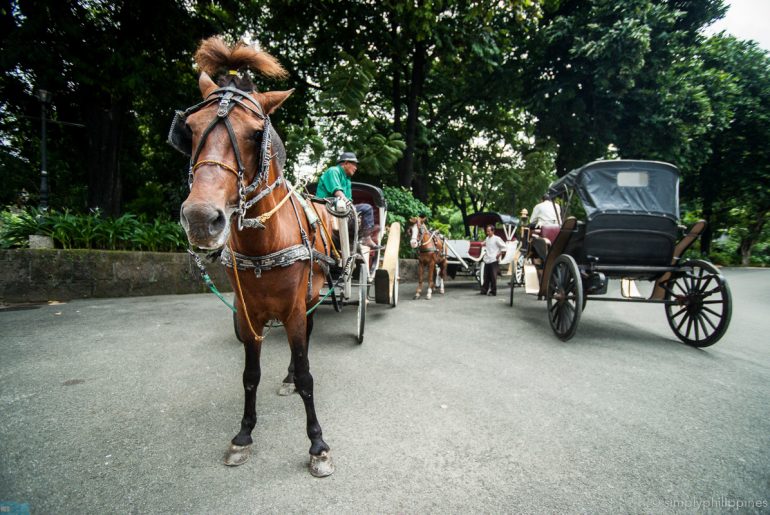

Top 10 Things To Do in Intramuros, Manila’s Medieval Fort City
For a long time the walled city of Intramuros, once the heart of Manila itself, was little more than an afterthought. Even when it was overlooked, Intramuros kept Spain’s long presence in the Philippines alive in its graying churches, bastions and courtyards. Today, new eyes are on Intramuros. Some of the Philippines’ best tours, like Carlos Celdran’s ‘Walk This Way’, tell the stories behind these streets .
This handpicked list covers the best attractions and activities in Intramuros. Follow along, and enjoy exploring!
SimplyPhilippines’ Top 10 Things To Do in Intramuros
1. fort santiago and the rizal shrine.
This 16th-century fort is a must-see for history enthusiasts and anyone interested in the Philippines’ colonial past. Built by the Spaniards after conquering the local chieftain, Rajah Sulayman, the fort guards the mouth of the Pasig River facing the open water of Manila Bay. The fort’s dungeons, barracks and secret gates tell a story of their own.
Also inside the compound, the Rizal Shrine showcases art and memorabilia by the Philippines’ national hero, Jose Rizal, who was held in Fort Santiago before his execution.
Mon: 1pm – 5pm, Tues to Sun: 8am – noon, 1pm – 5pm, tickets: P75
2. San Agustin Church and Museum
Take a peek inside San Agustin, a UNESCO World Heritage Site and the oldest stone church in the Philippines. The church is known for its intricate 3D-style painted ceiling, baroque architecture and ornamental decor. Next to the church, the San Augustin Museum houses religious relics and treasures from all over the islands.
San Agustin was the only building left standing in Intramuros after WWII.
Open every day from 9am – noon, and 1pm – 5pm, museum tickets: P100
3. Casa Manila Museum and Plaza San Luis
You may (or may not) feel right at home at the Casa Manila Museum, a fully reconstructed turn-of-the-century house with furniture and paraphernalia to match. Inside your have a fascinating picture of domestic life in a wealthy mestizo family during the colonial period.
The Plaza San Luis Complex is a showcase of five houses, all replicas of real Spanish-Filipino abodes from different provinces. Poke around the plaza and you’ll find charming courtyards, souvenir shops and the White Knight Hotel ( See hotels within Intramuros here .) Stop in at La Mona Loca to pick up a copy of Rizal’s first novel, Noli Me Tangere , or have a cold drink at Barbara’s Cafe.
Tues to Sun: 9am – noon, 1pm – 6pm, tickets: P75
4. Bahay Tsinoy
This little-known museum vividly depicts the role of Tsinoys (Chinese-Filipinos) in the nation’s development from the pre-Hispanic to the modern era. The exhibits are well-labelled and presented. If you have no reference of Philippine history, this museum will give you a quick rundown, with plenty of points to ponder.
Tues to Sun, 1pm – 5pm, P100
5. Walk This Way
Carlos Celdran’s buzzed-about afternoon tour is an entertaining, rapid-fire introduction to Philippine history and Intramuros. It’s a show you won’t want to miss, with much food for thought just beneath the theatrics. Bring a sense of humour (and the number of a taxi service to pick you up when the tour ends.)
Check tour schedule here
ALSO READ: The Manila Hotel, A Storied Address for History Lovers
6. Shop for Filipino crafts
Take a break from sightseeing and duck into one of Intramuros’ well-stocked souvenir stores (like Silahis, pictured above.) One of the capital’s best outlets for Philippine-made products and gifts, Manila Collectible Co. brings the flavours of the islands – coffee, palm sugar, dried mangoes, fruit wines – together under one roof. The store also stocks indigenous Filipino souvenirs, such as ling-ling-o amulets, artwork, fabrics and handmade tribal crafts.
TIP: If you have time, climb to the rooftop of Manila Collectible Co. for a different perspective on the walled city.
Open 10 am to 6 pm every day. Cabildo corner Beaterio Sts., behind the Manila Cathedral See the Manila Collectible Co. Facebook page here
7. Manila Cathedral
Intramuros’ crown jewel, the Manila Cathedral, is now on its 8th edition. Perhaps one of the country’s most unfortunate structures, the building has witnessed numerous calamities. Officially the Manila Metropolitan Cathedral-Basilica, the cathedral was built in 1581. Today it’s a popular choice for weddings and a unique place to attend mass.
See schedule of mass services here .
8. Calesa Tour
Sit back and see the walled city the same way the Spaniards and mestizos did centuries ago. The leisurely pace of the calesa feels like the right way to explore Intramuros’ cobblestone streets. Be sure to set the price before setting off, and specify the route or places you want to see. A jostling ride through the streets followed by a break for halo-halo is one of the best things to do in Intramuros.
A half-hour tour costs P300-350.
9. Explore the walls
About 22 feet tall and eight feet wide, many restored portions of the city’s walls are walkable. A short stroll atop the ramparts reveals tranquil gardens, fountains and plazas. The city’s outer moat was transformed by the Americans into a golf course. The portions that used to face the sea now sit atop reclaimed sections of land on Manila Bay.
> Find hotels in the Manila Bay area on Booking.com
10. Sky Deck View Bar
Can grabbing a sundowner be one of the best things to do in Intramuros? Absolutely. Intramuros’ highest accessible point is the 10th floor rooftop bar of the Bayleaf Hotel. Try visiting in the late afternoon just before sunset for breathtaking views of Old Manila and Manila Bay. The drinks and snacks are not bad either.
Open from 5pm – 1pm. Address: Bayleaf Hotel, Muralia cor Victoria Sts.
All images in this post are by photographer Fred Wissink . See more of his work on his Facebook page .
Related Articles
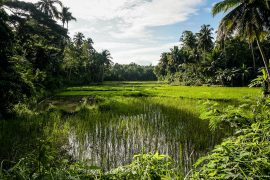
First Look: Blissful Bohol

7 Secluded Philippine Destinations for Nature Lovers
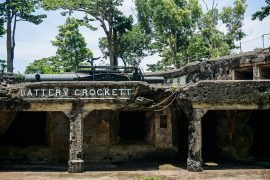
Corregidor Island: Manila’s Best Heritage Tour
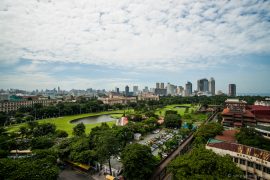
What You Should Know About Manila (before going)
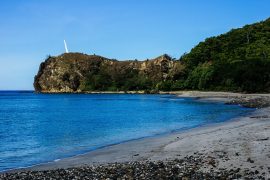
Dicasalarin Cove: Baler’s Secret Beach
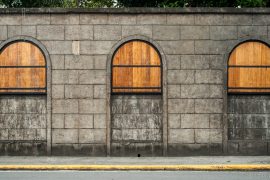
If Walls Could Talk : A Short History of Intramuros
Comments are closed.
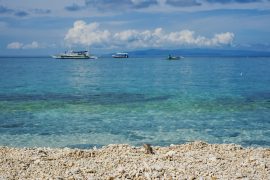
- Destinations
- See & Do

Top 19 Things to Do and Places to Visit in Manila City The Philippine Capital & Nearby

- 1. Travel Back in Time at Intramuros
Fort Santiago
Manila cathedral, san agustin church, plaza de roma, casa manila, baluarte de san diego, bahay tsinoy, 2. visit rizal park, 3. explore the national museum complex, national museum of fine arts, national museum of anthropology, national museum of natural history, national planetarium.
- 4. Have a Food Trip at Binondo
- Binondo Church
5. Shop Until You Drop in Manila Stores
Greenhills shopping center, tiendesitas.
- SM Mall of Asia
SM Megamall
6. pray at quiapo church.
- 7. Hop-On Board the Unique Modes of Transport
8. Enjoy a Visit to The Ocean Park
9. spend a day at roxas boulevard, cultural center of the philippines complex, bsp money museum.
- 10. Marvel at the Malacañang Palace
11. Explore the Modern Cities of Manila
Bonifacio global city, taft avenue, 12. get artsy at cubao expo, 13. visit paco park and cemetery.
- 14. Enjoy the Nightlife
Bonifacio Global City (BGC)
Tomas morato, 15. have a gastronomic food trip, maginhawa street.
- 16. Join the Weekend Markets
Salcedo Market
Legazpi market, mercato centrale, 17. visit fun modern museums, the dessert museum, lakbay museo (permanently closed starting july 2022), art in island, upside down, mind museum, 18. explore university campuses, the university of the philippines-diliman, the university of santo tomas, 19. join a day trip from manila.
- Mt. Pinatubo
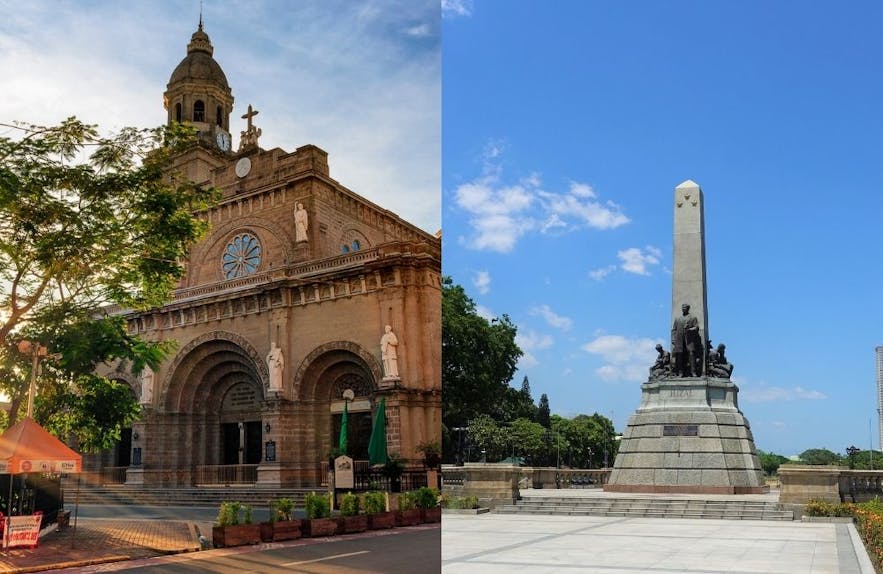
Discover Manila's lovely and vibrant city. Find out the best places to visit, the local delicacies you should try, and the different modes of transportation when visiting the metro.
The Philippines' capital city, Manila , is often the jump-off point to the country's incredible beaches, stunning islands, and unique natural wonders. However, there are many tourist spots to visit in Manila itself! It's a beautiful city full of surprises and amazing things to try.
See our popular Manila Tours & Activities
Manila intramuros historical express 90-minute tour in eco-friendly bamboo bike + optional upgrades, manila binondo shared walking food tour with guide, manila intramuros shared half-day walking tour with guide.
- Check out our article on Instagrammable cafes in Manila
For first-time visitors, Manila may seem overwhelming to explore. But it's quite manageable once you have a well-planned travel itinerary. You can also book a car rental in Manila if you want to explore at your own pace. Just make sure you have the requirements to rent a car in the Philippines .
- Find the best Manila hotels that you can book
- Book your flight ticket to Manila
You're bound to fall in love with Manila thanks to its interesting tourist spots, foodie destinations, and fun activities. Read on to find out the best things to do and places to see in the bustling capital of the Philippines and its neighboring cities:
1. Travel Back in Time at Intramuros
Intramuros , known as the "Walled City," is the oldest district and historic core of Manila. Intramuros tours are a must-try for history buffs because there are so many things to do in Intramuros .
This iconic Manila landmark is actually a walled area within the modern city. It was the seat of government and political power when the Philippines was still under Spanish rule.
Intramuros is Manila's only district where travelers can see complete architectural remnants of the Spanish Era. A day trip to Intramuros is enough for you to go sightseeing in this well-preserved historical attraction.
- Check out this San Agustin Church to Manila Cathedral tour
Wander along paved roads and visit historical monuments and sculptures. You can even join a bambike tour (you will explore via a bamboo bike), try riding a kalesa, or enjoy a horse-drawn carriage experience. Here are some of the must-visit attractions in Intramuros:

It's one of two significant squares in Intramuros. The plaza is regarded as the area's center of trade during the colonial past.
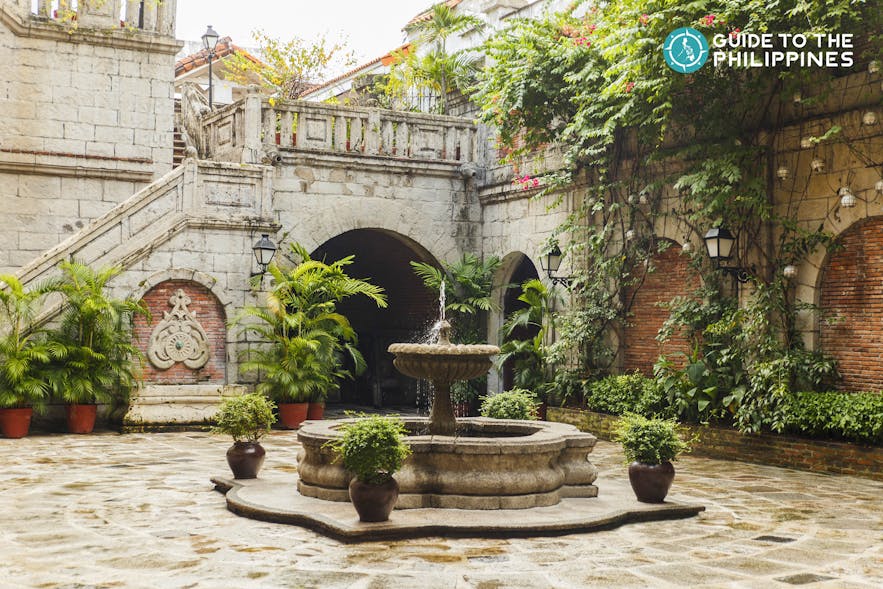
This building houses the Kaisa-Angelo King Heritage Center, a museum that documents the history, lives, and contributions of Chinese ethnicity in Philippine life and history.
See our popular Intramuros Tours
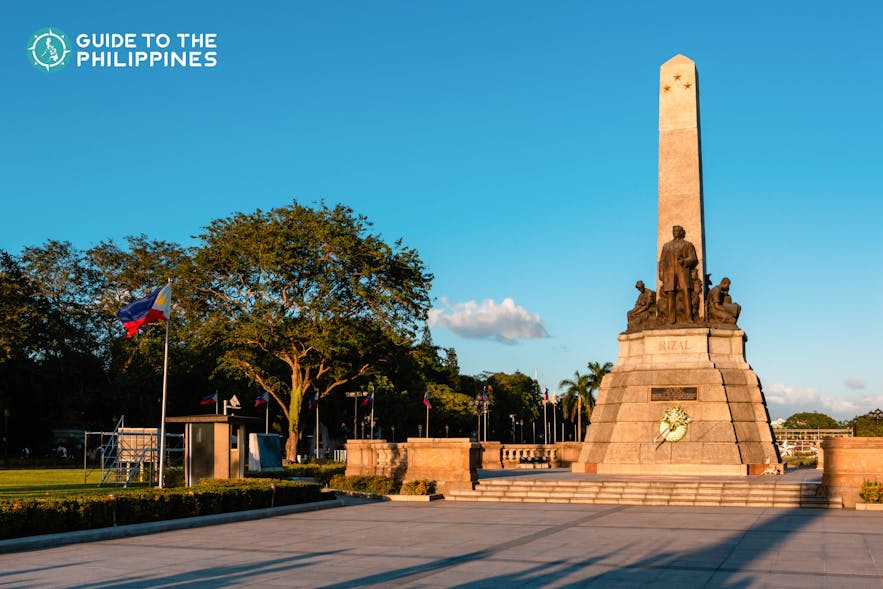
He was a doctor and novelist who was shot by firing squad at this site on December 30, 1896, on charges of fostering local rebellion against the Spanish government.
Rizal Park features monuments, squares and gardens, large stadiums, observatories, an open-air concert hall, sound and light theaters, shops, food kiosks, playgrounds, and many fountains.
The park is split into three areas, starting with the 16-hectare Agrifina Circle adjacent to Taft Avenue. It's where the Department of Tourism and the National Museum of Anthropology are situated.
Then there's the northeastern segment; followed by the 22-hectare park extending down to Roxas Boulevard. Lastly, the central section finishing at the southwestern part contains Burnham Green. Join a Rizal Park tour with Intramuros to get a full experience of this destination.
The National Museum of the Philippines has several sections included in National Museum trips: Art, Anthropology, Natural History, and the Planetarium.
All are within the same building complex and are home to permanent collections representing the various facets of art, culture, and history of the country. Joining a National Museum tour will take you around the best museums in the area.
The collection here contains both classical and contemporary Filipino paintings and sculptures. The famous paintings by the Philippine revolutionary artist Juan Luna, including The Spoliarium, are a must-see.
It features collections of artifacts of Anthropology and Archaeology. You can also have a look at the old Philippine script called "Baybayin," as well as a collection of cultural memories from native people throughout the nation.
This museum presents the rich biodiversity of the country, including Lolong's skeleton, which used to be the world's largest caught crocodile and placed in captivity. Another highlight is The Tree of Life, a glass elevator and a canopy-inspired roof.
It contains astronomic displays of celestial bodies and their real-life projections. They also offer displays, presentations, and demonstrations for travelers who would like to have a unique planetarium experience.
See our popular Museum Tours
Cebu city & lapu-lapu city top heritage attractions tour with transfers, aklan calawag mountain resort & tibiao museum tour with lunch & transfers, baguio museum and arts tour with lunch & transfers, 4. have a food trip at binondo .
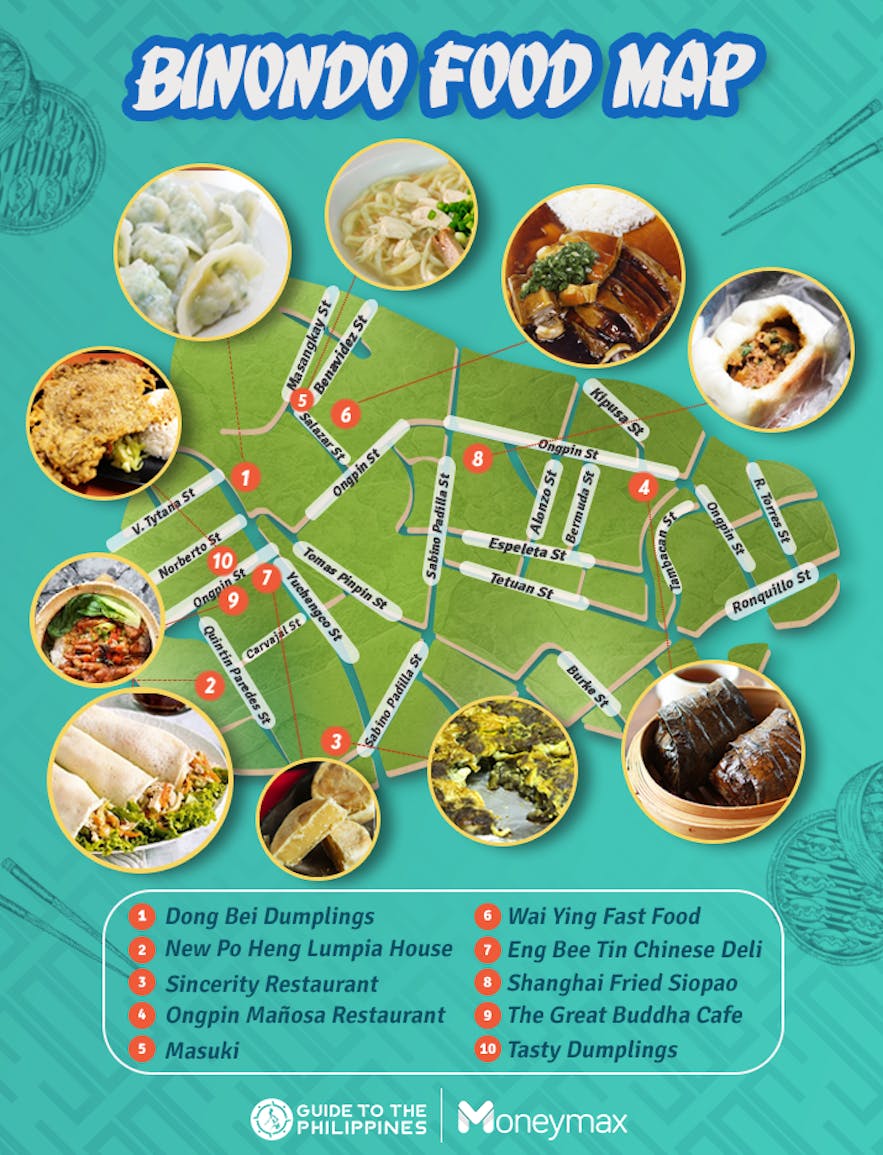
Binondo is a lively and historic Manila site. It was founded in 1594 and is considered to be the world's first Chinatown. Like the other Chinatowns, tours to Binondo restaurants are fun as the town is made up of tight and vibrant alleys with must-try foodie spots.
It is packed with hole-in-the-wall joints, traditional bakeries, and budget-friendly streetside shops. One of the best ways to see its beauty is by trying out a guided tour in Binondo .
See our popular Binondo Tours
Binondo church .
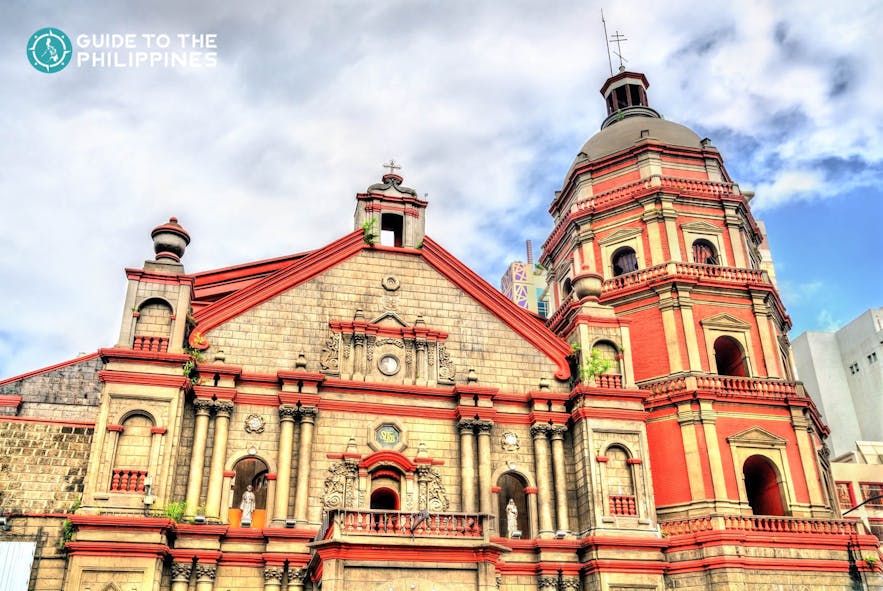
Mass generally takes place in English, Tagalog, and Chinese in this church. The church is also called the San Lorenzo Ruiz Basilica Minor.
Escolta
This used to house the stores of Chinese merchants during the galleon trade in Manila.
Food Trip
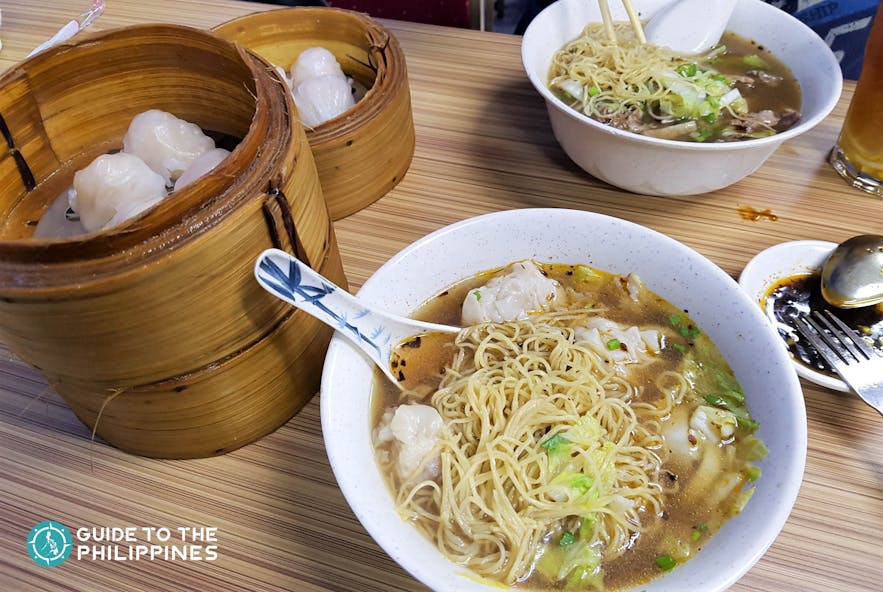
Shopping is one of the most enjoyable activities in Manila because of the multitude of malls here. Here are some of the best places to shop in the metro:
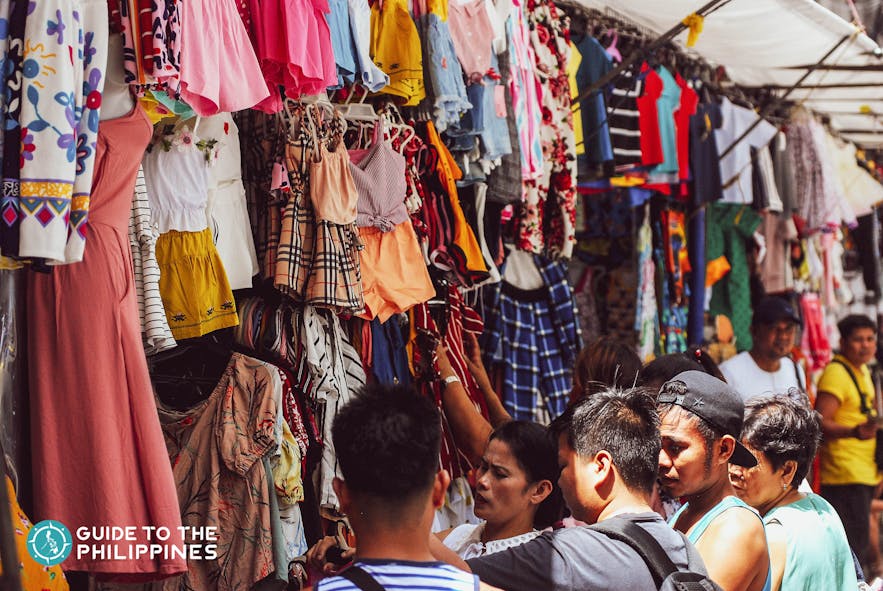
There are a lot of shops in Quiapo. For gadgets, you can go to Raon and Hidalgo Street. For arts and handicrafts, you can go to Palanca Street and Plaza Miranda. Go to Quinta Market and Carriedo Street for other necessities.
They have a big market. You can look through so many shops and stores. The stores have a variety of products, from very affordable to more costly.
It's a charming shopping mall and has a mix of thrift stalls and significant shops. There are also excellent restaurants around.
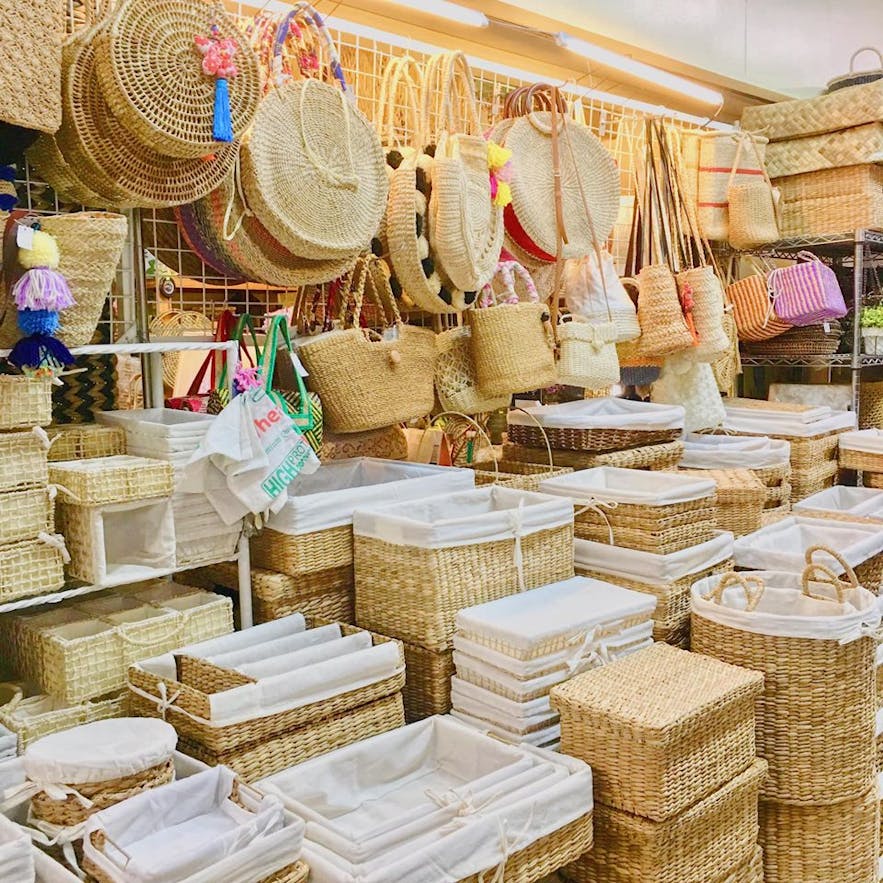
This place in Pasig City has it all, from indigenous cuisine and fashion to furniture, antiquities, arts and crafts. Tiendesitas has shops from over 450 merchants, most of whom offer specialty goods, mainly from Luzon, Visayas, and Mindanao.
SM Mall of Asia
SM Mall of Asia, or MOA, is particularly famous for both domestic and international visitors. It is the biggest shopping center in the Philippines and has several establishments. It's often part of a bargain shopping experience in Manila.
- Book a Gootopia 1-hour pass
- Make your own desserts with a Bakebe day pass
It's the third-largest shopping mall in the Philippines. Aside from their various stores in the different buildings, they have their own Mega Fashion Hall.
The establishment combines high-end boutiques, restaurants, shopping amenities, leisure areas, and entertainment halls.
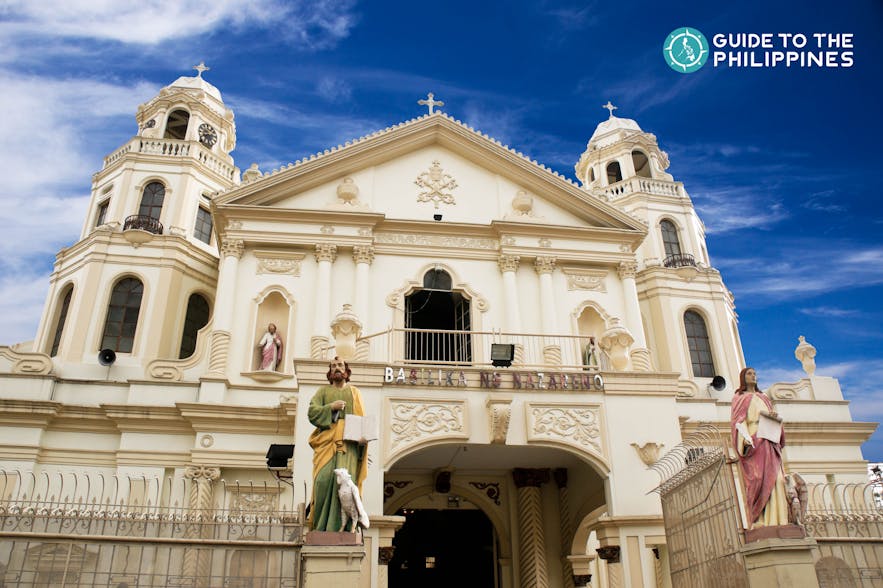
The façade of Quiapo Church, built in the baroque style, stands out from both sides with its rolling towers. A third of its column twists close to the foundation, while the bottom part has a soft surface.
The top of the four-story bell towers is adorned with balustrades and enormous scrolls. It’s a popular church included in most pilgrimage tours in the country.
In the early 1980s, a four-foil window in the center of the front of the church was screened, and a picture of the pope's crossed keys and tiara was substituted. Only the facade and the transept dome maintained the classic architecture with its latest refurbishment.
7. Hop-On Board the Unique Modes of Transport
There are distinctive transport modes that you can use to discover Manila . Jeepneys and tricycles are two of the most common transportation vehicles used by locals.

Inaugurated in March 2008, the park is famous for the Oceanarium, which has around 14,000 creatures belonging to around 277 different species native to the Philippines and Southeast Asia. A Manila Ocean Park ticket will allow you to see the Oceanarium and other park facilities.
The park is also highly informative and instructional, especially for sightseeing activities.
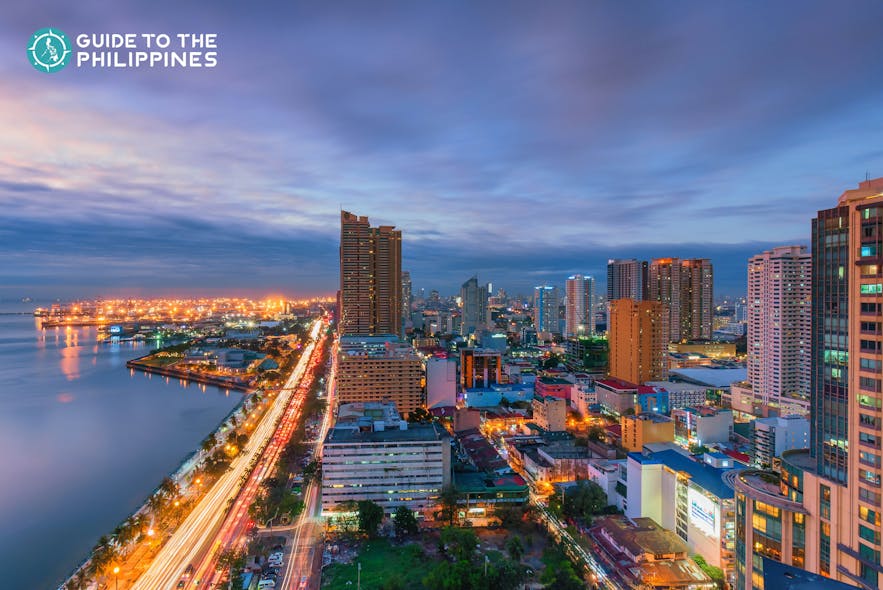
It has become famous for its country club, restaurants, eateries, commercial properties, parks, and gardens. It's also the location of the CCP Complex, Baywalk, Star City, and the BSP Money Museum.
The CCP Complex is an 88-hectare sport, cultural, and art playground. The National Theater, Folk Arts Theater, CCP Library and Archive, Philippine International Convention Center, and Manila Film Center can be found in the complex.
It's a promenade facing Manila Bay. The Baywalk is a two-kilometer path that starts at the US Embassy, and is close to Rizal Park and the Cultural Center of the Philippines, just past Manila Yacht Club.
The BSP Money Museum, located in central Bangko in the Philippines, shows the development of the Filipino economy and its past.
The displays are chronologically arranged from the Pre-Hispanic Period, Spanish, and Revolutionary Periods to the American, Japanese, and present-day Republic.
The museum is full of elegant barter coats, gold rocks, gold barter chains, old paper money, envelope bills, and silver banknotes.
See our popular Manila Vacation Packages
Family-friendly overnight lime resort manila staycation with buffet breakfast & dinner, budget-friendly 2-day hop inn ortigas package with manila airport transfers, fancy 3-day crimson hotel alabang package with daily breakfast & one-time dinner, 10. marvel at the malacañang palace.
Malacañang Palace is the official building and principal department of the President of the Philippines. It's connected to Mendiola Street in San Miguel, Manila.
Malacañang includes many mansions and departments, primarily built in a neoclassical style. Among the many heritage trips in the country, visiting Malacañang Palace is one of the most recommended.
Originally built as a private household home, Malacañang has been transformed into a magnificent Spanish colonial home. It consists primarily of wooden buildings complete with courtyards and azoteas.
Visiting Malacañang Palace is a great opportunity to learn more about its contribution to the country’s history.
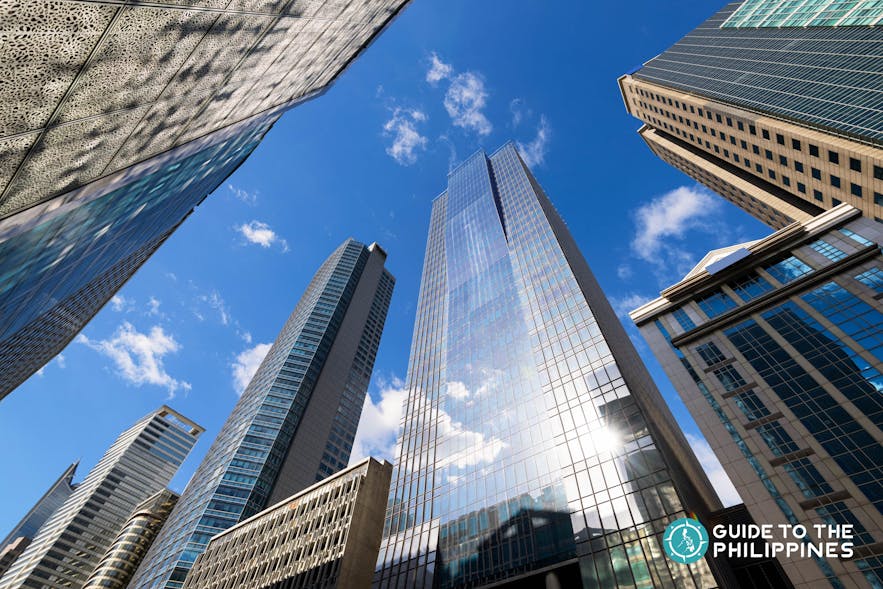
- Poblacion Makati rooftop hopping
- Poblacion Makati street party
- BGC game night
- Binondo Manila basic photography lessons
- Korean culture experience in Quezon City
There's much to learn from the remnants of the past and how it's incorporated into the present, which is why it's also great to join a Manila tour with modern and historical attractions . After all, the Philippines is a progressive country. Here are some of the modern cities of Manila you can visit during your trip:
In addition to being one of the significant financial, academic, and business institutions in all of Asia, it is the economic core of the Philippines.
- Book a Sentro Spa massage in Manila
More known as BGC, it's a leisure district in Metro Manila. Besides the tall buildings, you'll also see high-end retail stores here. You can dine in world-class hotels and restaurants and be amused by several activities.
It's primarily considered to be a component of the University Belt, with several of Manila's leading colleges and universities nearby.
This, plus its closeness to primary forms of travel, provides Taft Avenue, the youthful atmosphere and accessibility it is known for.
Cubao Expo has housed aesthetic institutions, art galleries, thrift stores, and shoe shops for several years. One may lose oneself among vintage comics, knick-knacks, and unique finds in this place.
Cubao Expo also serves as a lifestyle center. Here you will discover a handful of options for lunch or dinner. The place also hosts events such as poetry reading, book sales, concerts, and different kinds of conventions.
Paco Park is a leisure and nature park that was constructed by Dominicans in the Spanish colonial era. It is on the main street of General Luna in Paco, Manila and the eastern part of Padre Faura Street.
During the reign of President Diosdado Macapagal, the reserve was transformed into a national park in 1966. Since then, the park has been progressively rebuilt and has been a government beach and community promenade.
14. Enjoy the Nightlife
Filipinos love to party! With their passion for singing and dancing coupled with excellent humor, you're bound to encounter some exciting and enjoyable events when visiting Manila's hot nightspots.
- Crimson Hotel Manila package
- Ascott Bonifacio Global City Manila package
- Ascott Makati package
- Somerset Millennium Makati package
- Somerset Central Salcedo Makati package
- Somerset Alabang Manila package
- Citadines Salcedo Makati package
- Citadines Bay City Manila package
- The Belamy House Makati Manila hotel package
- City Garden Hotel Makati package
There are various places throughout Manila, Makati , and Quezon City , where you can encounter all types of bars and restaurants to eat, drink, and chill at. Naturally, it's based on whether you want something lowkey or a full-on club scene. Here are some locations you should visit:
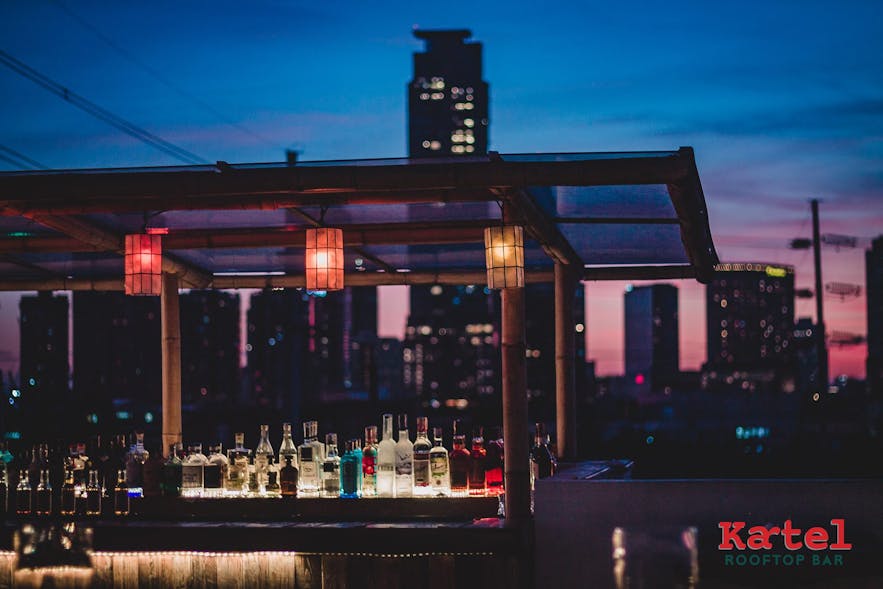
This is Makati's famous nightlife district, with a wide variety of beautiful hotels and bars to let individuals unwind from stress. Visiting this area is one of the fun activities in Makati .
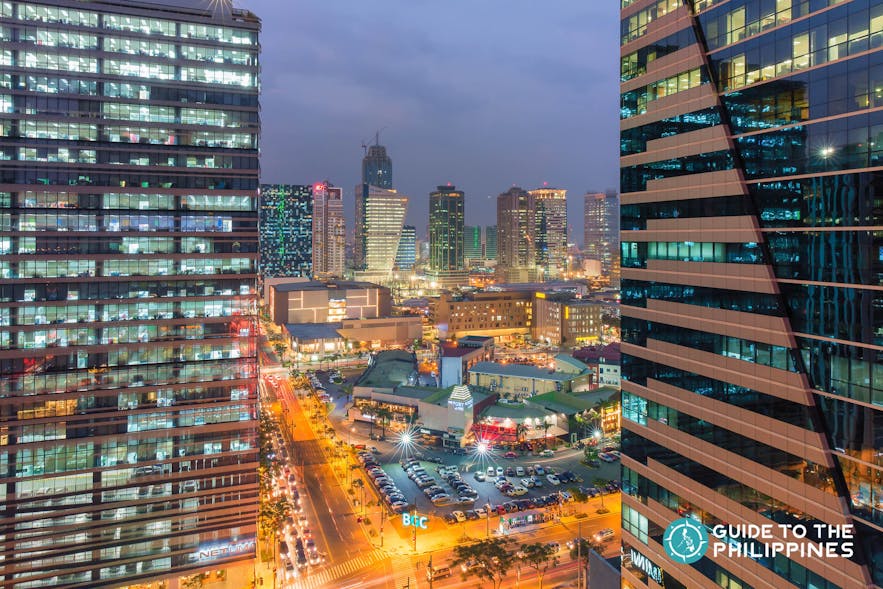
This is a famous place for amusement. There are many fine establishments and cafes along this street, including discotheques, karaoke joints, and comedy clubs.
One of the best things to do in Manila is to have a gastronomic adventure, and what better way try local cuisine than going on food trips ! Try street food such as the infamous balut.
- Read our article on the best buffets in Manila
There are also fish balls, kwek-kwek, kikiam, taho, and sorbetes that are generally marketed in tiny shops.
Try halo-halo, a famous Filipino dessert of shaved ice and evaporated milk, with several other components, for a delicious snack. Aside from Binondo, you can have a local food trip here:
Several local restaurants started on this 2.2-kilometer road as hole-in-the-wall food places before becoming increasingly popular due to locals loving the vibrant and trendy atmosphere.
This is the name of Makati's famous food trucks. They're affordable and found within area points in Makati. Local favorites are Sisig from Rada Street, Mang Lirio's from Palanca Street, and Bulalo and Pares from Esteban Street.
This is an area renowned for its charming and eclectic vibe. Kapitolyo has two primary roads. East Drive features cheaper, more inexpensive establishments, while West Drive offers more intimate date places and unique events.
16. Join the Weekend Markets
If you get excited about shopping for local products, an excellent activity is to join a city excursion at a weekend market in Manila !
Sample a combination of delicious meals and Philippine cuisine, observe local entrepreneurs selling products, and discover unique things visiting a weekend market, like those listed below:
This weekend market starts at 6 AM on Saturdays. There are delicacies from all over the world so that you can enjoy distinct global flavors as well as local culinary delights.
This market is available only at 7 AM on Sundays. What's unique about this market is its dry goods stalls. You can purchase many artsy items, from pictures to hand-crafted products.

This food night market is available during scheduled evenings in Makati, Pasig, Intramuros, and Rizal Park. You'll discover an enormous range of meals and snacks you can consume. Wash it down with your choice of drink.
Modern museums should be on your list if you're the type of traveler who wants to experience something new. It's a way for curators to present artwork in a different form. Here are some museum trips you can try in Manila:

This is a great spot to see desserts, eat them, and take unique pictures as well. Buying an admission ticket to the Dessert Museum is worth it as it's different from other museums.
- Book a 2-hour Dessert Museum Ticket to 8 Themed Rooms & Complimentary Dessert
- See our other Philippine museum day passes

Art in Island, one of the world's largest animated 3D art museums, enables visitors to take beautiful photos with wall-to-floor sculptures. The employees can take your image as you give your best poses in each of the 12 areas.
If you like to take pictures in a unique manner, this museum will definitely surprise you. Discover creativity within yourself when you transform your pictures upside down.

The Philippines doesn't fall short of beautiful universities. These locations are not only home to academic institutions but are also notable Manila destinations.
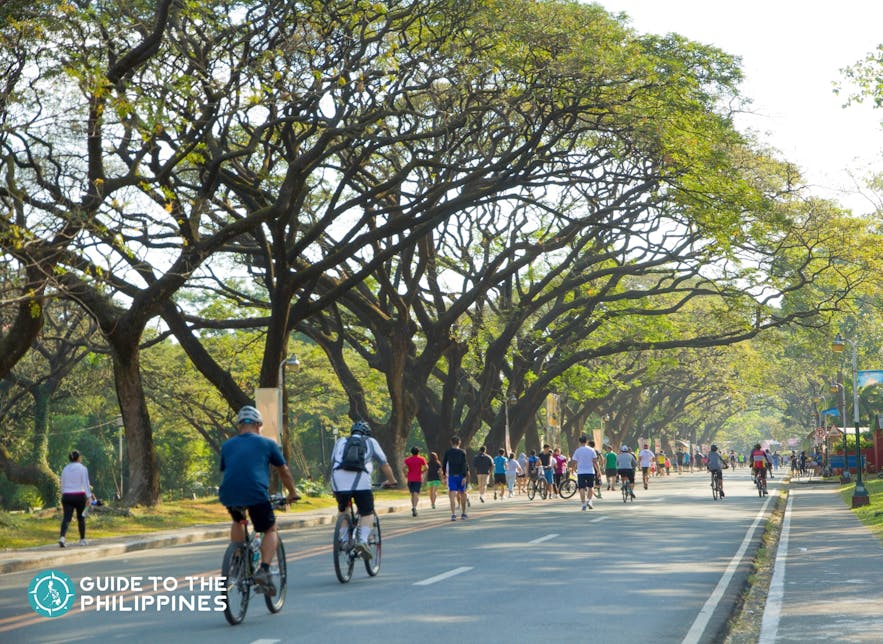
The University Academic Oval is a circular street lined with buildings with different architecture and shaded by a canopy of acacia trees. The University of the Philippines also has its own UP Cine Adarna next to the UP Theater and the UP Carillon tower.
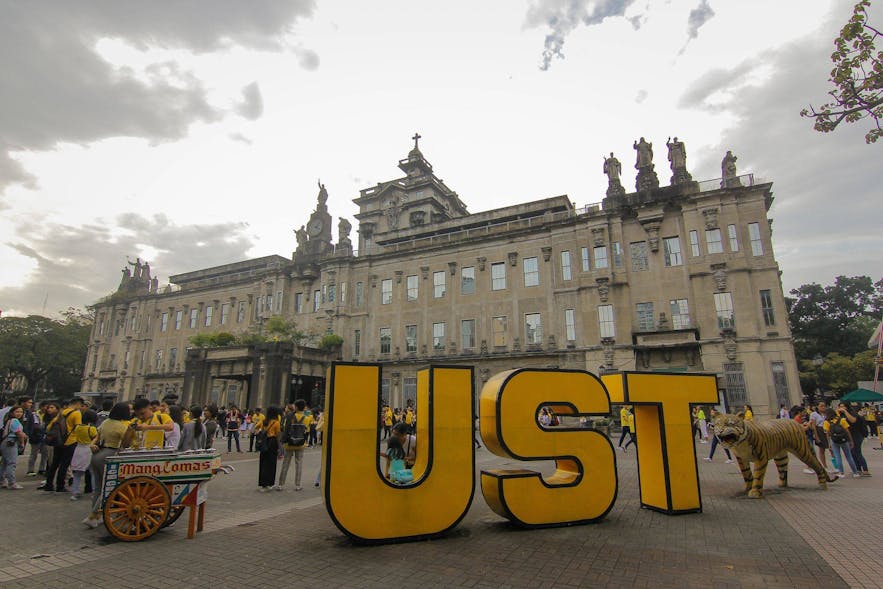
Known as one of Asia's oldest universities, UST has a wealthy heritage visible on its campus. There is even a magnificent museum full of memorabilia and pictures here.
After enjoying tours in Manila , you can venture out to nearby provinces. Whether you're a traveler wanting to discover more places beyond the metro or a local who wants to take some time off from the city, these are some great options:
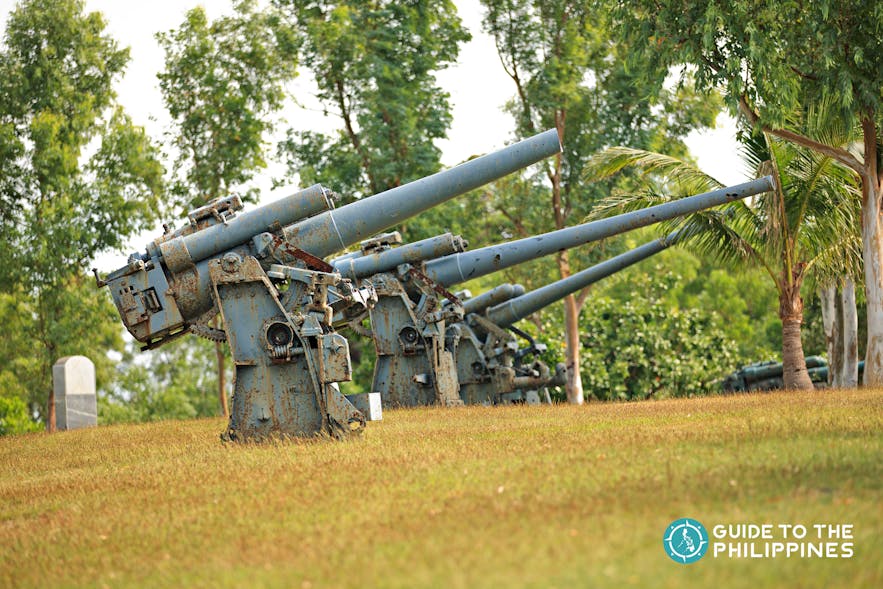
It's best to join a Corregidor experience to fully immerse yourself in this breathtaking piece of history.
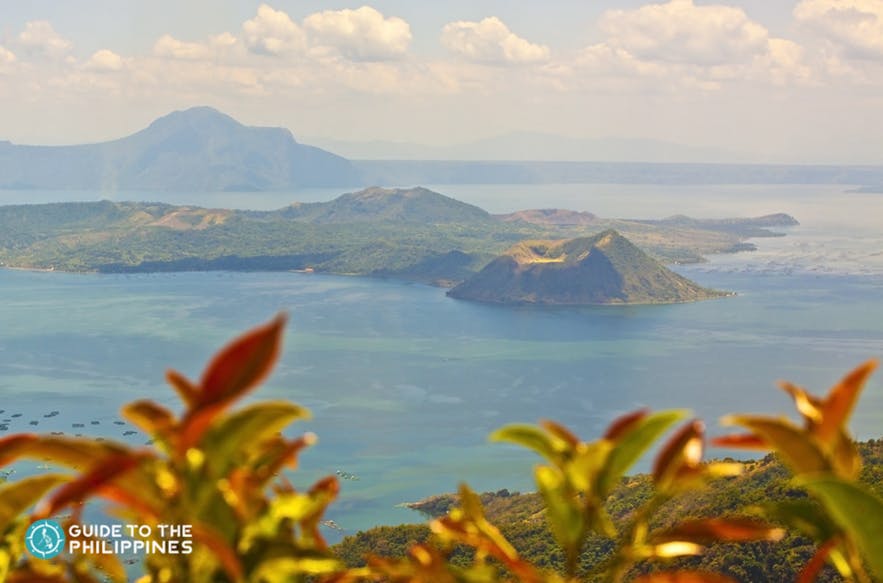
See our popular Tagaytay Tours and Activities
Tagaytay palace in the sky taal view & farms shared day tour with lunch & transfers from manila, tagaytay city sightseeing shared day tour with transfers from manila | picnic grove, twin lakes, coffee farm tour at amadeo cavite near manila & tagaytay with live brewing & tasting sampler.
This is the Philippines' third-largest lake. Taal Volcano, one of the smallest active volcanoes in the globe, is inside it. Make sure to enjoy and take photos of this fantastic destination.
Mt. Pinatubo

See our popular Mount Pinatubo Tours
Exciting 2-week history & adventure tour to ilocos, mt. pinatubo, baguio & sagada package, amazing 2-week heritage & scenic tour to llocos, mt. pinatubo, baguio, sagada & bohol package, exciting 3-day mt. pinatubo trekking & puning hot spring package from clark pampanga with hotel.
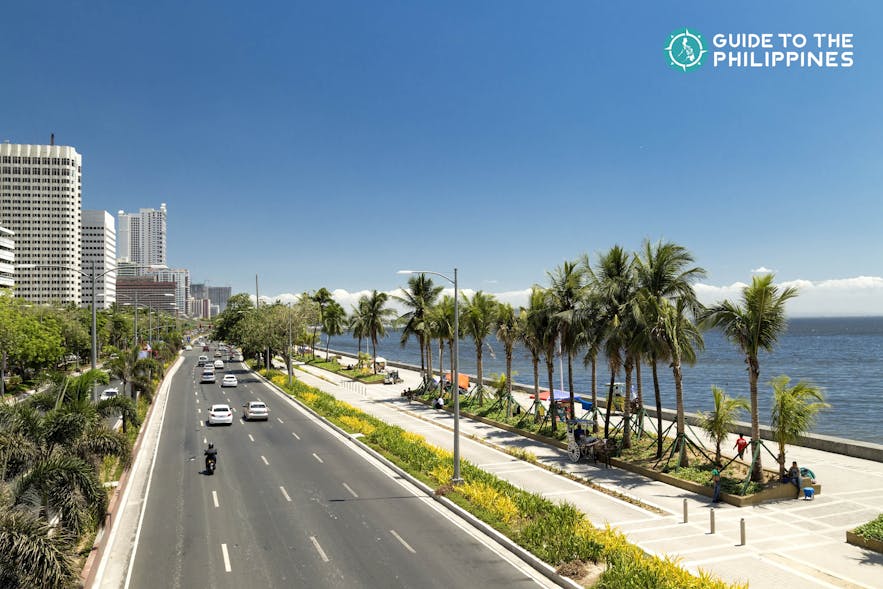
- Cebu to Manila flights
- Davao to Manila flights
- Tacloban to Manila flights
- Iloilo to Manila flights
- Bacolod to Manila flights
- Legazpi to Manila flights
- Boracay to Manila flights
- Bohol to Manila flights
It offers so many great things for both locals and internationals alike, such as sightseeing tours, food and culinary trips, museum-hopping excursions, biking trips, historical and heritage immersions, adventure and nature park visits, and hiking excursions.
Start planning your trip to Manila now! Explore Manila tours and activities that you can add to your itinerary for a complete and hassle-free travel experience.
Popular articles

Best Palawan Guide: Top Tours, Where to Stay, How to Get Around

20 Most Beautiful Sandbars in the Philippines: White Sand, Longest, Vanishing
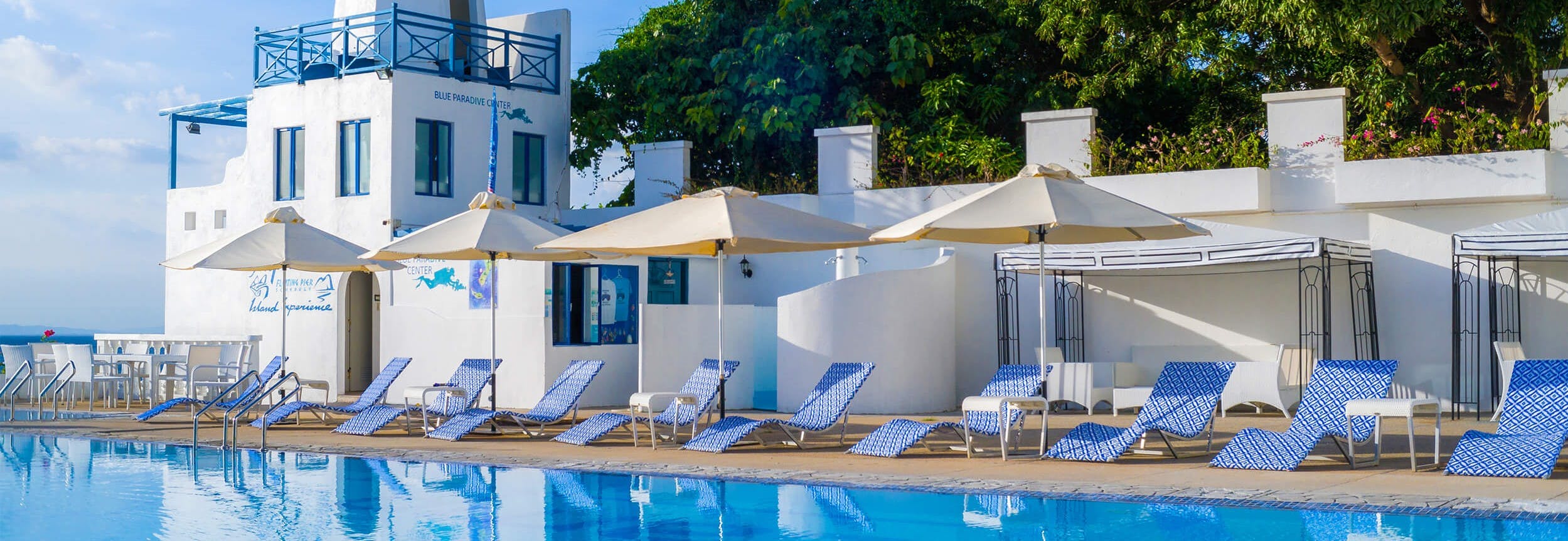
11 Best Santorini-Like Resorts in the Philippines: Near Manila, Cebu, Palawan, Vigan
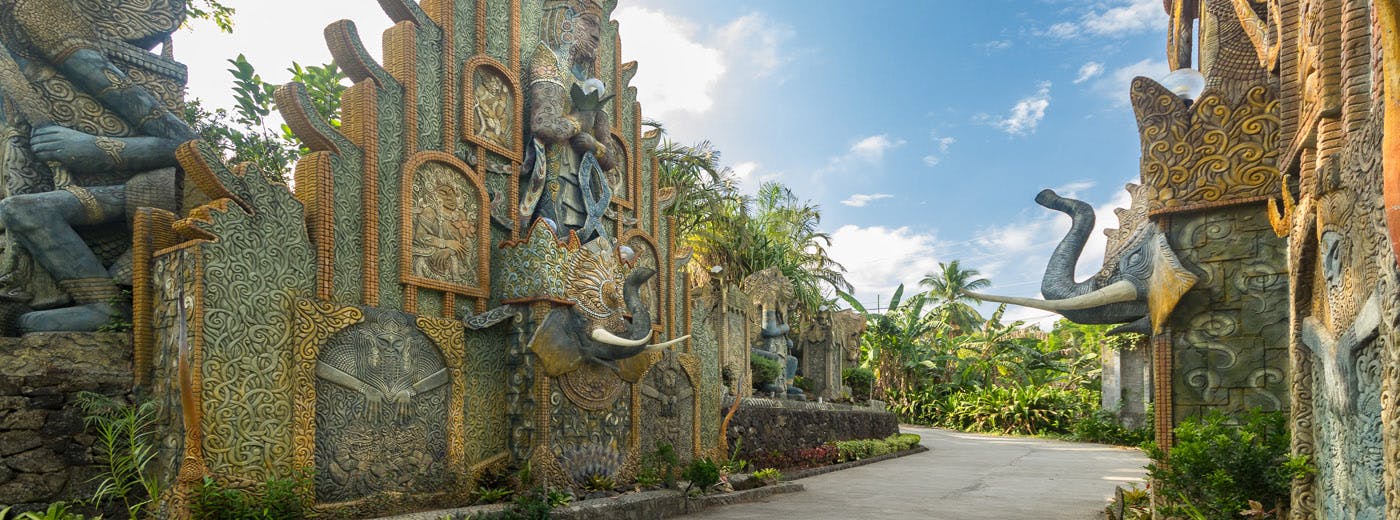
15 Best Tropical Bali-Like Resorts in the Philippines: Near Manila, Siargao, Cebu, Bohol
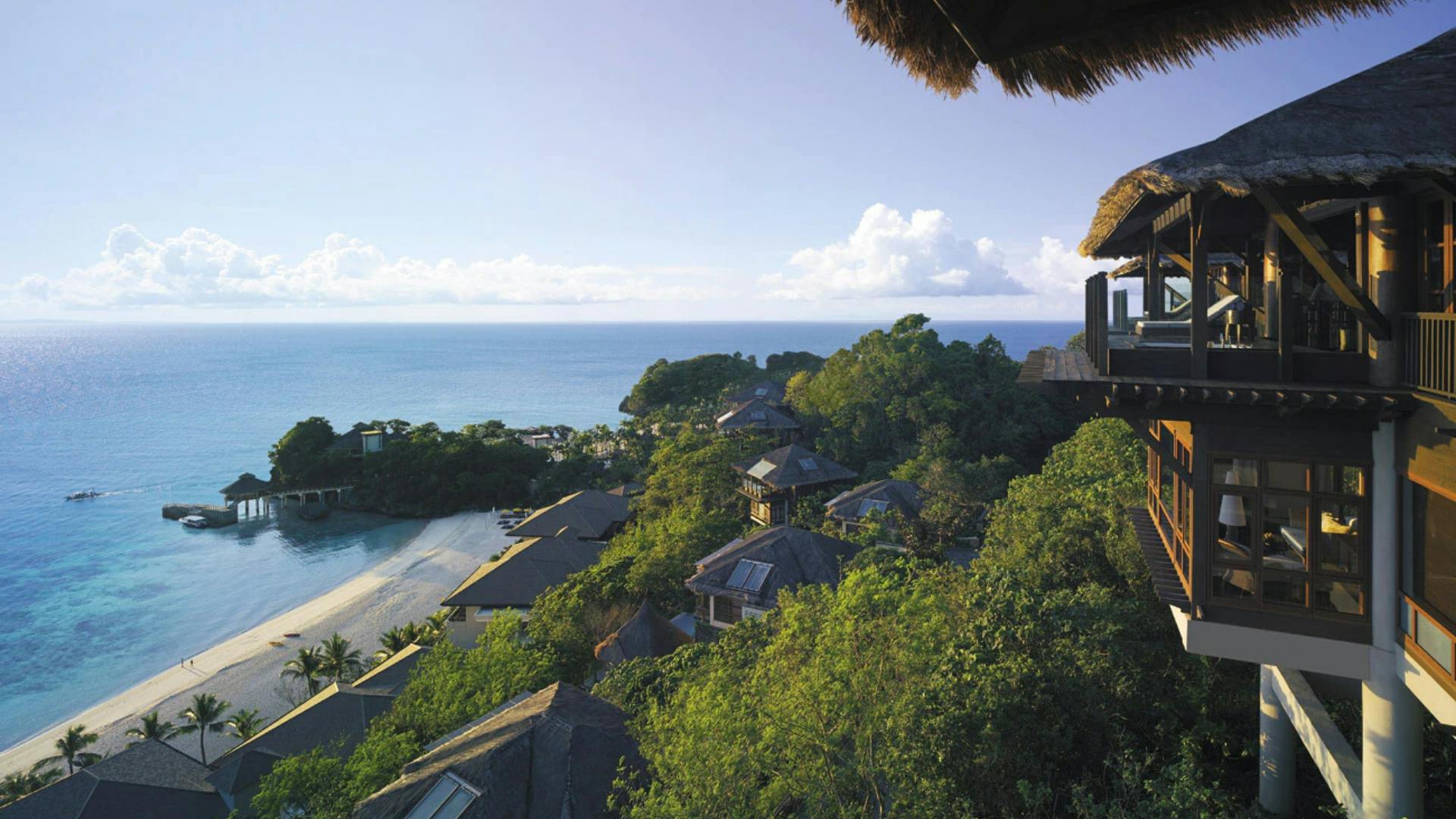
10 Best Treehouse Resorts in the Philippines for a Scenic Getaway at Mountains, Beaches & Rivers
Other interesting articles.

15 Must-Visit Visayas Tourist Spots: Boracay White Beach, Cebu Diving, Bohol Countryside

Top 6 Philippine Vacation Packages to Book: Best Destinations & Must-Try Tours

Top 18 Must-Visit Tourist Spots in Mindanao: Beaches, Islands, Waterfalls

Download the Philippines’ biggest travel marketplace to your phone to manage your entire trip in one place
Scan this QR code with your phone camera and press the link that appears to add the Philippines’ biggest travel marketplace into your pocket. Enter your phone number or email address to receive an SMS or email with the download link.
Top things to do in the Philippines
Discover all the adventures you can experience in the Philippines
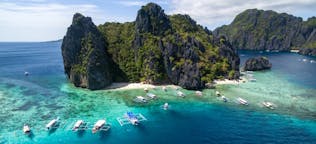
Philippines Tour Packages

Boracay Island

Bohol Island

Cebu Island
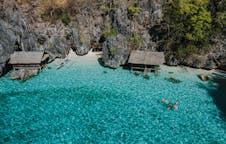
Coron Palawan

El Nido Palawan

Siargao Island
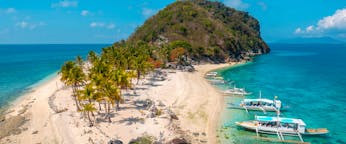
Iloilo City and Nearby

Filipinas Kong Mahal
- Filipino Culture and Heritage
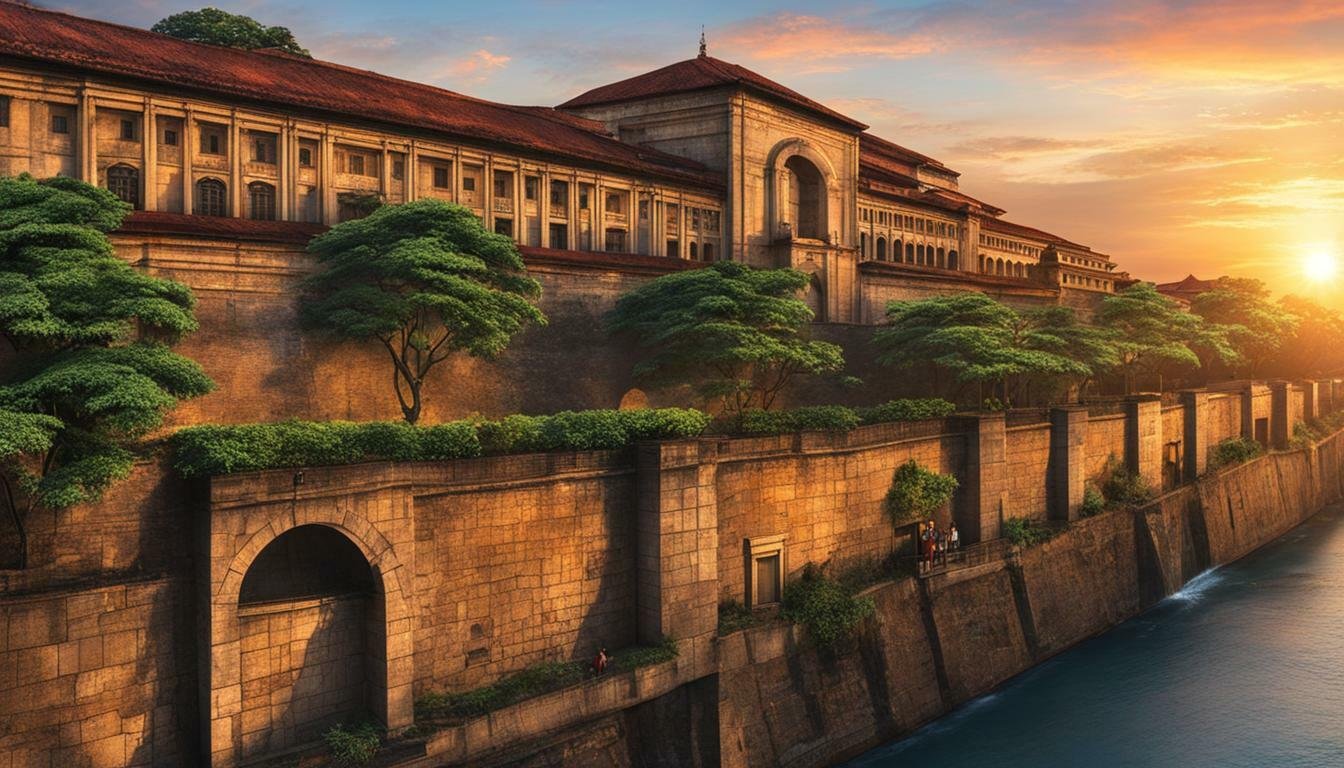
Explore Intramuros: Uncovering Manila’s Historical Gem
by Michael Camus · 25 September 2023
Welcome to Intramuros , Manila’s ancient walled city that offers a glimpse into the fascinating tapestry of Philippine history. This historical gem , located in the heart of Manila , is a testament to the rich heritage and cultural significance of the Philippines . Intramuros has been a witness to the country’s colonial past, with its centuries-old cathedrals, fortified walls, and captivating museums attracting visitors from around the world.

Key Takeaways:
- Intramuros is the most visited tourist spot in the Philippines and is known for its centuries-old cathedrals, ancient fortresses, and fascinating museums .
- The walled city is home to iconic and historic sites , such as the Manila Cathedral, San Agustin Church, Fort Santiago, and Baluarte de San Diego fort.
- Visitors can explore Intramuros on foot or experience a traditional horse-drawn carriage ride known as calesa .
- The area is also home to several museums , including the Rizal Shrine , Bahay Tsinoy , and the Museo de Intramuros .
- It is recommended to visit Intramuros during the dry season from December to May and stay updated with the weather conditions.
Embark on a journey through time and immerse yourself in the rich history and breathtaking beauty of Intramuros Philippines . With its unique attractions and experiences, Intramuros offers a memorable adventure that captures the essence of Manila’s historical charm.
The Most Visited Tourist Spot in the Philippines
Intramuros is a magnet for tourists, drawing crowds with its wealth of historic cathedrals, fortresses, and museums. This UNESCO World Heritage Site holds a special place in the hearts of locals and continues to capture the imagination of visitors from around the world.
A visit to Intramuros is like stepping back in time, immersing yourself in the rich history of the Philippines. The centuries-old cathedrals, such as the Manila Cathedral and San Agustin Church, stand as testaments to the country’s deeply rooted religious heritage. These architectural marvels not only inspire awe but also provide a glimpse into the country’s colonial past.
Fort Santiago, with its imposing walls and historic significance, is another highlight of Intramuros. Once a defensive fortress and a prison during the Spanish era, it now serves as a tranquil park where visitors can stroll along its ramparts and gardens, offering panoramic views of the cityscape. The Baluarte de San Diego fort, with its beautifully restored gardens and bastions, is another must-see attraction that allows visitors to get a sense of the fortified city’s defensive structure.

“Intramuros is like a living history book, revealing stories of a bygone era through its cobblestone streets, colonial-era buildings, and cultural landmarks.”
The museums within Intramuros offer an opportunity to delve deeper into the city’s past. The Rizal Shrine pays homage to the national hero, Jose Rizal, showcasing his life and works. Bahay Tsinoy provides a fascinating insight into the Filipino-Chinese heritage, while the Museo de Intramuros houses a remarkable collection of religious art and artifacts from the Spanish colonial period.
With its timeless charm and significant historical sites, it’s no wonder that Intramuros is the most visited tourist spot in the Philippines. Whether you’re a history enthusiast, a culture lover, or simply seeking to immerse yourself in the beauty of the past, Intramuros offers a truly enchanting experience.
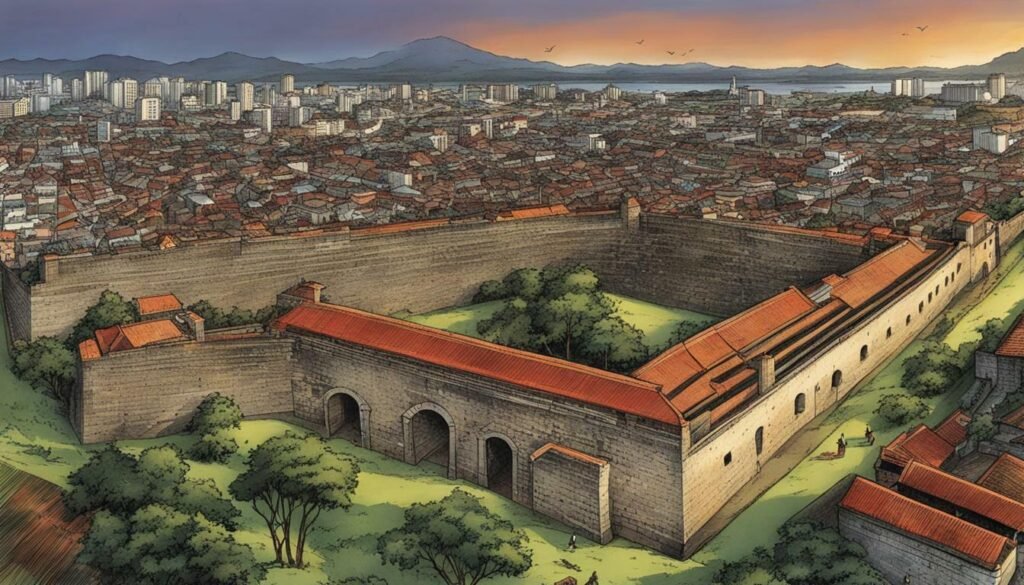
Cathedrals, Fortresses, and Museums: A Glimpse Into the Philippines’ Past
A sanctuary of iconic and historic sites.
Step back in time as you explore Intramuros’ iconic sites , from the magnificent Manila Cathedral to the ancient Spanish fortress of Fort Santiago. This walled city is a treasure trove of history, offering visitors a glimpse into Manila’s rich past.
Nestled within Intramuros are several notable landmarks that showcase the city’s colonial roots. The Manila Cathedral, also known as the Minor Basilica and Metropolitan Cathedral of the Immaculate Conception, is a stunning example of Baroque architecture. Its intricate design and grandeur make it a must-visit attraction for history and architecture enthusiasts.

“Intramuros is a living testament to Manila’s colonial heritage, with its imposing structures and rich historical significance.”
Another iconic site within Intramuros is the San Agustin Church, the oldest stone church in the Philippines. This UNESCO World Heritage Site boasts ornate interiors and an impressive collection of religious artifacts. As you wander through its halls, you can’t help but marvel at the centuries of history that have unfolded within its walls.
Fort Santiago, a Spanish fortress dating back to the 16th century, is another must-see destination. It served as a military stronghold during the colonial period and has since been transformed into a park and shrine. Today, visitors can stroll along its ancient walls, explore its dungeons, and discover the history that lies within.
Visiting these iconic sites within Intramuros is like taking a step back in time. The ancient walls, the faded remnants of a bygone era, and the stories embedded within the city’s structures make it a truly unique and historically significant destination.
Don’t Miss: Baluarte de San Diego fort
Besides the well-known landmarks, don’t forget to explore the Baluarte de San Diego fort. This fortification was built in the late 16th century and has withstood the test of time. It offers visitors a chance to wander through its gardens, with lush greenery and beautifully preserved ruins.
Whether you are an avid history buff or simply appreciate the beauty of ancient architecture, Intramuros’ iconic sites and historic attractions will leave a lasting impression. Take the time to uncover the stories that shaped Manila and immerse yourself in the charm of this historical gem .
Exploring Intramuros: On Foot or by Calesa
Lace up your walking shoes or hop on a quaint calesa to discover Intramuros’ hidden treasures and immerse yourself in its rich history . Exploring Intramuros on foot allows you to leisurely stroll through its cobblestone streets, taking in the colonial-era architecture and charming ambiance. As you walk along the fortified walls, you’ll come across well-preserved landmarks and monuments that transport you back in time.
For a more unique and nostalgic experience, opt for a calesa ride. These horse-drawn carriages have been a part of Philippine culture since the Spanish colonial era and provide a whimsical way to explore Intramuros. Sit back and relax as the clip-clop of hooves echoes through the streets, offering a romantic and nostalgic charm.
Regardless of your chosen mode of transportation, both walking and calesa rides allow you to appreciate the intricate details of Intramuros’ architecture, from the intricately designed churches to the imposing fortresses. Along the way, be sure to stop and marvel at the stunning views of Manila Bay and the lush greenery that surrounds the walled city.
Uncovering Intramuros’ Hidden Gems
As you explore on foot or by calesa, you’ll discover hidden gems within Intramuros that showcase its rich history and cultural heritage. Visit Casa Manila, a beautifully restored colonial house that offers a glimpse into the lifestyle of the Spanish elite. Step inside the Rizal Shrine, the former home of national hero Jose Rizal, and learn about his contributions to the Philippines’ struggle for independence.

Whichever way you choose to explore Intramuros, be prepared to be captivated by its timeless beauty and immerse yourself in its fascinating history.
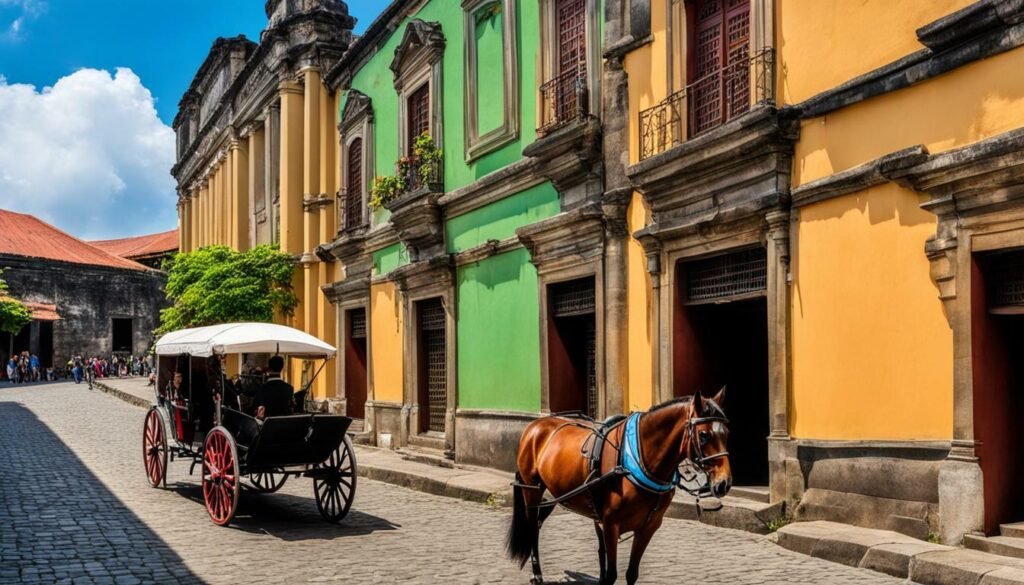
Museums Within Intramuros
Delve deeper into Intramuros’ history by visiting its fascinating museums, which house significant artifacts and offer insights into the city’s colorful past. These museums showcase various aspects of Intramuros’ cultural heritage, providing a captivating journey through time.
The Rizal Shrine is a must-visit museum dedicated to the life and works of the Philippines’ national hero, Jose Rizal. This museum is located in the house where Rizal spent his final days before his execution in 1896. It houses a collection of his personal belongings, manuscripts, and other memorabilia that shed light on his influence in shaping the country’s history.
Bahay Tsinoy is another significant museum within Intramuros that explores the Chinese-Filipino heritage and the long-standing relationship between the two cultures. The museum showcases artifacts, interactive exhibits, and dioramas, offering a comprehensive understanding of the Chinese influence on Filipino society and history.
The Museo de Intramuros is a newly established museum that showcases the rich history and artistry of Intramuros. Housed in the restored San Ignacio Church, this museum features a collection of religious artifacts, archaeological finds, and artwork that provides a glimpse into Intramuros’ diverse past and cultural heritage.
Visiting these museums provides a deeper understanding of Intramuros’ historical significance and offers a fascinating glimpse into the culture and heritage that shaped the city. The exhibits and artifacts on display paint a vivid picture of the past, allowing visitors to connect with the rich tapestry of Intramuros’ history.
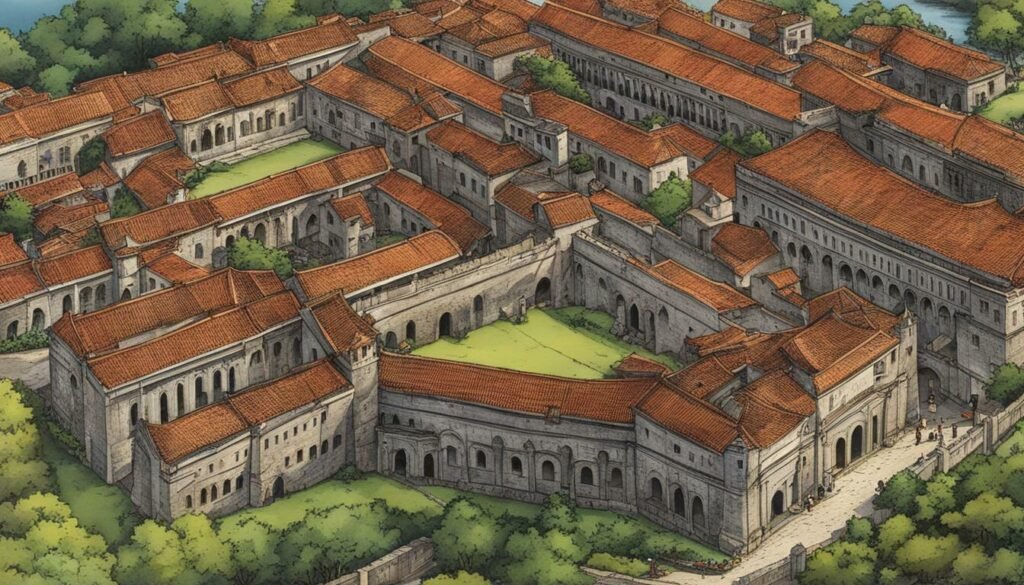
Best Time to Visit and Preparation
Plan your trip wisely to Intramuros by considering the best time to visit and making necessary preparations for a seamless exploration experience. Intramuros, with its rich history and breathtaking beauty , is best enjoyed during the dry season, which spans from December to May. The weather is generally sunny and less prone to rain, allowing visitors to fully immerse themselves in the wonders of the walled city.
Staying updated with the weather forecast is essential to ensure a comfortable and enjoyable visit. Dressing accordingly, with lightweight and breathable clothing, will help you stay cool while exploring the historic sites and attractions within Intramuros. Don’t forget to bring a hat, sunglasses, and sunscreen to protect yourself from the sun’s rays.

To make the most of your visit, consider booking a guided tour. Knowledgeable guides will provide valuable insights into the history and significance of each site, enhancing your overall experience. They can also help you navigate the narrow streets and hidden corners of Intramuros, ensuring you don’t miss any hidden gems.
When planning your trip, take note of any special events or festivals taking place in Intramuros. These cultural celebrations can add an extra layer of excitement and provide a unique opportunity to witness traditional performances, taste local cuisine, and interact with the friendly locals.
By considering the best time to visit and making necessary preparations, you can embark on a memorable journey through the history and beauty of Intramuros, creating memories that will last a lifetime.
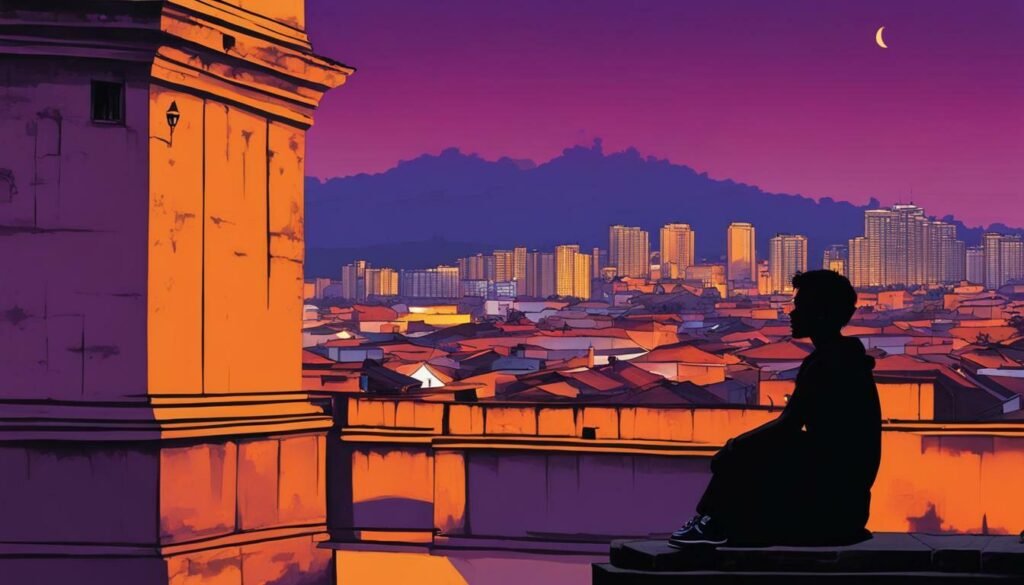
Transportation Options to Intramuros
Getting to Intramuros is a breeze with a range of transportation options , from taxis and trains to buses and convenient car booking apps . Whether you prefer the convenience of a private ride or the affordability of public transportation, there’s a mode of transport that will suit your needs.
If you’re looking for a hassle-free option, taxis are readily available in Manila and can take you directly to Intramuros. Just hail a taxi from your location and inform the driver of your destination.
For those who prefer a more adventurous and budget-friendly option, trains and buses are a great choice. The nearest LRT-1 station to Intramuros is Central Terminal Station, which is just a short walk away from the walled city. From there, you can take a leisurely stroll to explore the attractions within Intramuros.
If you want the flexibility of your own schedule, consider using car booking apps such as Grab or Uber. These apps allow you to book a private car or taxi at your convenience. Just download the app, create an account, and input your pick-up and drop-off locations. It’s a convenient and reliable option for getting around Manila and reaching Intramuros.
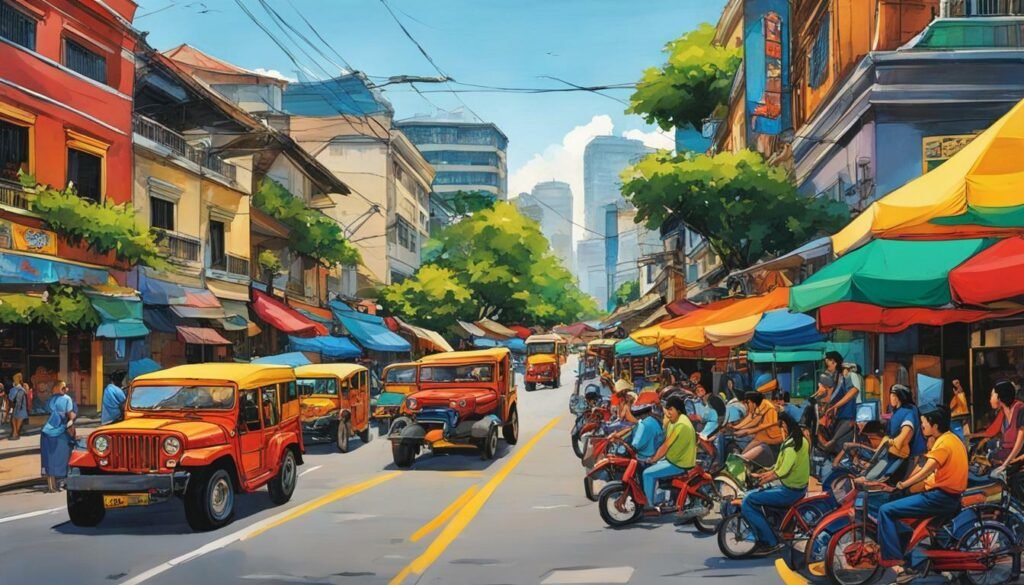
Whether you prefer a luxurious hotel within Intramuros or a budget-friendly option in nearby Manila, there are accommodations to suit every traveler’s needs. Staying within the walls of Intramuros provides a unique experience, allowing you to immerse yourself in the rich history and charm of the walled city. Several boutique hotels offer a blend of modern comforts and colonial-era aesthetics, ensuring a memorable stay.

If you’re looking for a more budget-friendly option, there are numerous hotels and guesthouses in nearby Manila that cater to different budgets. These accommodations provide convenient access to Intramuros while offering a wider range of amenities and price points. From budget-friendly hostels to mid-range hotels, there is something for every traveler.
When booking your accommodation, consider factors such as location, proximity to transportation options , and accessibility to popular attractions. Many hotels offer stunning views of Intramuros’ historic sites , allowing you to admire the beauty of the city from your room. Don’t forget to check for amenities such as complimentary breakfast, Wi-Fi, and 24-hour concierge services to enhance your stay.
Remember to book your accommodation in advance, especially during peak travel seasons, to secure the best rates and availability. Whether you choose to stay within Intramuros or in nearby Manila, you’ll find a range of accommodations that offer comfort, convenience, and a glimpse into the vibrant history of the Philippines.
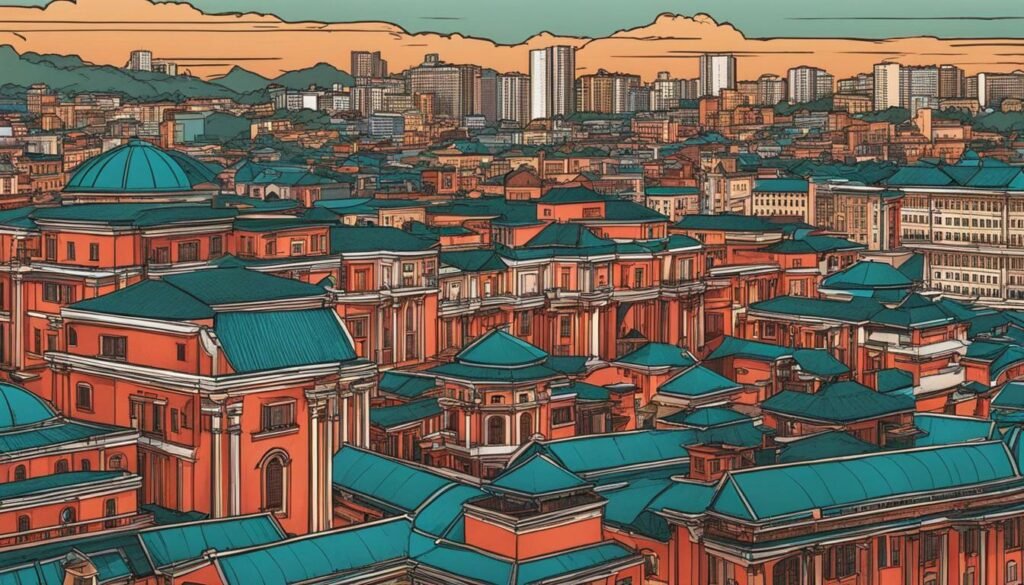
Immerse yourself in the captivating blend of rich history and breathtaking beauty that Intramuros offers, crafting unforgettable memories during your visit. As you explore the walled city, you’ll be transported back in time, surrounded by well-preserved structures that tell tales of a bygone era. The intricate architecture of centuries-old cathedrals and ancient fortresses will leave you in awe, while the serene courtyards and cobblestone streets evoke a sense of tranquility and charm.
One of the highlights of visiting Intramuros is discovering its iconic and historic sites. The magnificent Manila Cathedral stands as a testament to the city’s strong religious heritage, while the San Agustin Church, with its exquisite Baroque design, showcases the grandeur of Spanish colonial architecture. Step into Fort Santiago and be transported to a different era, where you can explore its dungeons, walk along its walls, and appreciate the panoramic views of the city.
Continue your journey through the past by visiting the Baluarte de San Diego fort, where you can marvel at the impressive bastions and lush gardens. Intramuros is also a haven for museum enthusiasts, with the Rizal Shrine offering insights into the life and works of the Philippine national hero, Dr. Jose Rizal. The Bahay Tsinoy provides a glimpse into the vibrant history of the Filipino-Chinese community, while the newly-opened Museo de Intramuros displays artifacts that shed light on the city’s Spanish colonial period.
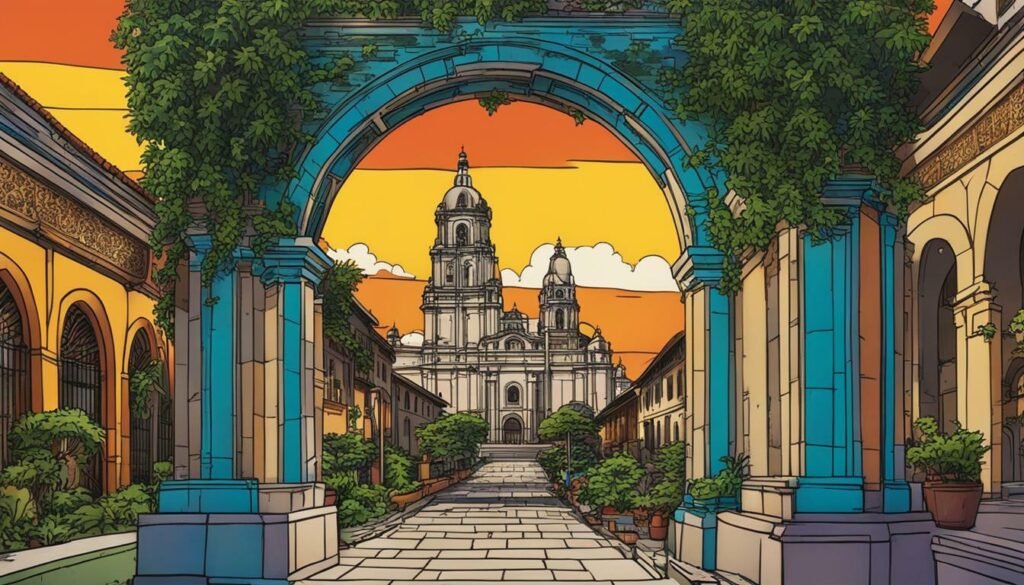
To fully appreciate the rich history and breathtaking beauty of Intramuros, it is best to plan your visit during the dry season from December to May. The pleasant weather allows for comfortable exploration of the walled city and its attractions. It is also important to stay updated with the weather forecast and dress accordingly to ensure a pleasant experience.
Getting to Intramuros is convenient, with various transportation options available. Taxis, trains, buses, and car booking apps provide easy access to the walled city. For accommodations, there are several options within and near Intramuros that cater to different budgets and preferences, ensuring a comfortable stay for visitors.

Embark on a journey through time and immerse yourself in the rich history and breathtaking beauty that Intramuros Philippines has to offer. Create lasting memories as you explore its iconic sites, delve into its museums, and soak in the charm of this historical gem .
Take a step back in time and uncover the wonders of Intramuros, Manila’s historical gem, where centuries-old cathedrals, ancient fortresses, and captivating museums await your discovery. Intramuros is the most visited tourist spot in the Philippines, drawing travelers from all corners of the globe to experience its rich history and breathtaking beauty.
As you explore the walled city, you’ll encounter iconic sites that stand as testaments to the Spanish colonization of the Philippines. Marvel at the majestic Manila Cathedral, the oldest stone church in the country, and step inside the San Agustin Church, a UNESCO World Heritage site with its beautiful architecture and religious relics.
Continue your exploration at Fort Santiago, an ancient Spanish fortress that bears witness to the country’s tumultuous past. Discover the Baluarte de San Diego fort, a well-preserved fortification offering panoramic views of the surrounding area.
Immerse yourself in the fascinating history of Intramuros by visiting its unique museums. The Rizal Shrine pays tribute to the national hero, Jose Rizal, while the Bahay Tsinoy showcases the Chinese influence on Philippine culture. Don’t miss the Museo de Intramuros, where you can delve deeper into the city’s heritage through its exhibits and artifacts.
To make the most of your visit, it is recommended to book a guided tour or explore Intramuros during the dry season from December to May, when the weather is more favorable. Stay updated with the forecast and dress accordingly for a comfortable and enjoyable experience.
Transportation options to Intramuros are convenient, with taxis, trains, buses, and car booking apps readily available. Choose the mode of transport that suits your preferences and make your way to this historical haven.
There are various accommodations within and near Intramuros, catering to different budgets and preferences. Whether you prefer luxury hotels or budget-friendly guesthouses, you’ll find a comfortable place to stay that is within easy reach of the walled city.
Enjoy the rich history and breathtaking beauty of Intramuros Philippines with a well-planned itinerary that allows you to fully immerse yourself in the wonders of this historical gem. Create memories that will last a lifetime as you explore the cathedrals, fortresses, and museums that weave the tapestry of Manila’s past.
Q: What is Intramuros?
A: Intramuros is the old walled city of Manila, Philippines, known for its historical significance and captivating attractions.

Q: Why is Intramuros the most visited tourist spot in the Philippines?
A: Intramuros attracts visitors from around the world due to its centuries-old cathedrals, ancient fortresses, and fascinating museums that showcase the rich history of the Philippines.
Q: What are some must-visit attractions within Intramuros?
A: Some must-visit attractions within Intramuros include the Manila Cathedral, San Agustin Church, Fort Santiago, and Baluarte de San Diego fort.
Q: How can visitors explore Intramuros?
A: Visitors can explore Intramuros on foot or through a traditional horse-drawn carriage ride known as calesa.
Q: What museums are located within Intramuros?
A: Intramuros is home to several museums, including the Rizal Shrine, Bahay Tsinoy, and the Museo de Intramuros.
Q: When is the best time to visit Intramuros?
A: It is recommended to visit Intramuros during the dry season from December to May for the most comfortable experience.
Q: What transportation options are available to reach Intramuros?
A: Visitors can reach Intramuros through taxis, trains, buses, or by using car booking apps.
Q: Are there accommodations available within and near Intramuros?
A: Yes, there are various accommodations available catering to different budgets and preferences.
Q: What is the significance of Intramuros in Manila?
A: Intramuros is a historical gem that weaves a tapestry of history and beauty, allowing visitors to immerse themselves in the rich history and breathtaking beauty of the Philippines.
Source Links
- https://traveloka.com/en-ph/explore/destination/exploring-the-historical-and-cultural-treasures-of-intramuros-the-walled-city-of-the-philippines-acc/254664
- https://guidetothephilippines.ph/articles/ultimate-guides/intramuros-manila-travel-guide
- https://www.expedia.com/things-to-do/intramuros-history-of-old-manila-manila-walking-tours-with-transportation.a2146319.activity-details
You may also like...

Aquino Dynasty Restored: Noynoy Aquino Elected President
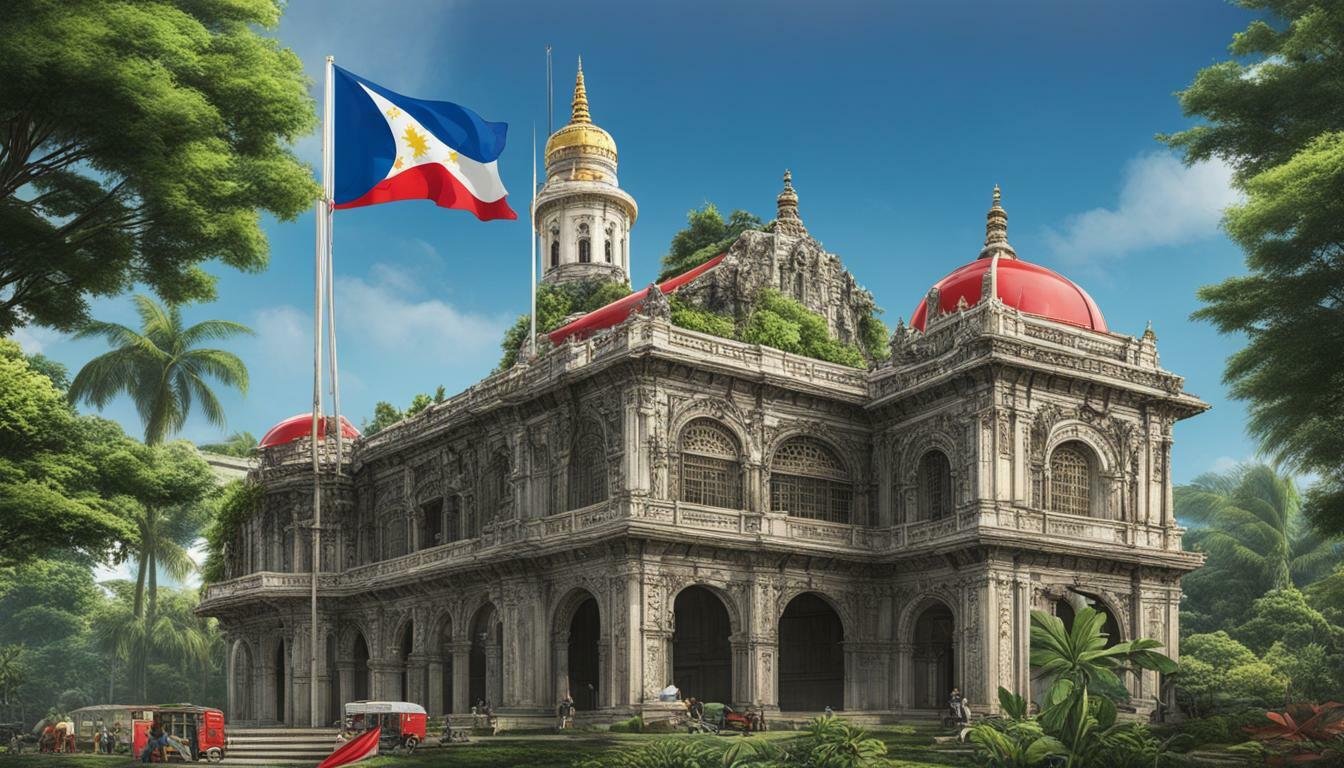
National Historical Commission of the Philippines

Sergio Osmeña: The 4th President of the Philippines
- Next story Hudhud: Ifugao Epic Poems
- Previous story Kalinga Artifacts and Fossil Fauna Remains

- Japanese Occupation (1942-1945)
Claire Phillips – The Spy Nightclub Owner in 1940s Manila
25 April 2024

Filipinos Loyal to Japan During the Invasion?

Filipino Guerrillas’ WW2 Tactics Against the Japanese

- Martial Law and Fourth Republic (1972-1986)
Exploring the Partido Kommunista ng Pilipinas’s Impact in Marcos Era
- Recent Posts
- Popular Posts
- Recent Comments

The Negros Nine: Legacy of Defiance & Courage

Explore Hinilawod: Discover an Epic Tale of Filipino Heritage
21 September 2023

- Contemporary Period (1986-Present)
Exploring the Life and Legacy of Isabelo de los Reyes
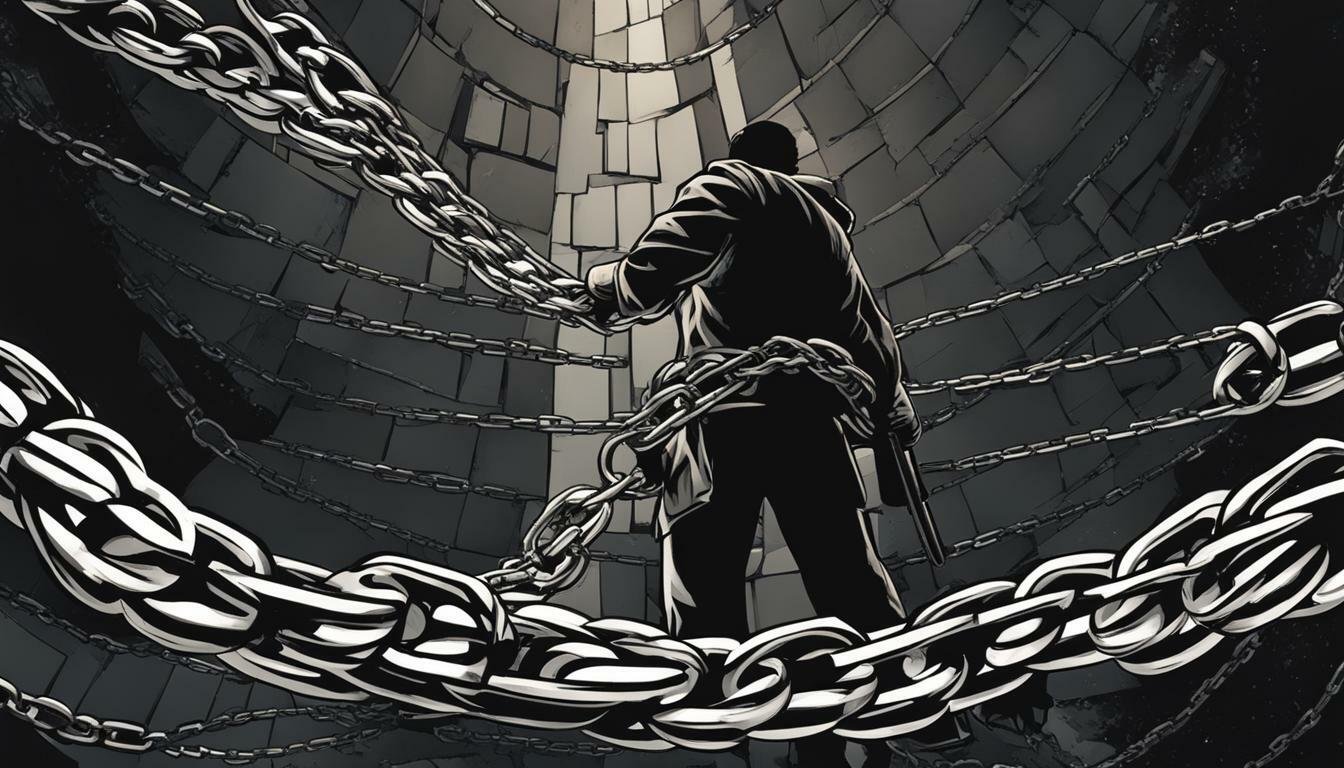
Understanding Alipin Mentality

- Post Marcos
The Political and Economic Turmoil in the Philippines After Marcos Regime
- Aking mga Kabata Analysis Aking mga Kabata Author Armed Forces Authoritarianism Cambodian history Celestial Phenomenon Colonial Era Colonial oppression creatures of the soil Early Philippine Records Eclipse Tracking in the Philippines Ferdinand Marcos Filipino History Filipino Poetry First Eclipse Observation GomBurZa Heritage Historical figures Human rights violations Josefa Roxas Jose Rizal kingdom of cebu kingdom of luzon King Norodom I Marcos Regime Martial law Martyrdom Military Equipment National heroes Philippine folklore Philippine history Philippine National Hero Philippine Science History Philippines history Place Political activism president raja (king) Revolutionaries Rizal's Poem Southeast Asian royalty Spanish Colonial Period Tagalog Literature Witness account World War II
- American Colonial Period (1901-1946)
- Ancient Monarchs and Leaders in the Philippines
- Philippine mythological creatures
- Post-War Era and Third Republic (1946-1972)
- Pre-Colonial (900–1560)
- President of the Philippines
- Questions Asked
- Spanish Colonial Period (1521-1898)
- 1 Understand
- 2.1 By taxi
- 2.2 By train
- 2.3 By water bus
- 3 Get around
- 4.1 Walls, gates, and fortifications
- 4.2 Plazas, monuments, and public buildings
- 4.3 Churches
- 4.4 Museums
- 4.6 Other buildings
- 7.2 Mid-range
- 7.3 Splurge
- 9.1 Mid-range
- 9.2 Splurge

Intramuros (Latin: within the walls ) is the historic centre and oldest district of Manila, the capital city of the Philippines.
Also known as the Ciudad Murada ("Walled City" in Spanish) because of its most famous feature: a nearly 5-km-long circuit of massive stone walls and fortifications that almost completely surrounds the entire district.
Understand [ edit ]

From the city's foundation in 1571 to the end of Spanish rule in 1898, Intramuros was Manila.
The Spanish conquistador Miguel López de Legazpi laid the foundations of the new capital on the former site of Maynilad , a palisaded riverside settlement ruled by a native chieftain. To protect the inhabitants from attack, in the late 1500s construction began on a series of stone walls and fortifications that would eventually enclose a pentagonal area approximately 0.67 km² in size, within which lay a tight grid-like system of streets and a main square surrounded by government structures. The defensive curtain was more or less completed by the 1700s, although improvements and other construction work continued well into the next century.
Within the protective walls rose a city of stone palaces, churches, monasteries, convents, schools, and fine courtyard houses. In the centuries that followed, Manila (meaning Intramuros) served as the capital of the Spanish East Indies - the centre of commerce, education, government, and religion in Spain's most distant imperial possession.
Except for a brief period under British rule (1762-1764), Intramuros remained a Spanish city until 1898, when the US took control of the Philippines at the end of the Spanish-American War.
In 1945, during the fierce Battle of Manila between American, Filipino and Japanese forces, Intramuros was almost completely destroyed. Instead of rebuilding on the same site, many of the religious orders and educational institutions that once resided in the walled district packed up and moved elsewhere. Although steps were taken to protect the city's historic character, vague laws and poor enforcement led to many unsightly modern buildings being built upon the ruins of the old. In 1979, the Intramuros Administration was established and stronger measures introduced in order to preserve what was left.
Many of the city's ancient gates and most of the walls have since been restored. On the other hand, there has been almost no progress in the reconstruction of key landmarks (such as major churches and old government buildings), due in part to a serious lack of funds and the existence of new structures.
Get in [ edit ]
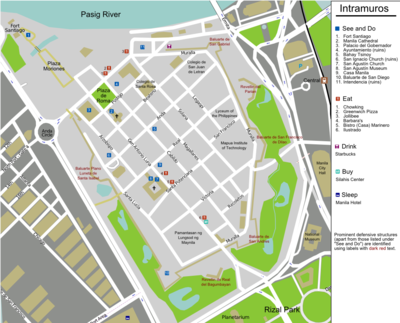
By taxi [ edit ]
For visitors who don't mind shelling out a little extra - and putting up with rush-hour traffic jams - Manila's relatively inexpensive taxis are probably the easiest and most direct way of reaching Intramuros from elsewhere in the city. The current flagdown rate is ₱40 , and the fare goes up in increments of ₱3.50 every 300 metres.
By train [ edit ]
The nearest railway station is Central Terminal (LRT-1) [dead link] . Though within sight of the eastern walls, the station is a pretty long walk from the western part of Intramuros (where many of the major sights are located), so tourists headed in that direction might consider covering the rest of the journey by taxi.
By water bus [ edit ]
The Pasig River Ferry used to stop at Plaza México station, not far from the ruins of the Intendencia (Aduana) building, but according to reports the service has been suspended for an indefinite period. If operations resume, the ferry will likely use this same stopping point.
Get around [ edit ]

It's hard to get hopelessly lost in Intramuros, thanks to the district's orderly street plan. General Luna (also known by its old name, Calle Real del Palacio ) is the closest thing Intramuros has to a main street and gives visitors easy access to most of the major attractions, including San Agustín Church and Manila Cathedral . Follow this street all the way to its northwestern tip and you'll find yourself in front of Fort Santiago ; go the other way and you'll eventually end up in Rizal Park , which is just over the border in the nearby Ermita district.
If you do lose your bearings, don't panic. Except for a small section near the river, the entire district is surrounded by walls - so there probably isn't much of a chance that you'll inadvertently end up in the wider city beyond. A quick look at a map (and perhaps a little help from passers-by) should easily put you back on track.

- By calesa - First used on the streets of Manila in the 18th century, these horse-drawn carriages can usually be found waiting for passengers near Fort Santiago. A nice, old-fashioned way to get around Intramuros. To avoid getting ripped off, it may be a good idea to ask about the route and confirm the price of the trip before setting out.
- On foot - Walking from one attraction to another is a popular way to get around Intramuros. Just mind the cars: there are almost no pavements to speak of so pedestrians usually share space with automobiles. It is even possible to walk on some sections of the old city walls.
See [ edit ]
Walls, gates, and fortifications [ edit ].

Except for a small open stretch near the River Pasig, Intramuros is completely surrounded by the massive stone walls that gave the district its name. Starting from the northwestern end of the fortifications and moving anti-clockwise ( Note: This is not a comprehensive list! ):
- Postigo del Palacio , Santa Lucia ( a short distance from the back of the Palacio del Gobernador ). Built in 1662, renovated 1782-83. On 30 Dec 1896, national hero José Rizal was taken through this gate en route to the place of his execution, in what is known today as Rizal Park (see related entry on the district sub-page for Ermita ).
- Puerta de Santa Lucia
- Baluartillo de San Jose and Reducto de San Pedro
- [dead link] Baluarte de San Diego , Santa Lucia cor. Muralla . Dating from the 17th century, this formidable bastion surrounds the remains of the round fort of Nuestra Señora de Guia , the first stone fort built in Manila. Severely damaged during the Second World War, the Baluarte de San Diego was restored in the 1980s and is now a major tourist attraction.
- Puerta Real and Revellin de Real del Bagumbayan
- Baluarte de San Andres
- Baluarte de San Francisco de Dilao
- Puerta del Parian and Revellin del Parian
- Baluarte de San Gabriel
- Puerta de Isabel II , Magallanes Drive ( near Colegio de San Juan de Letrán ). Built in 1861, this was the last gate to be opened in Intramuros' walls under Spanish rule. A fine statue of Queen Isabel II of Spain stands in front of the gate.
Plazas, monuments, and public buildings [ edit ]
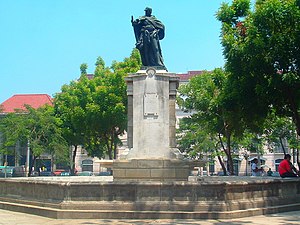
- Plaza Moriones - Located in front of Fort Santiago, this is where the Galeria de la Revolucion Filipina is situated.
- Plaza México
- Plaza Sto. Tomas
- Plazuela de Sta. Isabel - a memorial monument of the civilian victims of World War II can be found here.
Churches [ edit ]
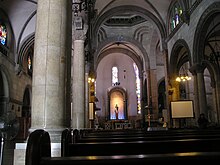
Museums [ edit ]
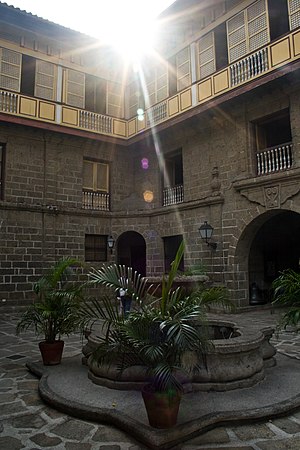
- Light and Sound Museum , Santa Lucia cor. Victoria , ☏ +63 2 524-2827 . Using images, sounds, and animatronics, the museum takes visitors on a journey through Philippine history under Spanish rule. The facility is housed in a building whose facade reproduces the appearance of the old mother house of the Beaterio de la Compañía de Jesús , which stood on the site until its destruction during the Second World War. ₱100 per person for groups of 10 or more; smaller groups are reportedly charged a higher per-person rate (contact the museum to confirm arrangements).
- 14.589068 120.975 10 San Agustín Museum , General Luna (Calle Real del Palacio) cor. Real ( right next to San Agustín Church ), ☏ +63 2 527-4061 . 8AM-noon, 1PM-6PM daily . Adjacent to the San Agustín Church (see Churches , above), this museum's very impressive - if rather poorly labelled - collection includes Spanish colonial-era ecclesiastical vestments, sacred vessels, religious art, manuscripts, and other important cultural artifacts. The building itself is steeped in history, fashioned out of the surviving portions of a monastery that was heavily damaged during World War II. ₱200 /adult, ₱100 /college students, ₱90 /high-school students, ₱40 /elementary school students . ( updated Nov 2017 )
Ruins [ edit ]
- [dead link] San Ignacio Church , Arzobispo cor. Anda . Built by the Jesuits and consecrated in 1889, the church's magnificent interiors were completely destroyed in 1945. There are plans to restore the ruined building for use as an ecclesiastical museum.
Other buildings [ edit ]
- [dead link] ECJ Building , Santa Lucia cor. Real ( near Puerta de Santa Lucia ). The external appearance of this post-war building closely mimics that of the Augustinian Provincial House , an extension of the nearby San Agustín convent that was built on the site in the 19th century and destroyed by fire in 1932.
Do [ edit ]
- Club Intramuros Golf Course , Bonifacio Drive cor. Aduana Street, Port Area ( 30-45 min from the airport via Roxas Blvd ). A few years after the Americans took over from the Spanish in 1898, the fetid, swamp-like moat around Intramuros was drained and filled in. The newly reclaimed land was later covered with grass, spiced with a few sand pits and sprinkled with water traps. Result: a 4,326 yd, 18 hole, par 66 greensward that wraps around the city's ancient walls and makes for an interesting (if rather short) golfing experience.
Buy [ edit ]
For visitors looking to take something home, stores and galleries selling everything from native art to tourist kitsch aren't difficult to find in this district, especially near major landmarks like Fort Santiago. That said, Intramuros isn't really known for its shopping - to find more options one might consider heading out to the malls of the nearby Ermita area and further afield.
- Mananzan Handicrafts , G/F Upl Building, Sta. Clara ( near Fort Santiago ), ☏ +63 2 5279-734 . Local handcrafted goods and souvenirs.
- The Silahis Center , 744 General Luna (Calle Real del Palacio) , ☏ +63 2 527-2111 , [email protected] . Handmade Filipino goods and folk art. Other departments within the same showroom feature fine art, antiques, and books.
Eat [ edit ]
Fast food chains, convenience stores and street stalls are available if you are travelling on a budget. Food prices on local restaurants around the district are rather high for locals, but fairly reasonable to foreigners.
Budget [ edit ]
Mid-range [ edit ].
- Bistro Marinero , General Luna (Calle Real del Palacio) cor. Santa Potenciana ( near San Agustín ), ☏ +63 2-5272261 , fax : +63 2-5272234 , [email protected] . The menu features a mix of Western and local dishes. Special "payday" buffets, combo meals, etc.
- Coco Bango Cafe and Restaurant , Plaza San Luis Complex, General Luna (Calle Real del Palacio) cor. Urdaneta ( attached to the White Knight Hotel ), ☏ +63 2-5266181 . Offers Asian and Western fare.
- Ristorante delle Mitre , CBCP Building, 470 General Luna (Calle Real del Palacio) ( near San Agustín ), ☏ +63 2-5595220 . Features simple, hearty Filipino meals inspired by the favourite dishes of the country's bishops and clergy. The culinary team is supervised by a nun who formerly served as a cook to a prominent local cardinal, and the walls are decorated with portraits and mementos of senior clerics, perfectly in keeping with the sacred atmosphere of the San Agustín area.
Splurge [ edit ]
- 14.589948 120.978729 1 9 Spoons , 9th Floor, The Bayleaf Intramuros, Muralla cor. Victoria ( inside the Bayleaf Hotel building ), ☏ +63 2-3185000 . 6AM-10:30PM . Contemporary interiors, access to a roof deck and splendid views. The restaurant serves both international dishes and local specialities. Buffet breakfast daily, buffet lunch on weekdays. ( updated Jun 2017 )
- 14.589471 120.975235 2 Barbara's , Plaza San Luis, General Luna (Calle Real del Palacio) ( right across the street from San Agustín ), ☏ +63 2-5273893 , +63 2-5274086 . Housed in a Spanish colonial-style building a stone's throw from San Agustín Church, this centrally located restaurant serves traditional Filipino and Hispanic fare in an old-style setting. ( updated Jun 2017 )
- 14.587537 120.977031 3 Ilustrado , 744 General Luna (Calle Real del Palacio) ( within the El Amanecer compound, a few blocks down the street from San Agustín ), ☏ +63 2-5273674 , [email protected] . Mainly Filipino-Spanish cuisine: rellenong bangus (stuffed milkfish), paella , and other traditional dishes. Fine dining in the heart of the walled city. ( updated Jun 2017 )
Drink [ edit ]
If you're feeling peckish - or need something more substantial to go with your beverage - the cafés listed here also generally offer light meals and snacks, making them a good alternative to the restaurants listed in the previous section.
- Cioccolata – Churros Café , Ground Floor, The Bayleaf Intramuros, Muralla cor. Victoria ( look for the Bayleaf hotel building ). M-F 6AM-10PM, Sa Su 8AM-8PM . Nothing like some good old-fashioned churros con chocolate to relive colonial days. Also offers a selection of more contemporary beverages, sandwiches and desserts.
- Starbucks , 15-A Puerta Isabel II, Muralla cor. Magallanes ( near Puerta de Isabel II ), ☏ +63 2-5274282 . No matter where you go, you can't escape Starbucks. Sits not far from the historic Puerta de Isabel II, the last gate built in Intramuros.
Sleep [ edit ]
Hotels of any kind - from the luxurious to the spartan - are easy to find in Manila , but there aren't many choices within Intramuros itself. There are a few hotels inside the district boundaries. Additional hotels can be found in the neighbouring Ermita district.
Tourists willing to put up with (and pay for) long taxi rides might also consider bedding down in the high-end hotels of the posh Makati business district, miles to the southeast.
- 14.590147 120.978704 1 The Bayleaf Intramuros , Muralla cor. Victoria , ☏ +63 2-3185000 . A swank hotel just inside the walls, with great views of the surrounding area (especially from the roof deck). The neighborhood isn't the best of places in Intramuros but the major sites should be within an easy walk from here. Complimentary WiFi upon check-in. Has a cafe on the ground floor and a restaurant on the 9th.
- 14.589657 120.975697 2 White Knight Hotel , Plaza San Luis Complex, General Luna cor. Urdaneta ( opposite San Agustin church ), ☏ +63 2-5266539 . A new 29-room hotel in the heart of Intramuros. With the San Agustín Church right across the street and other major attractions within walking distance, the location is hard to beat. Free WiFi Internet access. Has a cafe-restaurant that offers a mix of Asian and Western fare.
- 14.582999 120.974052 3 Manila Hotel , One Rizal Park, Roxas Blvd , ☏ +63 2 527-0011 , fax : +63 2 527-0022 , [email protected] . Opened in 1912 on a prime site just outside the walls of Intramuros, the venerable Manila Hotel is a well-known landmark and a historic location in itself. General Douglas MacArthur lived there from 1935 to 1941. Special online rates (which are much lower than published rates) and other offers can be viewed on the hotel's official website.
Connect [ edit ]
The international telephone country code for the Philippines is 63 . The area code for Metro Manila (including Intramuros) is 02 .
For further information about this district, contact:
- Intramuros Visitors Center , Santa Clara ( near Fort Santiago ), ☏ +63 2 527-2961 . Stop by this handily located information point (just inside the entrance gate leading to Fort Santiago) for maps and advice.
Go next [ edit ]
Manila's sprawling Rizal Park, the National Museum and many other attractions are just over the border in the Ermita district, within sight of Intramuros' southern walls.
- UNESCO World Heritage Sites
- UNESCO tag to be fixed
- Has custom banner
- Articles with dead external links
- Has mapframe
- Maps with non-default size
- Has map markers
- See listing with no coordinates
- Do listing with no coordinates
- Buy listing with no coordinates
- Eat listing with no coordinates
- Drink listing with no coordinates
- Has Geo parameter
- All destination articles
- Guide districts
- Guide articles
- District articles
- Pages with maps
Navigation menu
- Airport Transfer
Things to Do

Traveloka Accomodation
24 Jul 2023 - 4 min read
Exploring the Historical and Cultural Treasures of Intramuros, The Walled City of the Philippines
Unveil the captivating allure of Intramuros Philippines, the old Manila that weaves a tapestry of history and beauty. Immerse yourself in centuries-old cathedrals, ancient fortresses, and fascinating museums.
There is no better place to learn about Manila's rich history than Intramuros. Intramuros Philippines is also known as the old Manila. It plays a significant role in the heart of every Filipino as it serves as a reminder of the Spanish Era. Apart from learning about Philippine history, the Intramuros tourist spot is also one of the places you will want to take advantage of!
If you want to visit Intramuros, this article has covered you from dusk to dawn! As you travel, expect to witness many spectacular scenes, so bring your camera and get some great shots!
What is Intramuros and What Makes It Special?

Aside from being the most visitedtourist spot in the Philippines, Intramuros Philippines has been a prominent tourist spot from the colonial Era until the American commonwealth. Though the structures of Intramuros Manila were initially built as a survival tactic, guests are now welcome to discover centuries of history inside its walls.

This walled city is a sanctuary to the capital's iconic and historic sites constructed during the Spanish colonization of the Philippines. It is also among the most visited tourist spots in the Philippines. Many tourists visit Intramuros to grasp the past and see centuries-old institutions because of their old-world appeal.
The name, derived from the Spanish word for "within walls," refers to the fort near the Pasig River downstream. This Manila walled city was named after the Spanish conquistador- Miguel López de Legazpi. Being one of Manila's most visited tourist spots, Intramuros has a lot to offer.
Read more : Davao Adventure: Your Guide to Uncovering the Most Spectacular Tourist Destinations
A Comprehensive Guide to Exploring Intramuros' Rich Cultural Heritage
It is not easy to pick a favorite place or spot in Intramuros. And that’s because there are a lot of Intramuros historical sites that will surely capture the hearts of its visitors. However, if you only have a restricted amount of time to explore, here are some of the Intramuros attractions that you absolutely must see:
Manila Cathedral

The majestic Manila Cathedral, built in 1571, represents one of the most identifiable structures within Intramuros. The current cathedral is the fifth to be made after natural disasters, and WWII severely damaged the previous ones.
San Agustin Church

The church of San Agustin is the Philippines' oldest stone church. It was built in 1571. Also, the current stone structure is the third congregation to be constructed in the vicinity, as the fire wiped out the first two wooden buildings. Plus, the San Agustin Church is a UNESCO World Heritage Site and a Philippine Government National Historic Landmark. A San Agustin Church tour will help you see more Filipinos' devotion to Catholicism.
Fort Santiago

Fort Santiago is the Philippines' ancient Spanish fortress. The site is located within Manila's walled city of Intramuros. It has also witnessed many histories in the Philippines. Fort Santiago was built on the site of a Muslim empire ruled by a tribal chief named Rajah Sulayman. AFort Santiago tour is a tour one shouldn't miss!
San Diego Baluarte

The Baluarte de San Diego is a fort built along the Intramuros walls. This jutting structure was meant to provide soldiers with a comprehensive view of approaching intruders. The Baluarte de San Diego now has gardens and shaded walkways for special events and gatherings.
Things to Do in Intramuros Manila Philippines
Ride The Calesa

The horse-drawn carriage, or the calesa, has long been associated with old Manila. In some parts of Manila, such as Intramuros, it is still used as a mode of transportation. Guests who want to avoid walking around Intramuros' historical sites can hire a calesa to take them around the famous landmarks.
Take a stroll through Intramuros

The best way to explore Intramuros attractions is to walk around. This will get you to appreciate the beauty of the area's architectural history and other historic sites.
Go to a museum

Visiting a museum is a good idea if you enjoy looking at antiques and historical artifacts. You can see any of the museums located within the walls of Intramuros. Some known museums are Rizal Shrine, Bahay Tsinoy, Archdiocesan Museum of Manila, Casa Manila, Museo de Intramuros, The Silahis Center, Destileria Limtuaco Museum, and a lot more.
Read more: Best Tourist Spots in Cavite, Philippines
Alright, fellow travelers, get ready to embark on an adventure that will take you through the rich history and breathtaking beauty of Intramuros Philippines.
And guess what? Planning your dream vacation has never been easier, thanks to Traveloka! This fantastic platform allows you to book flight , hotel , and other travel services, including the exciting Traveloka Xperience , where you can get tickets for various attractions and activities all in one place – right on your smartphone!
So, what are you waiting for? Let Traveloka be your trusty companion as you plan your holiday or staycation in Intramuros or any other fantastic destination. Unleash your wanderlust and create memories that will last a lifetime.
Book your trip now with Traveloka and get ready for an unforgettable adventure full of incredible savings!
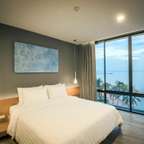
Best Hotels & Accommodations in Intramuros
Find more choices of hotels and accommodations in Intramuros with the best price offers on Traveloka
Cheap Hotels in Manila Cheap Hotels in Cebu Cheap Hotel in Boracay
Payment Partners
About Traveloka
- How to Book
- Help Center
Follow us on
- ProductItems.cruises-search
- Traveloka Affiliate
- Privacy Notice
- Terms & Conditions
- Register Your Accommodation
- Register Your Experience Business
- Traveloka Press Room
Download Traveloka App
Walking Tour of Intramuros
This is where Manila was Born
:max_bytes(150000):strip_icc():format(webp)/mike_borobudur-5b6d3ea446e0fb0025fcb683.jpg)
Michael Runkel / Getty Images
For hundreds of years, the walled city of Intramuros was Manila : the nerve center of the Spanish occupation in the Philippines , home to several thousand Spanish colonists, their families, and their Filipino servants.
Intramuros was erected on the ruins of a Malay settlement at the mouth of the Pasig River. Its strategic location attracted the attention of the conquistador Miguel Lopez de Legazpi, who took over the area in 1571 and proclaimed it as the Philippine colony's new capital.
For 400 years, Intramuros was the center of Spanish political, religious, and military power in the region. (Read about churches in the Philippines .) The walled city suffered grievously through World War II; only San Agustin Church was left standing by war's end.
In the 1980s, the government led a major restoration effort that reconstructed Intramuros to its present state. Today, Intramuros is a prominent tourist spot where visitors can experience Spanish-era Manila through the walled city's churches, restaurants, and museums.
Beginning Your Intramuros Walking Tour
Begin at the Intramuros Visitors' Center at the restored Baluartillo de San Francisco Javier in Fort Santiago ( Google Maps ). This is an ideal jumping-off point for many walking tours through Intramuros, or independent visits to Intramuros' top sights .
At the Center, you can pick up brochures on the places you plan to see or find out about scheduled cultural events in the Walled City.
Fort Santiago is easily accessible via taxi, jeepney, or LRT (the Central Terminal Station is the closest stop). Read about Manila's commuter rail system for more details.
The tour will take about two hours and involves a fair amount of walking. We recommend you avoid walking in the middle of the day; limit your trips to before 9am, or after 4pm to avoid sunstroke or sunburn .
To fully enjoy your trip, you'll need:
- a carry bag for souvenirs
- comfortable shoes
- bottled water
First Stop: Fort Santiago
Fort Santiago ( Google Maps ) was built by Spanish conquistadors in 1571, replacing the destroyed fortress belonging to the last datu (king) of pre-Hispanic Manila.
Over the years, Fort Santiago served as a fortress against marauding Chinese pirates, a prison for Spanish-era political prisoners, and a Japanese torture chamber in World War II. American bombs deployed during the Battle for Manila almost succeeded in destroying the Fort altogether.
A postwar government initiative helped restore Fort Santiago and clean its bad juju away. Today, Fort Santiago is a relaxing place to visit and an enlightening portal into the Philippines' colonial past. It contains a peaceful park, battlements overlooking the Pasig River, and a memorial museum to the Philippines' national hero Jose Rizal.
For more information, read our overview of Fort Santiago in the Philippines .
Next Stop: Manila Cathedral
Exit the main gate of Fort Santiago and make a five- to ten-minute walk southeast down General Luna Street, past the Plaza Moriones and the Palacio del Gobernador. The Cathedral will be visible to your left.
The Manila Cathedral (Cabildo cor. Beaterio Streets, Intramuros; Google Maps ) is the ecclesiastical seat of the Archdiocese of Manila. In Spanish colonial times, this was the seat of the Spanish Archbishop of Manila, who had jurisdiction over the entire archipelago .
This structure is actually the sixth church to occupy the site. The first one, built in 1581, was razed to the ground two years after it was built. The present structure was completed in 1958.
The Cathedral's crypts serve as a final resting place for former Archbishops of Manila, just as the crypts of St. Peter's in the Vatican do for the bodies of former Popes. Among those interred in the Cathedral's crypts is Jaime Cardinal Sin, one of the ringleaders of the 1986 Edsa Revolution that ousted the dictator Ferdinand Marcos.
Next Stop: Walls of Intramuros/Puerta de Santa Lucia
A further five-minute walk down General Luna Street in the same direction; after two blocks, turn right and walk down Calle Real until you reach Puerta de Sta. Lucia.
Facing the former Malecon Drive (now Bonifacio Drive), Puerta de Santa Lucia ( Google Maps ) is one of several gates passing through the Intramuros walls. First built in 1603, Puerta de Santa Lucia (when open) leads out to Malecon, once a waterfront promenade before reclamation transformed the shores in front of the walls into the present-day Port Area.
Passersby get a close-up look at the thick stone walls and moats that skirt Intramuros' borders, as the walls can actually be climbed for a commanding view of the streets within Intramuros and the golf course beyond the wall.
During Manila's colonial heyday, no one could enter Intramuros but the Spanish, their servants, and mestizos (half-Spanish Filipinos). Outside Manila lived Filipinos and Chinese merchants. The latter were forced to live in a ghetto that was conveniently located within range of Intramuros' cannons, in case the Chinese revolted against Spanish rule.
Next Stop: San Agustin Church and Museum
Go back up Calle Real, turn right on Gen. Luna Street and enter the parking lot of San Agustin Church immediately on your right.
The San Agustin Church (Calles Gen Luna and Real, Intramuros; Google Maps ) is the first European stone church designed along Spanish lines in Manila. It has 14 side chapels, hand-carved hardwood pews dating back to the 17th century, an 18th-century pipe organ, and a beautiful trompe l'oeil ceiling. Beside the church is a small museum featuring Spanish-era vestments, furniture, and religious artwork.
Along with three other ancient Philippine churches, San Agustin Church was designated a UNESCO World Heritage Site in 1993.
Its walls have stood as a mute witness to Philippine history. Three Spanish conquistadors are buried here. In its vestry, Spanish and American commanders discussed the city's terms of surrender during the Spanish-American War. Japanese soldiers massacred 140 people on the premises during World War II, as the American troops approached Intramuros.
For the bloody details, read our overview of San Agustin Church .
Next and Final Stop: Casa Manila
Go back the way you came, through the parking lot—cross the street to get to the Plaza San Luis Complex.
Plaza San Luis (Calle Real del Palacio, Intramuros; Google Maps ) was a pet project of Imelda Marcos (she of the 7,000 shoes): its centerpiece is Casa Manila , a reconstruction of a Spanish colonial home of the 19th century. (The whole structure itself dates back only to 1981.)
Each room in Casa Manila is decorated in period style, complete with antique furniture, fixtures, and artwork.
Beyond Casa Manila, the Plaza San Luis Complex contains several other stops that will hold any tourist's interest: the White Knight Intramuros budget hotel; Puesto Manila , a creative hub and cafe; Barbara's, a Filipino restaurant; and Bambike Ecotours , which takes guests on tours of top Manila stops using bamboo bikes.
Top 10 Indispensable Intramuros, Philippines Stops
10 Things to Do in Luzon, the Philippines
Guide to Fort Santiago, Intramuros, Manila
Guide to San Agustin Church, Intramuros, Philippines
Travel Guide to Intramuros, Manila, Philippines
13 Best Things to Do in Manila, the Philippines
Philippines' Top Churches
8 Sacred Sites in Southeast Asia
Cubas Capital City of Havana
The 17 Best Things to Do in Mexico City
Top UNESCO World Heritage Sites in Southeast Asia
Madrid on a Budget
Discover the Beauty of San Miguel de Allende
20 Best Things to Do in Florence, Italy
10 Things to Do in Downtown San Jose
Where to Go for the Holidays in 2019
The Happy Trip
Intramuros manila | tour, tourist spots, restaurants, churches, history.
[ Intramuros Manila, Brief History Tourist Spots, Self-Guided Tour, Intramuros Churches, Restaurants, Hotels ]
INTRAMUROS MANILA TRAVEL GUIDE | Tour, Tourist Spots, Restaurants, Churches, History
Here’s your updated Intramuros Manila Travel Guide. It covers various the following: Intramuros Manila Brief History Tourist Spots, Self-Guided Tour, Intramuros Churches, Restaurants, Hotels

[ Intramuros Manila Brief History Tourist Spots, Self-Guided Tour, Intramuros Churches, Restaurants, Hotels ]
Brief Intramuros Manila History: The Walled City
From its very foundation in 1571 to the cessation of Spanish rule in the country, the “walled city” known as Intramuros is a historical landmark that is rich in history. Literally meaning “within the walls” based on the Spanish language, the place was once the seat of power of the Spanish crown in its most distant colony, the Philippines.
Initially built by the Spanish conquistador Miguel Lopez de Legaspi, this enclave which was formerly known as Maynilad was also the center of the colonizer’s economy, religion, and education in the country.
Fast forward into the present, the heavily fortified community which was set to be the cradle of the Spanish influence in the country has become but a relic of its former self.

Intramuros, Manila at the Present
Ravaged by the war which brought most of its parts in ruins, the walled city that is Intramuros is mostly the only recreation of what it had been, particularly its walls. Most of the infrastructures it previously held were also made unrecoverable brought by the consequence of the Second World War.
Although part of the Filipino culture is interweaved from that of its colonizers, the ostensive influence of the Spanish has seen decline throughout the years. Despite this, the formerly secluded city of Intramuros remains a clear example of the Spaniard’s influence over the land, albeit only as a vestige of it.
Fort Santiago, once a headquarter of the Spanish military, is now just a park which people visit to take a gander. It is in this construction where the idol of St. James the Moor-slayer, patron saint of Spain, is housed. Another historical significance of this citadel is in the fact that it also served as imprisonment to the country’s national, Jose P. Rizal, prior to his execution.

As once the center of education by the Spanish colonizers, this former city was home to some of the country’s oldest universities and colleges, most of which destroyed during the war. Of the three universities originally erected in the place, only one remained standing to this day: the Colegio de San Juan de Letran. The rest, while still in operation, were moved to other locations.
Colleges, however, like the Pamantasan ng Lungsod ng Maynila, Lyceum University of the Philippines, and Mapua Institute of Technology were only built in the area during post-World War 2 era.

Manila Cathedral [ Intramuros Manila Brief History Tourist Spots, Self-Guided Tour, Intramuros Churches, Restaurants, Hotels ]
House of God | Intramuros Churches
As the seat of religion during the time of occupation, the walled city of Intramuros is nestled with multiple grand citadels as built by a number of religious orders. Of the seven massive churches that once stood in the heavily-guarded city, only one remained standing resulting from the damages of war: San Agustin Church.
Apart from being the oldest structure in what is now present-day Manila, the San Agustin Church is the only construction that was spared from the catastrophic event that brought much of the city in utter ruins.
Like the universities that were damaged and never been restored from their original standings, the 6 churches that were not saved from the destruction were never resurrected to see the light of day at Intramuros ever again. Rather, they were also moved elsewhere outside the confines of the walled city.

Things to do in Intramuros, Manila | Tourist Attractions For Your Self-Guided Tour
Fort Santiago or more commonly known as Intramuros was built in Manila way back 1571 located in the native settlement of Raja Soliman. Its first fences construction was made up of logs and earth which was eventually destroyed in 1574 during the Limahong attack. It was then reconstructed using stone materials in the year 1589 and 1592. Unfortunately, it was damaged by an earthquake in the year 1645, and it needed to undergo another reconstruction in the year 1658 to 1663. Since then, it has been a haven for the US Army, the Japanese military, and a long list of historical events. In fact, it also served as a prison and a place of torture for hundreds of both civilians and guerrillas. Finally, in the year 1992, it was declared under the protection and restoration of the Intramuros Administration in the year 1992.
With the place’s dark past, who would have taught that it will become a famous landmark as well as a top tourist destination in the city center of the country, Manila? If you did not yet visit the place before, we have here the list which you may want to check on for your next tour:
Palacio Del Gobernador, Intramuros, Manila
Previously used as the abode of the Governor-General during the Spanish occupation, this place now serves as a memory of the massacred 80 male civilians during World War II. This substantial structure building now houses different government offices.
Postigo del Palacio
Established in the year 1783, this pathway serves as a short-distanced path going to the palace of the Governor-General as well as the Archbishop. This is famous for the reason that the national hero, Dr. Jose P. Rizal, passed through this gate on his way to the execution site.
Puerta De Sta.Lucia , Intramuros, Manila
As one of the original entrance gates of Intramuros built in the year 1603, this place provided easy access for those who are going to the Malecon Drive. It was once destroyed way back in the battle in Manila in the year 1945 and was reconstructed in the following years adding side chambers and a gate.
ECJ Building
Established in 1895, this was built as a Casa Nueva or a Provincial House of the Augustinian Order. It is a two-story building which was used as a place for the Adamson University in the year 1939. However, it was also used as a barracks for the armies during the Japanese occupation in 1980.
Baluartillo de San Jose , Intramuros, Manila
This site served as the headquarters of General Douglas Mac Arthur in the year 1941. It is a tunnel-shaped passage that was originally constructed in the form of drainage.
Reducto De San Pedro
A pentagonal structure that was built outside the walls of Intramuros. This place served as a storage of the cannons during the Japanese occupation.
Bagungbayan Light and Sound System , Intramuros, Manila
Formerly used as a convent for nuns, this is now transformed into a museum built in honor of the National hero, Dr. Jose P. Rizal.
Baluarte De San Diego
Considered as the oldest stone in Intramuros, this was built by a Jesuit Priest in the year 1586 up to 1587. T has undergone series f renovations for the past centuries due to bombing during the British occupation and earthquake in the year 1863.
Puerta Real , Intramuros, Manila
The place was originally used for state matters occasion and celebrations. It was destroyed in the year 1763 due to the British invasion and was reconstructed in the year 1780.
Revellin De Real De Bagumbayan
Served as an aquarium, prison cell, and barracks, this place has been through a lot. It was returned to a Manila Aquarium later on but was also foreclosed in the year 1983.
Baluarte De San Andres , Intramuros, Manila
Built as a protection of the Puerta Real, this place also served as storage of gunpowder. It was restored in 1987.
Ravelin De Recoletos
This area was also built to protect the other parts of the Intramuros. It was then converted into a garden in the year 1940 and was damaged during the 1945 Manila battle.
Balaurte De Dilao , Intramuros, Manila
Facing the city, this place was also built as a part of the massive protection. It was damaged in the year 1762 due to the British invasion and 194 during the Manila battle. This was restored in the year 1984.
Puerta Del Parian
This is one of the earliest gates of Intramuros and became the official gate being used by the Governor-General in the year 1764.
Revellin Del Parian , Intramuros, Manila
It was used as a defense to protect the walls of Baluarte De San Andres and the Parian gate and as storage of military supplies. It was damaged in the year 1045 and was reconstructed in 1982.
Baluarte De San Miguel
Considered as the essential wall of Intramuros, this wall protects the side of the river. A hospital was built in 1587 and was destroyed in 1597 due to a fire. It had renovations in the 18th century and was later on once again destroyed by the Manila battle in 1945. The final reconstruction took place in 1989.
Puerta De Isabel II , Intramuros, Manila
This is the last gate to be built in the walled city. This was named after the statue of Queen Isabel II located in the place which was later on transferred. The place was used as a medical quarter for the soldiers as well as a storehouse.
Also known as the customs house, it became the house of different offices including the Central Bank of the Philippines.
Plaza Sto.Tomas , Intramuros, Manila
Originally allotted to be a memorial of the Dominican order, this was bought by the government and given to the University of Sto. Tomas where they put the statue of the UST founder and was replaced by a replica in 2002.
Ayuntamiento
This place serves as the headquarters of the US army, site of sessions of the First Philippine Assembly, the office of Bureau of Justice, and House of Bureau and Treasury.
Plaza De Roma , Intramuros, Manila
A plaza that serves as a monument place for the statue of Carlos IV of Spain and later on of the GOMBURZA.
Manila Metropolitan Cathedral
The first construction kicked in in the year 1571 and had undergone a series of reconstructions due to fire, earthquake, typhoons, and different circumstances. It was fully finished in the year 1958 and was officially named as the Basilica of the Immaculate Conception.
Bahay Tsinoy , Intramuros, Manila
A museum showcasing the past influence of the Chinese in the city center of the country.
Plazuela de Santa Isabel
It was taken from the part of the Santa Isabel College and serves as a memorial for the non-combatant victims of the wars.
San Agustin Church and Convent , Intramuros, Manila
Known as the oldest church in the country, it was built in 1571. This serves a major role in the different invasions, and it was finally declared as a UNESCO World Heritage Site in the year 194.
Plaza San Luis Complex
The name of the place was taken after the original barrio or barangay name of the walled city. It has nine Philippine-Hispanic design homes, gift shops, restaurants, and a lot more. It also has the Casa Manila museum which shows the lifestyle of the 20th century.

List of Present Intramuros Manila Churches
- Manila Cathedral
- San Agustin Parish Church
- Fr. Willman Chapel in the Knights of Columbus building
- Pamantasan ng Lungsod ng Maynila chapel
- Mapua University chapel
- Lyceum of the Philippines University chapel
- Colegio de San Juan de Letran chapel
- St. Matthew’s chapel in the BIR building
- Guadalupe Shrine in Fort Santiago
All in all, the walled city covers a large vast of land and it is inevitable that the historical marks brought by it become a tourist spot in the country. Despite the bloodshed and all the wars and battle, the walled city is standing strong as of to this moment waiting to be visited and discovered by more tourists for the years to come.

[ Intramuros Manila Brief History Tourist Spots, Self-Guided Tour, Intramuros Churches, Restaurants, Hotels ]
Where to Stay in Metro Manila | Hotels Near Intramuros, Manila
Click our link below to compare Metro Manila Hotels prices and book a room for this trip.
BOOK A HOTEL ROOM NEAR INTRAMUROS METRO MANILA

Intramuros, Manila Restaurants
Barbara’s Heritage Restaurant Address: Plaza San Luis Complex, General Luna Street
9 SPOONS, The Bayleaf Intramuros Address: The Bayleaf, 9/F Muralla Street
Patio de Conchita Address: Beaterio Street
Plaza San Luis Complex Address: Intramuros, Manila
Barbara’s Casa Manila Address: Plaza San Luis Complex, Gen. Luna Street
Ilustrado Restaurant – Head Office Address: 744 General Luna Street
Max’s Restaurant Address: Commerce, 409 A Soriano Avenue
Coco Bango Cafe Address: White Knight Hotel, Plaza San Luis Complex, General Luna Street, Corner Urdaneta Street
Raffaele Woodfire Pizza, Bayleaf hotel Address: Muralla Street
Happy Wings & Waffles Address: Intramuros, Manila
Casa Manila Patio Address: Real Street
National Press Club Restaurant Address: Intramuros, Manila, 1002 Metro Manila
Cafe Janealo Address: 670 Beaterio Street
Jollibee Address: Muralla Street
Patio Victoria Address: 5435 General Luna Street
Chic-Boy Address: Dante Ang Bldg, No. 409 A. Soriano Ave, 656 Zone 69
Marso Cafe & Restaurant Address: 279 Cabildo Street
Bambu Intramuros Art Bar and Restaurant Address: 423 Magallanes Dr
La Castellana Address: 670 Beaterio Street

Popular Stories
- Best Philippine Beaches
- Batanes Travel Guide
- Ilocos Norte Travel Guide
- Vigan Travel Guide
- Pagudpud Travel Guide
- Albay Travel Guide
- Negros Occidental Travel Guide
- 5- Day Negros Occidental Trip
- Danjugan Island Travel Guide
- Kalanggaman Island Travel Guide
- Dumaguete Travel Guide
- Apo Island Travel Guide
- Cebu Travel Guide
- Davao Travel Guide
- Ca gayan de Oro Travel Guide
Thank you for sharing this. Not many bloggers are promoting Intramuros, yet it is very beautiful and the history is fascinating.
What a beautiful location! I had never heard about this place before…I learn so much on your pages!! Thank you!
Leave a Comment Cancel
Your email address will not be published. Required fields are marked *
Email Address *
Save my name, email, and website in this browser for the next time I comment.
This site uses Akismet to reduce spam. Learn how your comment data is processed .
FOLLOW US ON FACEBOOK
Book agoda hotels here, destinations.
- AGUSAN DEL NORTE
- AKLAN- KALIBO
- ART AND DESIGNS
- BAGUIO CITY
- BANTAYAN ISLAND
- BUDGET HOTELS
- CAGAYAN DE ORO
- CALAGUAS ISLANDS
- CAMARINES NORTE
- CAMARINES SUR
- CAMOTES ISLANDS
- CANLAON CITY
- CARIBBEAN ISLANDS
- CATANDUANES
- CHANTHABURI
- DAPITAN CITY
- DAVAO DEL SUR
- DON SALVADOR BENEDICTO
- EB MAGALONA
- ENDORSEMENTS
- EVENTS AND FAIRS
- GENERAL SANTOS CITY
- GUIMARAS ISLAND
- HA LONG BAY
- HO CHI MINH CITY
- HOTELS AND RESORTS
- ILIGAN CITY
- ILOCOS NORTE
- KALANGGAMAN
- KUALA LUMPUR
- LA CARLOTA CITY
- LA CASTELLANA
- MAKATI CITY
- MALAPASCUA ISLAND
- METRO MANILA
- MOUNTAIN PROVINCE
- NAKHON RATCHASIMA
- NEGROS OCCIDENTAL
- NEGROS ORIENTAL
- NEW ZEALAND
- NORTH CAROLINA
- NORTH COTABATO
- NORTHERN LEYTE
- ORIENTAL MINDORO
- PANGLAO ISLAND
- PHI PHI ISLAND
- PHILIPPINES
- PRACHINBURI
- PRODUCT REVIEW
- PUERTO GALERA
- PUERTO PRINCESA
- SALE AIRLINE TICKETS
- SAMAL ISLAND
- SAMAR PROVINCE
- SAMUT SONGKHRAM
- SAN CARLOS CITY
- SOUTH COTABATO
- SOUTH KOREA
- SULTAN KUDARAT
- SURIGAO CITY
- SURIGAO DEL NORTE
- SURIGAO DEL SUR
- SWITZERLAND
- TRAVEL FASHION
- TRAVEL GUIDE
- TRAVEL TIPS
- Uncategorized
- VICTORIAS CITY
- ZAMBOANGA CITY
- ZAMBOANGA DEL NORTE
- ZAMBOANGA DEL SUR
RECENT POSTS
- Casa Blanca Restaurant : A Culinary Journey Through Time
- Coffee Project: My Personal Oasis in Bacolod’s Vista Mall
- Baluarte Rest and Relaxation Resort | Tourist Destination | Murcia
- ULUWATU TEMPLE | TOURIST SPOT | BALI , INDONESIA
- Netong’s Original La Paz Batchoy | Iloilo City
- Cafe Alicia in Pamplona, Negros Oriental Travel Guide
- Sakada Restaurant : A Taste of Tradition and Innovation, Silay City
- Pizza Mhargerita: A Taste of Culinary Excellence
- Pecho-pak Chicken House : A Taste of Home in Iloilo
- Weekend Seafood Buffet at L Fisher Hotel

IMAGES
VIDEO
COMMENTS
6. Casa Manila. Next on the list is probably one of the most aesthetically pleasing locations you can ever witness in Intramuros. Casa Manila is a popular museum within the Walled City depicting the classy colonial lifestyle of Filipinos during the golden era of the Spanish government. Credit: Wikimedia Commons.
Read this travel guide to help you plan your visit to Intramuros. Located south of the Pasig River and east of Manila Bay, the Walled City of Intramuros in Manila was built by the Spaniards some 400 years ago as their political and military base in Asia. It is one of the top tourist spots in Manila, the capital of the Philippines.
The most essential Intramuros tourist spots to visit 1. Manila Cathedral Image credit: Anton Fratila's Images via Canva Pro. Possibly the largest structure inside the Walled City, The Manila Cathedral is simply an institution for Roman Catholics residing in Metro Manila.That fact alone makes it one of the most significant Intramuros tourist spots that Pinoys should definitely know.
Start your day by offering a prayer at the San Agustin Church, the oldest stone church in the country. Founded in 1571 with its current structure completed in 1607, this church witnessed and survived wars and natural calamities like earthquakes and floods. A famous Intramuros tourist spot, it was hailed as a UNESCO World Heritage Site.
Read more to discover 13 spots you have to see when visiting. Ben Pastore. Even though Manila — the vibrant capital of the Philippines — is modernizing at a rapid pace, its premier attraction is still one of its oldest: a section that is aptly called Intramuros. A literal translation from Spanish means "within the walls.".
Grab your tickets at the entrance or from Klook! Fort Santiago is also covered by Klook's Intramuros Pass. GET YOUR FORT SANTIAGO TICKET HERE!. Opening Hours: Monday to Friday, 8:00 AM - 10:00 PM (last entry at 8:00 PM); Saturday to Sunday, 6:00 AM - 10:00 PM (last entry at 8:30 PM).Schedule might change without prior notice.
Fort Santiago. Fort Santiago is a must-visit attraction in Intramuros. Built in the 16th century, this fortress served as a military stronghold for Spanish conquistador, Miguel López de Legazpi. Today, Fort Santiago is a popular tourist destination that allows visitors to explore its dungeons, barracks, and ramparts.
Table of Contents. Complete Guide to Historical Sites, Activities, and Other Popular Tourist Attractions in Intramuros, Manila. Plaza de Roma. Explore sites with a bamboo bike. Live like the elites at Casa Manila. Traceback Chinese heritage at Bahay Tsinoy. Learn about the National hero at Rizal Shrine.
Declared as this year's "World's Leading Tourist Attraction", Intramuros bested 15 other world-renowned attractions including the Great Wall of China, Taj Mahal of India, Acropolis of Greece, Machu Picchu of Peru and Burj Khalifa of Dubai among others. Moreover, the Philippines was also recognized as the World's Leading Dive Destination in the recently concluded 27th World Travel Awards.
Intramuros is one of Manila's oldest districts and is brimming with culture and history. It is also where one can find many old Spanish-era influences and is a pride of the country. Intramuros was largely destroyed during World War II. Thankfully, it has been lovingly rebuilt. Now, it contains many examples of Spanish colonial architecture in ...
The walled city of Intramuros in the Philippines capital of Manila is undergoing a renaissance as of late - even the slow pace of repairs and renovations hasn't fazed a growing number of tourists willing to brave the slums and skinny sidewalks of Manila's oldest district. Intramuros is chock-full of historic Philippine churches, monuments to wars and personalities past, and a number of ...
Intramuros is the ancient heart of Manila, a walled city that showcases the rich history and Spanish architecture of Old Manila. Built by the Spaniards as their political and military base in Asia, this historical gem has become one of the Philippines' most popular tourist spots. Surrounded by 22-foot-high walls, Intramuros is easily ...
These are simply bicycles with side-compartments, essentially rickshaws; many of them have queues outside Intramuros' main tourist attractions. Each trip costs about 50-70 Philippine pesos (negotiable). Calesa are great for leisurely trips around Intramuros, where you take in the sights from aboard a horse-drawn carriage. Calesa accommodate 1 ...
1. Fort Santiago and the Rizal Shrine. This 16th-century fort is a must-see for history enthusiasts and anyone interested in the Philippines' colonial past. Built by the Spaniards after conquering the local chieftain, Rajah Sulayman, the fort guards the mouth of the Pasig River facing the open water of Manila Bay.
1. Travel Back in Time at Intramuros. Intramuros, known as the "Walled City," is the oldest district and historic core of Manila. Intramuros tours are a must-try for history buffs because there are so many things to do in Intramuros . This iconic Manila landmark is actually a walled area within the modern city.
Key Takeaways: Intramuros is the most visited tourist spot in the Philippines and is known for its centuries-old cathedrals, ancient fortresses, and fascinating museums.; The walled city is home to iconic and historic sites, such as the Manila Cathedral, San Agustin Church, Fort Santiago, and Baluarte de San Diego fort.; Visitors can explore Intramuros on foot or experience a traditional horse ...
Intramuros is located in Manila, the heart of the Philippines. Going inside this walled city has a lot of defensive structures. ... Its rich Spanish culture, mesmerizing tourist spots, and the prevalence of Chavanano, the only Spanish-based creole in the country, make Zamboanga City worth traveling to. Read More. 3 Likes. Sagada.
Intramuros. Intramuros (Latin: within the walls) is the historic centre and oldest district of Manila, the capital city of the Philippines. Also known as the Ciudad Murada ("Walled City" in Spanish) because of its most famous feature: a nearly 5-km-long circuit of massive stone walls and fortifications that almost completely surrounds the ...
Aside from being the most visitedtourist spot in the Philippines, Intramuros Philippines has been a prominent tourist spot from the colonial Era until the American commonwealth. Though the structures of Intramuros Manila were initially built as a survival tactic, guests are now welcome to discover centuries of history inside its walls.
14 places to see in Intramuros: Ayuntamiento, Bahay Tsinoy, and more | Tatler Asia. There are plenty of things to do around Manila, but in case you run out of them, consider taking a breather in the historical walls of Intramuros.
In the 1980s, the government led a major restoration effort that reconstructed Intramuros to its present state. Today, Intramuros is a prominent tourist spot where visitors can experience Spanish-era Manila through the walled city's churches, restaurants, and museums.
Join this walking tour via Klook, and you'll be taken to some of Intramuros' most popular features. Stop by Manila Cathedral, San Ignacio Ruins, Plaza de Roma, and San Agustin Church, the oldest stone church in the country and a UNESCO World Heritage Site. You'll also be accompanied by an expert guide, from whom you'll hear stories of ...
Bagungbayan Light and Sound System, Intramuros, Manila. Formerly used as a convent for nuns, this is now transformed into a museum built in honor of the National hero, Dr. Jose P. Rizal. Baluarte De San Diego. Considered as the oldest stone in Intramuros, this was built by a Jesuit Priest in the year 1586 up to 1587.
Intramuros is among the top tourist destinations in the country which regularly sees visitors, both foreigners and locals, in its expansive grounds. The old-world district is a vestige of the Spanish regime's 300-year-old colonization of the Philippines where visitors can see heritage sites and cultural attractions that give a glimpse of life ...